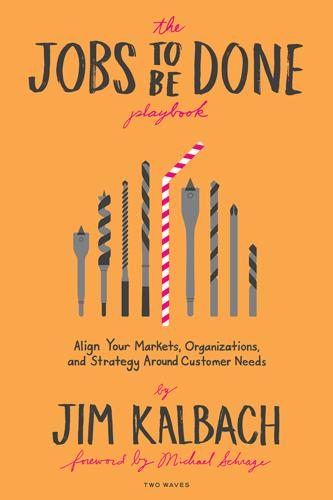
The Jobs to Be Done Playbook: Align Your Markets, Organization, and Strategy Around Customer Needs
by
Jim Kalbach
Published 6 Apr 2020
See Henrik Kniberg and Anders Ivarsson, “Scaling Agile @ Spotify with Tribes, Squads, Chapters & Guilds” (white paper, October 2012), https://blog.crisp.se/wp-content/uploads/2012/11/SpotifyScaling.pdf 6. Clayton Christensen, Taddy Hall, Karen Dillon, and David S. Duncan, Competing Against Luck (New York: HarperBusiness, 2016). 7. See William Lazonick, “Profits Without Prosperity,” Harvard Business Review (September 2014). 8. See Michael Porter and Mark Kramer, “Creating Shared Value,” Harvard Business Review (January–February 2011). 9. Clayton Christensen, Scott Cook, and Taddy Hall, “Marketing Malpractice: The Cause and the Cure,” Harvard Business Review (December 2005). 10.
…
Indeed, process need, unlike the other sources of innovation, does not start out with an event in the environment, whether internal or external. It starts out with the job to be done. But neither Drucker nor Levitt used the label “job to be done” in any consequential way to refer to their ideas or approaches to solving business problems. It wasn’t until Clayton Christensen popularized the term in The Innovator’s Solution, the follow-up to his landmark work, The Innovator’s Dilemma, that the concept became widespread. Although modern references of JTBD point back to Christensen, definitions of JTBD vary in practice. Table 1.1 at the end of this chapter presents how a “job” is defined by thought leaders in the field.
…
In qualitative interviews, ODI uncovers all of the desired outcomes that people want from getting a job done in a given domain. In a separate step, these desired outcomes are prioritized with a quantitative survey. ODI increases the adoption of innovation by creating products that address unmet needs. MILKSHAKE MARKETING REVISITED Harvard Business School professor Clayton Christensen often frames JTBD with a story involving milkshakes. He and his team were reportedly working with McDonald’s to understand how to improve milkshake sales. Previously, the fast-food chain had tried changes to their milkshakes—making them thicker, chunkier, fruitier, etc. They also segmented consumers by demographics (e.g., age group) and tried to match those categories to different product variations.
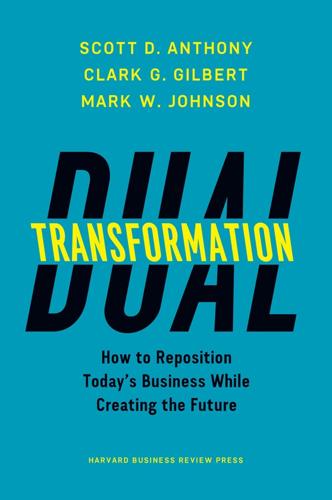
Dual Transformation: How to Reposition Today's Business While Creating the Future
by
Scott D. Anthony
and
Mark W. Johnson
Published 27 Mar 2017
Chapter 3 describes how succeeding with transformation B requires three actions: identifying a historically constrained market that disruptive forces will open, iteratively developing a business model to win in that market, and acquiring or hiring complementary capabilities to compete successfully against new and emerging competitors. Xerox: The Capabilities Link Now for the C part of the equation, the capabilities link. In 1997, Innosight cofounder and Harvard Business School professor Clayton Christensen released The Innovator’s Dilemma, describing how well-run incumbents fail in the face of disruptive change. The capabilities link flips the dilemma. It allows a company to strike a balance wherein it leverages just enough capabilities to gain an advantage versus other competitors, but not so many capabilities that by definition its ability to do something new is constrained.
…
Driving Transformation A: Four Lessons The essence of transformation A is changing the how—finding more effective and efficient ways to address customer needs to maximize the resilience and relevance of your historical core business. At first blush, this kind of change sounds straightforward enough. After all, you don’t have to discover or demonstrate that you’re targeting a real market need. However, companies often find it painfully difficult to change how they operate. Clayton Christensen’s famous book The Innovator’s Dilemma contains numerous case examples of market leaders in industries, ranging from steel to accounting software, that struggled to respond when an entrant emerged with a disruptive way to solve an existing problem. As coauthor Mark Johnson details in his 2010 book Seizing the White Space, the core problem is that over time companies develop rules, norms, and metrics designed to perpetuate how they create, capture, and deliver value.
…
Although customers often struggle to describe what they want, they often are eloquent in explaining what they’re trying to accomplish, the reasons they pick one solution over another, their frustrations with existing solutions, and so on. More specifically, you need to do one of two things. Either conduct detailed research (if you do, we highly recommend reading Competing Against Luck, a 2016 book by Clayton Christensen, our colleague David Duncan, Taddy Hall, and Karen Dillon) or rely on the accumulated experience of your team to provide detailed answers to these five questions. Why have people historically bought from us? What do we provide that they really care about? What is the disruptive shift in our market?
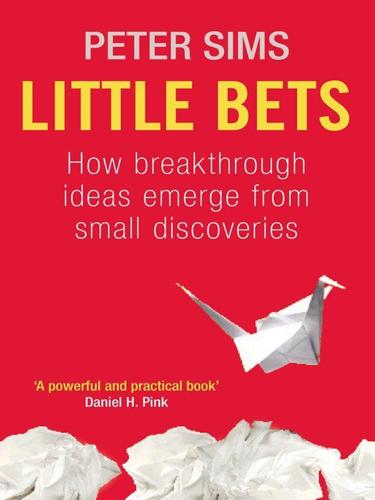
Little Bets: How Breakthrough Ideas Emerge From Small Discoveries
by
Peter Sims
Published 18 Apr 2011
HP sixty year compounded annual growth rate reference from Barnholt discussion as well as from “Garage Gives Birth to Measurement Giant” by John Minck and Barry Manz, Microwaves & RF, August 2001. Faced with the need for large chunks of revenue growth, big bets are a mistake that corporate managers repeatedly make, consistent with the empirical findings in The Innovator’s Dilemma by Clayton Christensen, Collins Business (2003), and The Innovator’s Solution by Clayton Christensen and Michael Raynor, Harvard Business, 2003. Jim Collins presents similar insights in How the Mighty Fall, self-published (2009). “Achieving failures” reference taken from interview with Eric Ries. West Point education programs and evolution in military thinking and training: Interviews with Colonel Casey Haskins, Major Donald Vandergriff, and Brigadier General H.R.
…
Dyer and Gregersen found that, like Yunus the anthropologist, exemplar innovators closely observed details, particularly about other people’s behaviors. “In observing others, they act like anthropologists and social scientists,” Dyer and Gregersen wrote in their Harvard Business Review study summary (coauthored with Harvard Business School Professor Clayton Christensen). The authors frequently cite Steve Jobs, who is well known around Silicon Valley for constantly studying the world for ideas. Leander Kahney, author of Inside Steve’s Brain, captures Jobs’ insatiable curiosity well. Jobs noticed the first graphical interface on a visit to Xerox’s PARC research center in 1979, which would later inform the Macintosh’s interface.
…
Collins, Jim. How the Mighty Fall. Jim Collins, 2009. In this book, Collins examines patterns companies tend to follow from success to decline and supports that general arc with rich case studies. The patterns Collins highlights closely resemble the patterns from psychology literature, as well as Clayton Christensen’s research in The Innovator’s Solution. Collins’s stages of organizational decline and case studies, such as the risk of big bets, are very insightful. Collins, Jim and Jerry Porras. Built to Last. New York: HarperCollins, 1997. Jim Collins, who would later write Good to Great, was a professor at Stanford Business School with Professor Jerry Porras when they wrote this book.

A More Beautiful Question: The Power of Inquiry to Spark Breakthrough Ideas
by
Warren Berger
Published 4 Mar 2014
Indeed, Rothstein’s downward-sloping question-asking chart continues to plummet right through the college years. University professors I interviewed confirmed a dearth of student questions, even among bright Ivy Leaguers. “For twenty years I’ve been teaching at the Harvard Business School,” professor Clayton Christensen told me. “And I love this place, but the intuition to ask questions, the curiosity, is much less than twenty years ago.” As to the cause: “If all you do as you’re growing up is watch stuff on a screen—or go to school, where they give you the answers—then you don’t develop the instinct for asking questions,” Christensen said.
…
40 In studying “master questioners,” Hal Gregersen inquired about their childhoods and found that most had “at least one adult in their lives who encouraged them to ask provocative questions.” The Nobel laureate scientist Isidor Isaac Rabi was one such child; when he came home from school, “while other mothers asked their kids ‘Did you learn anything today?’ [my mother ] would say, ‘Izzy, did you ask a good question today?’” Clayton Christensen thinks parents can help their kids be more inquisitive by posing what if questions “that invite children to think deeply about the world around them.” But Christensen thinks it’s also important to encourage kids to solve problems in a hands-on way, via challenging household tasks and chores.
…
How can we make a better experiment? If we brainstorm in questions, will lightning strike? Will anyone follow a leader who embraces uncertainty? Should mission statements be mission questions? How might we create a culture of inquiry? Why do smart businesspeople screw up? Clayton Christensen is today considered one of the foremost experts on business innovation. A veteran professor at the Harvard Business School, Christensen introduced the term disruptive innovation1 into the business lexicon two decades ago, and it has become both a cliché and a driving force in business ever since.

The Future of the Professions: How Technology Will Transform the Work of Human Experts
by
Richard Susskind
and
Daniel Susskind
Published 24 Aug 2015
McKenna, The World’s Newest Profession: Management Consulting in the Twentieth Century (2010). 226 Sophie Christie, ‘Tesco Clubcard vs Nectar: Best loyalty schemes’, Telegraph, 30 Aug. 2013 <http://www.telegraph.co.uk> (accessed 8 March 2015). 227 Walter Kiechel, The Lords of Strategy: The Secret Intellectual History of the New Corporate World (2010), 65. 228 See ‘Q1 2014 Revenue up 2.3 percent Crossed the 50,000 Employee Threshold in India’, CapGemini Newsroom, 29 April 2014 <http://www.capgemini.com/investor/press/q1-2014-revenue-up-23-crossed-the-50000-employee-threshold-in-india> (accessed 8 March 2015); Mini Joseph Tejaswi, ‘Accenture to hire aggressively in India’, Times of India, 18 July 2012 <www.timesofindia.indiatimes.com> (accessed 8 March 2015). 229 Clayton Christensen, Dina Wang, and Derek van Bever, ‘Consulting on the Cusp of Disruption’, Harvard Business Review, Oct. 2013 <https://hbr.org> (accessed 8 March 2015). 230 <http://www.deloittemanagedanalytics.com> (accessed 8 March 2015). 231 Clayton Christensen, Dina Wang, and Derek van Bever, ‘Consulting on the Cusp of Disruption’, Harvard Business Review, Oct. 2013 <https://hbr.org> (accessed 8 March 2015). 232 <http://www.behaviouralinsights.co.uk>. 233 Hal R.
…
Chan Kim and Renée Mauborgne, Blue Ocean Strategy (2005). 4 Clayton Christensen, The Innovator’s Dilemma (1997). 5 Paul Geroski and Constantinos Markides, Fast Second (2005). 6 Philip Augar, The Death of Gentlemanly Capitalism: The Rise and Fall of London’s Investment Banks (2008). 7 Richard Susskind, Tomorrow’s Lawyers (2013), 19–22. 8 This is an updated version of the distinction between ‘automation’ and ‘innovation’ in Richard Susskind, The Future of Law (1996), 49–50. 9 Richard Susskind, Tomorrow’s Lawyers, The End of Lawyers? (2010), and The Future of Law. 10 See Clayton Christensen, The Innovator’s Dilemma (1997), and Jill Lepore, ‘The Disruption Machine’, New Yorker, 23 June 2014. 11 See e.g.
…
In 2014 Associated Press started to use algorithms developed by Automated Insights to computerize the production of several hundred formerly handcrafted earnings reports, producing fifteen times as many as before.218 Forbes now provides similarly for earnings reports and sport, using algorithms developed by Narrative Science.219 The Los Angeles Times uses an algorithm called ‘Quakebot’ (which is currently followed by 95,600 people on Twitter) to monitor the US Geological Survey for earthquake alerts, and automatically to compose articles if an event takes place.220 Users can struggle to tell the difference.221 2.6. Management consulting In 2013 Clayton Christensen claimed, in a Harvard Business Review article, ‘Consulting on the Cusp of Disruption’, that change was ‘inevitable’ in consulting, and that those who had traditionally helped others in management difficulties were themselves ‘being upended’.222 Duff McDonald concluded his book The Firm with the observation that consulting was more ‘hotly contested than it has ever been’.223 Lucy Kellaway suggested in the Financial Times that, ‘fifty years hence, McKinsey won’t exist’.224 Christopher McKenna called the industry ‘the world’s newest profession’, whose status as a profession is ambiguous, and whose future remains uncertain.225 As Christensen notes, the consulting business model has changed little in the past 100 years.

Exponential Organizations: Why New Organizations Are Ten Times Better, Faster, and Cheaper Than Yours (And What to Do About It)
by
Salim Ismail
and
Yuri van Geest
Published 17 Oct 2014
We first identified the ExO paradigm as a weak signal in 2009, and noticed over a two-year period that several new organizations were following a specific model. In 2011, futurist Paul Saffo suggested to Salim that he write this book, and we have been seriously researching the ExO model for the last three years. To do so, we: Reviewed sixty classic innovation management books by such authors as John Hagel, Clayton Christensen, Eric Ries, Gary Hamel, Jim Collins, W. Chan Kim, Reid Hoffman and Michael Cusumano. Interviewed C-Level executives from several dozen Fortune 200 companies with our survey and frameworks. Interviewed or researched ninety top entrepreneurs and visionaries including Marc Andreessen, Steve Forbes, Chris Anderson, Michael Milken, Paul Saffo, Philip Rosedale, Arianna Huffington, Tim O’Reilly and Steve Jurvetson.
…
What they will do, and what they are built to do, is to keep getting bigger in order to take advantage of economies of scale. Scale—but linear scale—is the raison d’être of the linear organization. John Seely Brown calls this “scalable efficiency” and maintains that it is the paradigm that drives most corporate strategy and corporate architectures. Clayton Christensen immortalized this type of thinking in his business classic, The Innovator’s Dilemma: When New Technologies Cause Great Firms to Fall. Most large organizations use what is called a matrix structure. Product management, marketing and sales are often aligned vertically, and support functions such as legal, HR, finance and IT are usually horizontal.
…
Note that today there is a whole category of the media industry—named for the underlying physical media it’s been trying to sell—which is actually made up of information businesses that have now been digitized. We believe the television industry will be the next to fall to the information ax. 3. Disruption is the New Norm In his influential bestseller The Innovator’s Dilemma, Clayton Christensen points out that disruptive innovation rarely comes from the status quo. That is, established industry players are rarely structured or prepared to counter disruption when eventually it appears. The newspaper industry is a perfect example: it sat by for a decade as Craigslist systematically disrupted the classified advertising model.
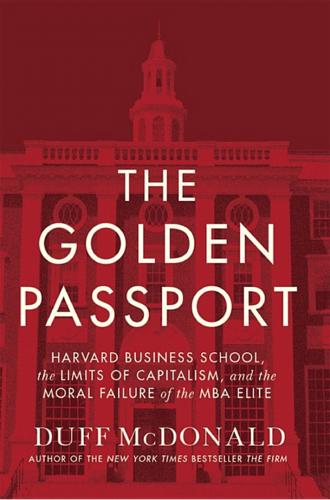
The Golden Passport: Harvard Business School, the Limits of Capitalism, and the Moral Failure of the MBA Elite
by
Duff McDonald
Published 24 Apr 2017
As Jerry Useem suggested in a New York Times article, “Business School, Disrupted,” that question resulted in HBS facing what was, in effect, a choice between the ideas of its two most prominent faculty members—Michael Porter and Clayton Christensen. While a number of its closest competitors, including Wharton and Stanford, had begun offering free so-called massive open online courses, or MOOCs, with the goal of reaching as many people as possible, there were questions about whether doing so posed risks to brands that had taken decades to develop. And so, the choice: Were HBS to hew to the ideas of Michael Porter, the mandates of distinctive positioning that underlie much of his work would argue not just for a fee, but a substantial one. On the other hand, were it to hew to the ideas of Clayton Christensen, the mandates of disruption that underlie much of his work would argue for making it cheap and for responding quickly.
…
“Certain things about modern corporate society are unseemly and suboptimal,” says Gerald, “but HBS could play a role in determining the remedy. We need them to, as the only ones who can really untangle these knots are the ones in power.” He then proposes another way to look at it: “HBS professor Clayton Christensen talks about resources, priorities, and processes. The resources are there. But what about the processes people go through from day one at HBS until they graduate? How are they designed? Intention can have huge effects. As for priorities, we need only look at the people they celebrate and recognize.
…
A Harvard MBA (’88) and Baker Scholar, Wetlaufer had worked as a reporter at the Miami Herald and the Associated Press, as well as a consultant at Bain & Company. It seemed, for a time, as if they’d finally landed on a keeper. The magazine increased its frequency to ten times a year, cast a wider net for stories, and made some great hires. One notable piece: In 2000, Clayton Christensen and Michael Overdorf’s article, “Meeting the Challenge of Disruptive Change,” thrust Christensen’s theory of disruption into the national conversation. But Wetlaufer’s personal life was unraveling. Married with four children when she joined HBR in 1996, she and her husband divorced in June 2000.
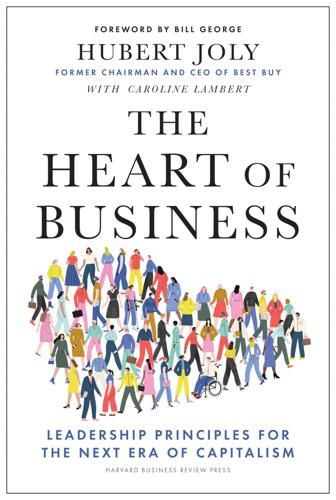
The Heart of Business: Leadership Principles for the Next Era of Capitalism
by
Hubert Joly
Published 14 Jun 2021
Emma Seppälä, “What Bosses Gain by Being Vulnerable,” Harvard Business Review, December 11, 2014, https://hbr.org/2014/12/what-bosses-gain-by-being-vulnerable. 2. Rodolphe Durand and Chang-Wa Huyhn, “Approches du Leadership, Livret de Synthèse,” HEC Paris, Society and Organizations Institute, n.d. 3. Clayton Christensen, “How Will You Measure Your Life?,” Harvard Business Review, July–August 2010, https://hbr.org/2010/07/how-will-you-measure-your-life. 4. Christensen, “How Will You Measure Your Life? Chapter Fifteen 1. Clayton Christensen, “How Will You Measure Your Life?,” Harvard Business Review, July–August 2010, https://hbr.org/2010/07/how-will-you-measure-your-life. 2. Marshall Goldsmith and Scott Osman, Leadership in a Time of Crisis: The Way Forward in a Changed World (New York, NY: Rosetta Books, 2020).
…
My choice, obviously critical to me, would also influence how I interact with others and reverberate through organizations by way of the people I put in place to lead others. There were so many models to choose from: bookshelves are full of leadership books advocating different approaches with different leadership labels.2 Clayton Christensen gave this advice to graduating Harvard Business School students in 2010: “Think about the metric by which your life will be judged, and make a resolution to live every day so that in the end, your life will be judged a success.”3 This is a good framing to me. To make a choice about the kind of leader you want to be, think about three things: what drives you, the legacy you want to leave, and how to stay the course.
…
Similarly, both at Carlson and Best Buy, I established values days, during which every employee at the company would spend time discussing the company’s values with their peers, debating how well we were living these values and what we could do to live them more fully. Knowing and doing what is right is not always simple, of course. But Harvard Professor Clayton Christensen points out that it is easier to stick to your principles 100 percent of the time than it is to stick to them 98 percent of the time: the marginal cost of doing something that goes against your values “just this once” might appear temptingly low, but it may ultimately land you in jail, as the waters get muddier and muddier once the first exception gets made.1 So, if you refuse to give in to the “just this once” and remember to tell the truth and do what’s right, choices become easier.
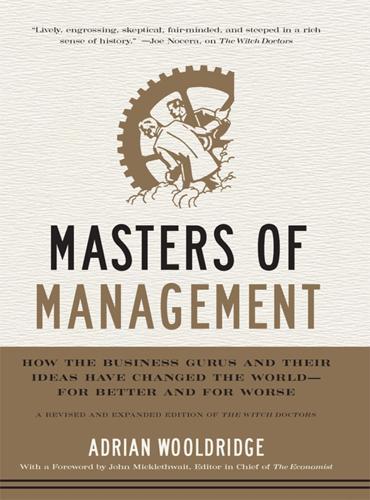
Masters of Management: How the Business Gurus and Their Ideas Have Changed the World—for Better and for Worse
by
Adrian Wooldridge
Published 29 Nov 2011
These days the third world is known as the emerging markets, the Che Guevara T-shirts are made in China, and the wretched of the earth are enjoying growth rates that are the envy of the former colonial powers. Moreover, these emerging markets are likely to shake things up not only in their own backyards but in rich countries, too. Clayton Christensen has coined the term “disruptive innovation” for new products that slash prices and new processes that radically change the way they are made and delivered. Today, many of the most disruptive innovations hail from emerging markets. They will make a bigger difference to life in the West than lean production, the previous great disruptive management innovation from the East.
…
(McKinsey estimates that the achievement gap in education between low-performing states and the rest costs the country up to $700 billion a year, or 5 percent of GDP.5) Why do some nurses spend only 40 percent of their time with patients? People who are armed with these facts will put constant pressure on public services to explain and improve. The second idea goes under the very ungentlemanly name of disruptive innovation. Clayton Christensen made his reputation looking at the way disruptive innovators have reconfigured markets and boosted productivity in the private sector. More recently, he has devoted a lot of his energy to the public sector, most provocatively to education. In Disrupting Class: How Disruptive Innovation Will Change the Way the World Learns, he argues that the education system was designed for a world where most students go on to do repetitive jobs and where teachers were confronted by large classes and confined by the technology of “chalk and talk.”6 But the information revolution is about to disrupt this model: the arrival of ever cheaper and ever more powerful computers is making it possible to customize courses for the needs of individual students.
…
The master’s lectures are packed with sad-sack people who are looking for a quick fix for their multiplying problems. But Covey is also a paid-up member of the management theory club, with an MBA from Harvard Business School and glowing endorsements from serious thinkers such as Warren Bennis and Clayton Christensen. He claims that one of his biggest inspirations was Peter Drucker, who insisted that “effectiveness is a habit” and provided him one of his seven habits, “first things first,” which, for reasons that are never explained, is number three in his list. FranklinCovey claims that 90 percent of Fortune 500 and 70 percent of Fortune 1000 companies are clients.

The Internet Is Not the Answer
by
Andrew Keen
Published 5 Jan 2015
And certainly the Kodak tragedy can be seen, at least in part, as a parable of a once-mighty monopolist, a Google of the industrial age, that couldn’t adapt to the digital revolution. Yes, Kodak failed to become a leader in digital photography, in spite of the fact that the company actually invented the digital camera, back in 1975.54 Yes, Kodak is, in part, a victim of what Harvard Business School professor Clayton Christensen calls, in his influential 2011 book about why businesses fail, The Innovator’s Dilemma,55 the challenge of a once-dominant incumbent having to disrupt its own business model. Yes, a string of myopic executives failed to reinvent Kodak, with the result that a great company that up until the 1990s was often listed among the world’s top five most valuable brands56 has now become synonymous with failure.
…
Welcome to what Joshua Cooper Ramo, the former executive editor of Time magazine, calls “the age of the unthinkable.” It’s a networked age, Ramo says, in which “conformity to old ideas is lethal”58 and predictability and linearity have been replaced by what he calls an “epidemic” of self-organization where no central leadership is required. This is an age so destructively unthinkable, in fact, that Clayton Christensen’s theory of the “Innovator’s Dilemma,” which suggests an orderly cycle of disruptors, each replacing the previous economic incumbent, now has itself been blown up by an even more disruptive theory of early-twenty-first-century digital capitalism. Christensen’s ideas have themselves been reinvented by the bestselling business writers Larry Downes and Paul F.
…
Keith recommended me to Paul Carr and Jon Orlin at TechCrunchTV, and my show Keen On . . . was the first program on the network, running for four years and including over two hundred interviews with leading Internet thinkers and critics. In particular, I’d like to thank Kurt Andersen, John Borthwick, Stewart Brand, Po Bronson, Erik Brynjolfsson, Nicholas Carr, Clayton Christensen, Ron Conway, Tyler Cowen, Kenneth Cukier, Larry Downes, Tim Draper, Esther Dyson, George Dyson, Walter Isaacson, Tim Ferriss, Michael Fertik, Ze Frank, David Frigstad, James Gleick, Seth Godin, Peter Hirshberg, Reid Hoffman, Ryan Holiday, Brad Horowitz, Jeff Jarvis, Kevin Kelly, David Kirkpatrick, Ray Kurzweil, Jaron Lanier, Robert Levine, Steven Levy, Viktor Mayer-Schönberger, Andrew McAfee, Gavin Newsom, George Packer, Eli Pariser, Andrew Rasiej, Douglas Rushkoff, Chris Schroeder, Tiffany Shlain, Robert Scoble, Dov Seidman, Gary Shapiro, Clay Shirky, Micah Sifry, Martin Sorrell, Tom Standage, Bruce Sterling, Brad Stone, Clive Thompson, Sherry Turkle, Fred Turner, Yossi Vardi, Hans Vestberg, Vivek Wadhwa, and Steve Wozniak for appearing on Keen On . . . and sharing their valuable ideas with me.
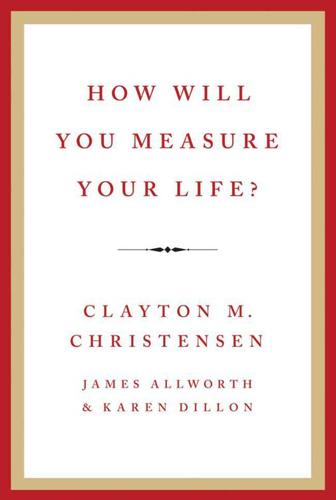
How Will You Measure Your Life?
by
Christensen, Clayton M.
,
Dillon, Karen
and
Allworth, James
Published 15 May 2012
It is quite stunning to see how accurately the plot in these movies has predicted the results from the actions that we have chosen. I am grateful beyond words for their courage in making the choices that have brought us such happiness. I dedicate this book to them—and hope that the thoughts in this book will help you, as they have helped us. —Clayton Christensen I MUST CONFESS: if you’d told me three years ago, just before I was to embark on an adventure to business school in a faraway land, that I was going to come out the other side as the coauthor of a book … well, I almost certainly would not have believed you. If you had told me that it was going to be a book based upon applying some of the most rigorous business theories in the world to finding happiness and fulfillment in life … well, in that case, I might have even laughed.
…
We have poured our hearts into this in the hope that we might be able to help you, and that would have been in vain were you not so generous to give us a chance to do so. I truly, truly hope that you’re able to get as much out of these pages as I did in helping to craft them. —James Allworth MEETING CLAYTON CHRISTENSEN changed my life. In the spring of 2010, as the editor of Harvard Business Review magazine, I had been casting around for an article that would add a little extra something to our summer 2010 double issue. I realized that the students about to graduate from Harvard Business School that spring had applied to business school when the economy was still rosy and everything seemed possible—but they were now graduating into a world of uncertainty.
…
I haven’t regretted a single decision I’ve made since the day I first left Clay’s office. It’s been an honor to work with my coauthors, Clay and James, on this book. This book is a reflection of many, many hours of discussion and debate among the three of us. I consider myself lucky to have had the invaluable benefit of a private tutorial in the theories of Clayton Christensen. But more important, I consider myself privileged to have had the chance to collaborate with a man who is brilliant, kind, and generous not some of the time, not much of the time, but all of the time. And James. I couldn’t possibly have imagined the journey we’d go on together when we first spoke back in the spring of 2010.

The End of Nice: How to Be Human in a World Run by Robots (Kindle Single)
by
Richard Newton
Published 11 Apr 2015
“But there is also something predictable in the way the fear and apathy encountered at the beginning are accountable for the feelings of elation at the end. These intensities of the creative process can stimulate desires of consistency and control but history affirms that few transformative experiences are generated by regularity.” In organisations the great horror is failure. As the Harvard Professor, Clayton Christensen’s dissection of the Innovator’s Dilemma showed, safe and incremental thinking leads businesses to conspire in their own demise. The bigger a business becomes the more powerfully its culture presses down on riskier decisions and disruptive thinking. The message “Don’t screw up a good thing”, breathes through the air-conditioned corridors, from the walls, the logo, the share options and the annual bonus.
…
Our past interests will determine what we are exposed to in the future, leaving less room for the unexpected encounters that spark creativity, innovation, and the democratic exchange of ideas. The chance of anti-order starts to get squeezed. There’s a similarity here with the limitations of traditional business school thinking that Clayton Christensen has warned about in his book The Innovator’s Dilemma. If we rely solely on past data to inform our future direction, then we will be like the giant enterprises who didn’t realise that at the fringes of their world disruptive innovators were planning to revolutionise and consume their markets.

Essentialism: The Disciplined Pursuit of Less
by
Greg McKeown
Published 14 Apr 2014
But what most people don’t realize is that the problem is not just that the boundaries have been blurred; it’s that the boundary of work has edged insidiously into family territory. It is hard to imagine executives in most companies who would be comfortable with employees bringing their children to work on Monday morning, yet they seem to have no problem expecting their employees to come into the office or to work on a project on a Saturday or Sunday. Clayton Christensen, the Harvard business professor and author of The Innovator’s Dilemma, was once asked to make just such a sacrifice. At the time, he was working at a management consulting firm, and one of the partners came to him and told him he needed to come in on Saturday to help work on a project. Clay simply responded: “Oh, I am so sorry.
…
They distract us from our purpose. They care only about their own agendas, and if we let them they prevent us from making our highest level of contribution by siphoning our time and energy off to activities that are essential to them, rather than those that are essential to us. So how do we take a page from Jin-Yung and Clayton Christensen and set the kinds of boundaries that will protect us from other people’s agendas? Below are several guidelines for your consideration. DON’T ROB PEOPLE OF THEIR PROBLEMS I am not saying we should never help people. We should serve, and love, and make a difference in the lives of others, of course.
…
I wrote about this subject further in a blog post for Harvard Business Review called “The One Thing CEOs Need to Learn from Apple,” April 30, 2012 6. King, third foreword to Ibid., xix. 7. Alan D. Williams, “What Is an Editor?” in Editors on Editing: What Writers Need to Know About What Editors Do, 3rd rev. ed., ed. Gerald Gross (New York: Grove Press, 1993), 6. 14. LIMIT 1. Some minor details changed. 2. Based on a talk Clayton Christensen gave to students at the Stanford Law School in 2013 3. Henry Cloud and John Townsend, Boundaries: When to Say Yes, How to Say No (Grand Rapids, MI: Zondervan, 1992), 29–30. 4. I have found this story cited in several places: for example, Jill Rigby’s Raising Respectful Children in an Unrespectful World (New York: Simon & Schuster, 2006), ch. 6.
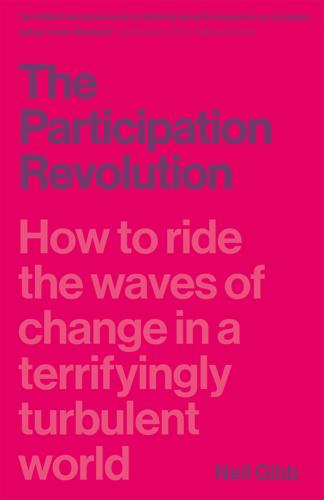
The Participation Revolution: How to Ride the Waves of Change in a Terrifyingly Turbulent World
by
Neil Gibb
Published 15 Feb 2018
Indonesia played a critical part in the social and economic transformation of the Renaissance, as the Dutch colonised it and made it the centre of the world’s coffee production. For more than 300 years, bar four years of British rule, Indonesia was run by the Dutch. Today, though, apart from a few canals and old buildings, there is very little left behind. It was an extractive process, designed to make the merchants who were trading the coffee rich. In 1995, Clayton Christensen, a professor at the Harvard Business School, introduced the term “disruptive innovation” in his book The Innovator’s Dilemma. As the twin forces of digital technology and globalisation have shaken up and disrupted just about every aspect of our lives in the 21st century, disruptive innovation has become the rallying cry of a generation.
…
With its size and resources, it would have been a piffling investment. The reason it didn’t, though, was because it had become obsessed with what it did rather than why it did it. It had become preoccupied with getting people to consume more of its products rather than why they actually wanted to take photographs. In 1995, Clayton Christensen, a professor at the Harvard Business School, introduced the term “disruptive innovation” in his book The Innovator’s Dilemma. What Christensen was referring to in his book’s title was how, at certain points in history, the emergence of new and radical technologies has totally disrupted established business models and businesses – in some cases, completely sweeping them away.
…
By relaxing the need to control, and letting everyone get on with delivering on the social mission, surly staff become passionate participants, actively engaged. Toxic cultures become creative, healthy, and highly productive environments in which everyone thrives. We are at the beginning of what is perhaps the greatest period of social and technological change there has ever been, and the disruptive side effects Clayton Christensen predicted are everywhere to be seen – from once-safe businesses and business models to political systems and cultures. Nothing will be untouched. We all have a choice. We can try and hold on to and maintain social, political, and business mind-sets that no longer work. Or we can model and join the participatory innovators who are successfully reshaping the world.
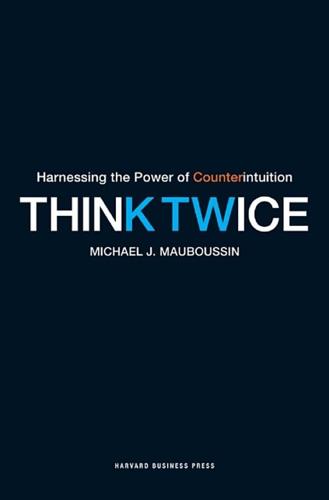
Think Twice: Harnessing the Power of Counterintuition
by
Michael J. Mauboussin
Published 6 Nov 2012
In particular, Bill Miller and Kyle Legg provided me with the needed flexibility to take on this challenge, and I hope that I can repay their confidence in full. A number of people graciously shared their time and knowledge with me. They told me stories, clarified points, or aimed me in the right direction when I was off track. These include Orley Ashenfelter, Greg Berns, Angela Freymuth Caveney, Clayton Christensen, Katrina Firlik, Brian Roberson, Phil Rosenzweig, Jeff Severts, Thomas Thurston, and Duncan Watts. Getting ideas right is not always easy. I was privileged to have a small group, each a leader in his field, read and critique sections of the book. My thanks to Steven Crist, Scott Page, Tom Seeley, Stephen Stigler, Steve Strogatz, and David Weinberger.
…
Most professionals are wary of the word theory because they associate it with something that is impractical. But if you define theory as an explanation of cause and effect, it is eminently practical. Sound theory helps to predict how certain decisions lead to outcomes across a range of circumstances. Paul Carlile and Clayton Christensen, both professors of management, describe the process of theory building in three stages.6 • The first stage is observation, which includes carefully measuring a phenomenon and documenting the results. The goal is to set common standards so that subsequent researchers can agree on the subject and the terms to describe it
…
Applying the theory that specifies when innovations succeed, he was able to predict, without knowledge of the outcomes, a statistically significant 85 percent of successes and failures.19 Further, he was able to identify where some of the failed businesses had gone wrong. Thurston then teamed up with Clayton Christensen to teach the theory to business school students. Their first pass at sorting the winners and losers was close to random, but by the end of the semester the students sorted with over 80 percent accuracy. The progress shows the theory’s value and that the students can learn the lessons and improve performance. 2.

The Wide Lens: What Successful Innovators See That Others Miss
by
Ron Adner
Published 1 Mar 2012
In writing the book I have benefited tremendously from the support, advice, and critical feedback of a host of individuals who gave generously of both their time and their insight: Howard Anderson, Julia Batavia, Diane E. Bilotta, Manish Bhandari, Adam Brandenburger, Colin Blaydon, Michael Brimm, Clayton Christensen, Sarah Cliffe, Rudi Coetzee, Dr. Richard J. Comi, Donald Conway, Richard D’Aveni, Yves Doz, Gregg Fairbrothers, Javier Gimeno, Ronny Golan, Vijay Govindarajan, Lars Guldbaek Karlsen, Morten Hansen, Peter Hanson, Hal Hogan, Natalie Horbachevsky, Bob Howell, Barak Hershkovitz, Chris Huston, Chan Kim, Jim Komsa, Kim LaFontana, Karim R.
…
Cooper’s Winning at New Products: Creating Value Through Innovation (New York: Basic Books, 2011). 5 72 percent of senior executives: Boston Consulting Group report, “Innovation 2010.” 5 two schools of thought: All great management books consider multiple facets of the problem but focus on different aspects. Insightful exemplars within the customer-focus school are Clayton Christensen’s The Innovator’s Dilemma: When New Technologies Cause Great Firms to Fail (Boston: Harvard Business School Press, 1997); W. Chan Kim and Renée Mauborgne’s Blue Ocean Strategy (Boston: Harvard Business School Press, 2004); Geoffrey Moore’s Crossing the Chasm (New York: HarperBusiness, 1991); George Day’s Market Driven Strategy: Processes for Creating Value (New York: Free Press, 1999); and J.
…
[ CHAPTER 4 ] 84 value chains and supply chains: Classic books on value chains include Michael Porter’s Competitive Advantage (New York: Free Press, 1998) and Charles Fine’s Clockspeed (New York: Perseus Books, 1998). Adam Brandenburger and Barry Nalebuff introduce the role of complementors in Co-opetition (New York: Currency, 1996), and Clayton Christensen discusses the roles of value networks in affecting innovation incentives in The Innovator’s Dilemma (Boston: Harvard Business School Press, 1997). The value blueprint builds on these perspectives, with a focus on designing the most effective configuration to deliver the value proposition. 88 $550 device: “Sony Shows Data Discman,” New York Times, September 13, 1991. 88 The Rocket, developed by NuvoMedia: Martin Arnold, “From Gutenberg to Cyberstories,” New York Times, January 7, 1999. 88 That same year the SoftBook: Peter Lewis, “Taking on New Forms, Electronic Books Turn a Page,” New York Times, July 2, 1998. 88 Gemstar released two models: Ken Feinstein, “RCA REB1100 eBook Review,” CNET.com, February 21, 2001, http://reviews.cnet.com/e-book-readers/rca-reb1100-ebook/4505-3508_7-4744438.xhtml. 89 proof that the electronic book was ready for the mainstream: Doreen Carvajal, “Long Line Online for Stephen King E-Novella,” New York Times, March 16, 2000. 90 Random House’s e-book revenues doubled: Nicholas Bogaty, “eBooks by the Numbers: Open eBook Forum Compiles Industry Growth Stats,” International Digital Publishing Forum, press release, July 22, 2002, http://old.idpf.org/pressroom/pressreleases/ebookstats.htm. 90 “difficult to find, buy and read e-books”: Steven Levy, “The Future of Reading,” Newsweek, November 26, 2007. 90 Paltry content and intense digital rights management: Ginny Parker Woods, “Sony Cracks Open New Book with Reader,” Toronto Star, February 20, 2006. 90 “We’ve been very cautious in launching [the Reader]”: Michael Kanellos, “Sony’s Brave Sir Howard,” CNET.com, January 17, 2007, http://news.cnet.com/Sonys-brave-Sir-Howard/2008-1041_3-6150661.xhtml. 90 almost 20 percent cheaper than the Librié: Sony Librié ebook Review, eReaderGuide.Info, www.ereaderguide.info/sony_librie_ebook_reader_review.htm. 90 10,000 titles available at Connect.com: Edward Baig, “Sony Device Gets E-Book Smart,” USA Today, October 5, 2006. 91 the iPod of the book industry: David Derbyshire, “Electronic BookOpens New Chapter for Readers,” Daily Telegraph, September 28, 2006. 91 much fanfare from the press: Amanda Andrews, “Sony’s Hitting the Books,” Australian, February 28, 2006. 92 lowering publisher confidence: George Cole, “Will the eBook Finally Replace Paper?
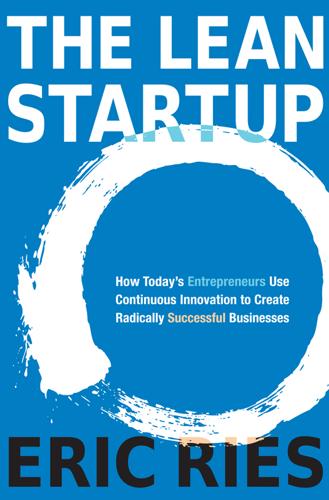
The Lean Startup: How Today’s Entrepreneurs Use Continuous Innovation to Create Radically Successful Businesses
by
Eric Ries
Published 13 Sep 2011
Even after a company achieves initial success, it must continue to pivot. Those familiar with the technology life cycle ideas of theorists such as Geoffrey Moore know certain later-stage pivots by the names he has given them: the Chasm, the Tornado, the Bowling Alley. Readers of the disruptive innovation literature spearheaded by Harvard’s Clayton Christensen will be familiar with established companies that fail to pivot when they should. The critical skill for managers today is to match those theories to their present situation so that they apply the right advice at the right time. Modern managers cannot have escaped the deluge of recent books calling on them to adapt, change, reinvent, or upend their existing businesses.
…
See also Chapter 14, “Join the Movement.” Chapter 1. Start 1. Manufacturing statistics and analysis are drawn from the blog Five Thirty Eight: http://www.fivethirtyeight.com/2010/02/us-manufacturing-is-not-dead.html Chapter 2. Define 1. The Innovator’s Dilemma is a classic text by Clayton Christensen about the difficulty established companies have with disruptive innovation. Along with its sequel, The Innovator’s Solution, it lays out specific suggestions for how established companies can create autonomous divisions to pursue startup-like innovation. These specific structural prerequisites are discussed in detail in Chapter 12. 2.
…
For more, see http://platformsandnetworks.blogspot.com/2011/01/launching-tech-ventures-part-i-course.html 8. http://www.robgo.org/post/568227990/product-leadership-series-user-driven-design-at 9. http://venturebeat.com/2010/02/11/confirmed-google-buys-social-search-engine-aardvark-for-50-million/ 10. This is the heart of the Innovator’s Dilemma by Clayton Christensen. 11. For more, see http://bit.ly/DontLaunch Chapter 7. Measure 1. By contrast, Google’s main competitor Overture (eventually bought by Yahoo) had a minimum account size of $50, which deterred us from signing up, as it was too expensive. 2. For more details about Farb’s entrepreneurial journey, see this Mixergy interview: http://mixergy.com/farbood-nivi-grockit-interview/ Chapter 8.
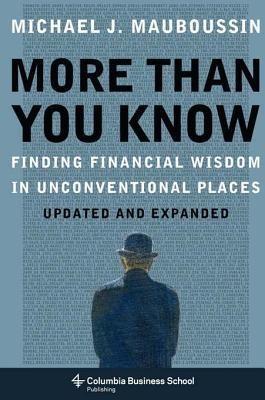
More Than You Know: Finding Financial Wisdom in Unconventional Places (Updated and Expanded)
by
Michael J. Mauboussin
Published 1 Jan 2006
Both Al and Bill have always been gracious with their time, and have taught me with patience. They are great role models, and I feel privileged to be associated with both of them. These essays draw from the work of many fabulous scientists, too many to list individually. But a handful of thinkers deserve special mention, including Clayton Christensen, Paul DePodesta, Norman Johnson, Scott Page, Jim Surowiecki, and Duncan Watts. Thanks to each of you for sharing your ideas with me so generously. Steve Waite’s suggestions were also of great benefit to me. I’d like to thank Myles Thompson, my publisher and editor at Columbia University Press, for his boundless enthusiasm and unwavering belief in the power of these ideas.
…
We can say the same about much of management theory.4 More specifically, investors generally dwell on attribute-based categorizations (like low multiples) versus circumstance-based categorizations. A shift from attribute- to circumstance-based thinking can be of great help to investors and managers. Take a lesson from the slime mold. The Three Steps of Theory Building In a thought-provoking paper, Clayton Christensen, Paul Carlile, and David Sundahl break the process of theory building into three stages (see exhibit 4.1). I discuss each of these stages and provide some perspective on how this general theory-building process applies specifically to investing:1. Describe what you want to understand in words and numbers.
…
EXHIBIT 36.3 Average Annual Growth Rate for Companies Entering the Fortune 50 Source: Reprinted with permission from Corporate Strategy Board, “Stall Points,” 15. Copyright 1998 AAAS. Advising companies what to do in the face of slowing growth is an industry in and of itself. It is true that large companies have a difficult time innovating as successfully as smaller companies for a host of reasons. I enthusiastically recommend a book by Clayton Christensen and Michael Raynor, The Innovator’s Solution, which provides managers with a useful innovation framework. But the truth is that not all companies can grow rapidly forever. Extrapolative Expectations A review of the evidence on firm size and growth rates suggests that investors should temper their growth expectations as companies get larger.

WTF?: What's the Future and Why It's Up to Us
by
Tim O'Reilly
Published 9 Oct 2017
The commoditization of operating systems, databases, web servers and browsers, and related software was indeed threatening to Microsoft’s core business. But that destruction created the opportunity for the killer applications of the Internet era. It is worth remembering this history when contemplating the effect of on-demand services like Uber, self-driving cars, and artificial intelligence. I found that Clayton Christensen, the author of The Innovator’s Dilemma and The Innovator’s Solution, had developed a framework that explained what I was observing. In a 2004 article in Harvard Business Review, he articulated “the law of conservation of attractive profits” as follows: “When attractive profits disappear at one stage in the value chain because a product becomes modular and commoditized, the opportunity to earn attractive profits with proprietary products will usually emerge at an adjacent stage.”
…
Intel had done this by becoming the sole source for the processor, the brain of the PC. Microsoft had done it by controlling access to its software operating system. Open source software and the open communications protocols of the Internet had changed the game for Microsoft and Intel. But my map told me that the game didn’t end there. Per Clayton Christensen’s Law of Conservation of Attractive Profits, I knew that something else was going to become valuable. In a word: data. In particular, I thought that building a critical mass of user-contributed data led to self-reinforcing network effects. The term network effect generally refers to systems that gain in utility the more people use them.
…
Meanwhile, the declining cost of anything made by machines would argue that the work that humans alone can do should become more rather than less valuable. The remainder of this chapter will discuss some ways in which that future is and is not unfolding. The chorus of doubt about the jobless future sounds remarkably similar to the one that warned of the death of the software industry due to open source software. Clayton Christensen’s Law of Conservation of Attractive Profits holds true here too. When one thing becomes commoditized, something else becomes valuable. We must ask ourselves what will become valuable as today’s tasks become commoditized. CARING AND SHARING What might we do with our time, if there were a universal basic income sufficient to meet the necessities of life, or if paid working hours were reduced by the same amount as domestic labor, and wages increased?
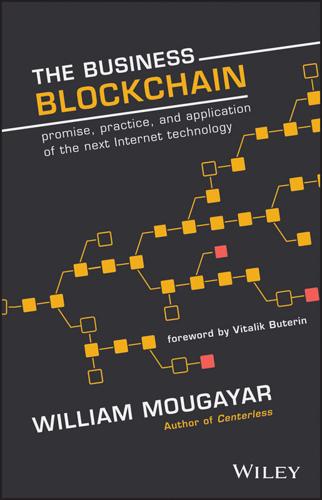
The Business Blockchain: Promise, Practice, and Application of the Next Internet Technology
by
William Mougayar
Published 25 Apr 2016
Just as we continued to scale the Internet 30 years after its invention, we will continue to solve and update the blockchain’s scalability needs. Just as we continued to update automobile safety regulations in ways that were unforeseen during the invention moment, we will continue to update the regulatory requirements around the blockchain over the lifetime of its evolution. NOTES 1. A term popularized in Clayton Christensen’s book (The Innovator’s Dilemma) suggesting that successful companies can put too much emphasis on customers’ current needs, and fail to adopt new technology or business models, https://en.wikipedia.org/wiki/The_Innovator%27s_Dilemma. List of U.S. executive branch czars, https://en.wikipedia.org/wiki/List_of_U.S.
…
IDC Study, http://www.infoq.com/news/2014/01/IDC-software-developers. 5. These are popular programming languages. 6. https://cryptoconsortium.org/ 4 BLOCKCHAIN IN FINANCIAL SERVICES “The worst place to develop a new business model is from within your existing business model.” –CLAYTON CHRISTENSEN FINANCIAL SERVICES INSTITUTIONS will be challenged by how much they are willing to bend their business models to accommodate the weight of the blockchain. Their default position will be to only slightly open the door, expecting to let as many benefits seep in, with the least amount of opening.

Googled: The End of the World as We Know It
by
Ken Auletta
Published 1 Jan 2009
Makes Official Complaint to China over Internet Censorship,” Financial Times, June 22, 2009. 331 “What Google should fear”: author interview with Yossi Vardi, February 28, 2008. 331 When Marissa Mayer said: author interview with Mayer, August 21, 2007. 331 “What separates us”: author interview with Stacey Savides Sullivan, August 21, 2007. 331 “are utopians”: author interview with Terry Winograd, September 25, 2007. 332 In the 1990s: an excellent exploration of long-term capital’s demise is contained in Roger Lowenstein’s When Genuis Failed: The Rise and Fall of f Long-Term Capital Management, Random House, 2000. 332 “’Google returned links”: Nat Ives, “Media Giants Want to Top Google Results,” Advertising Age, March 23, 2009. 333 when Eric Schmidt envisioned: Miguel Heft, “Google Ends Its Project for Selling Radio Ads,” New York Times, February 13, 2009. 333 “They have no experience”: author interview with Danny Sullivan, March 20, 2008. 333 “a great company”: author interview with Fred Wilson, January 22, 2008. 333 “Google is like that fourteen-year-old”: author interview with Strauss Zelnick, January 9, 2008. 334 Although Mary Meeker believes Google is a great company: author interview with Mary Meeker, January 23, 2009. 334 “There is nothing about their model”: author interview with Clayton Christensen, April 17, 2009. 335 “There is no end in sight”: author interview with Fred Wilson, January 22, 2008. 335 “to the falsehood that you can grow”: author interview with Clayton Christensen, April 17, 2009. INDEX About.com Abrams, Jonathan AdSense advertising formula Google charges mechanism of revenue sharing Advertising, traditional concerns about Google data collection methods versus Google methods Internet, impact on as marketing companies online ads, increase in outlook for future recession of 2008, impact on spending on ads, increase in Advertising by Google.
…
And now with wives, and a son born to Brin in early 2009 and Page expecting his first child in the fall of 2009, and with incomprehensible wealth and two huge airplanes more conveniently at their disposal—Brin and Page persuaded NASA to waive its prohibition on private planes parking or using the nearby NASA facility—both young men are in the office less, jumping on their planes to take photographs in Africa, to explore the wilds of Alaska; Page likes to tool around in his Tesla electric car or fly his own helicopter and Brin to spend time building his own kite-powered sailboat. Will their attention wander from Google? Today, Google appears impregnable. But a decade ago so did AOL, and so did the combination of AOL Time Warner. “There is nothing about their model that makes them invulnerable,” Clayton Christensen, Harvard business historian and author of the seminal The Innovators Dilemma, told me. “Think IBM. They had a 70 percent market share of mainframe computers. Then the government decided to challenge them. Then the PC emerged.” Seemingly overnight, computing moved from mainframes to PCs. For a long while, Microsoft seemed unstoppable, he said, only to be diverted by government intervention and the emergence of Linux and open-source software.
…
No one can predict with certainty where Google and the digital wave is heading, when it will crest, or who it will flatten. If the public or its representatives come to believe Google plays favorites, aims to monopolize knowledge or its customers, invades their privacy, or arrogantly succumbs, in the words of Clayton Christensen, “to the falsehood that you can grow and grow because of network effects,” then it will be more vulnerable. If Google maintains its deposit of public trust—continuing to put users first—and if it stays humble and moves with the swiftness of a fox, it will be difficult to catch. Other companies have profoundly disrupted the business landscape.
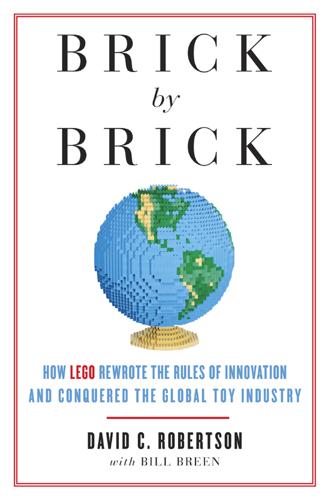
Brick by Brick: How LEGO Rewrote the Rules of Innovation and Conquered the Global Toy Industry
by
David Robertson
and
Bill Breen
Published 24 Jun 2013
“We were told from the top that the minifig wasn’t considered cool.” The Jack Stone “minifigure” (right) and a classic LEGO minifigure. Unlike the classic minifigure, the Jack Stone figure could not be disassembled. Practice disruptive innovation. In his book The Innovator’s Dilemma, Harvard Business School professor Clayton Christensen introduced his theory of disruptive innovation, which he defined as a less pricey product or service, initially designed for less-demanding customers, which catches on and captures its market, displacing the incumbents.10 Christensen saw how low-quality, low-cost technologies were ramping up faster than ever before.
…
To build new growth drivers, LEGO would once again seek out untapped, blue-ocean markets. (We will trace that effort in the next chapter.) And it would attempt to unleash a disruptive innovation—a low-end, low-quality product that improves over time and eventually upends the industry incumbents. In a New Yorker profile, Clayton Christensen cited the pint-size transistor radio as a prototypical example of a big, disruptive innovation. Launched by Sony in the late 1950s, the tinny, tiny radios, using the then-new technology of the transistor, had nowhere near the same sound quality as the big vacuum-tube RCA and Zenith consoles found in many middle-class homes.
…
As 3-D printing improves, LEGO might one day find that Minecraft (or something like it) has jumped the digital divide to become a more compelling, richer, and easier way to construct plastic buildings, characters, and vehicles. As many disrupted companies have learned, what was low-end yesterday can be mainstream tomorrow. One of Clayton Christensen’s most counterintuitive arguments is that managers sometimes fail because they are smart, not because they are stupid. They abide by the same management strategies that have worked so successfully in the past. As a result, the disruptive effort goes wrong. Such was the case with the LEGO Group’s handling of Universe.

The Connected Company
by
Dave Gray
and
Thomas Vander Wal
Published 2 Dec 2014
I have also had the privilege to receive help and advice from true luminaries, such as Richard Saul Wurman, Saul Kaplan, Kevin Kelly, Jared Spool, Peter Vander Auwera, Dan Roam, Thor Muller, Paul Pangaro, Lane Becker, Peter Morville, Lou Rosenfeld, Nilofer Merchant, John Hagel III, JP Rangaswami, Doc Searls, Stowe Boyd, Jay Cross, Marcia Conner, Ben Cerveny, Chris Brogan, Bob Logan, David Armano, Alex Osterwalder, and Don Norman. Although I don’t know them personally, for the ideas in this book, I owe a deep debt of gratitude to the works of Gary Hamel, Clayton Christensen, Arie de Geus, Ricardo Semler, Eric Beinhocker, Daniel Pink, Richard Florida, Stewart Brand, Bill McKelvey, Stafford Beer, Herbert Simon, John Boyd, and perhaps most of all, Dr. W. Edwards Deming, many of whose groundbreaking ideas are only now being realized. For the access they provided to connected companies and their inner workings, I must thank Ray LaDriere, Kevin Kernan, Michael Bonamassa, Jerry Rudisin, Sunny Gupta, Adrian Cockcroft, Harry Max, Mary Walker, Mark Interrante, Ben Hart, Livia Labate, Sherri Maxson, and Sharif Renno.
…
While a company serves multiple purposes for different people, as an investment, a place of work, a paycheck, and so on, by far the most important purpose of a company is the job it does for customers. Companies that neglect or forget this fact have lost their way. Purpose Sets the Context for Organizations to Learn Cybernetics pioneer Stafford Beer said, “The purpose of a system is what it does.” The purpose of a company is what it does for customers. Clayton Christensen calls this “the job to be done.” He points out that while technologies and methods change over time, the job doesn’t change that much. For example, the service provided by FedEx—get something from here to there, as quickly as possible, with perfect certainty—is something Julius Caesar could have used.
…
In the Plex: How Google Thinks, Works, and Shapes Our Lives By Steven Levy, Simon and Schuster, 2011. Information Rules: A Strategic Guide to the Network Economy By Carl Shapiro and Hal R. Varian, Harvard Business Review Press, 1998. The Innovator’s Dilemma: When New Technologies Cause Great Firms to Fail By Clayton Christensen, Harvard Business Review Press, 1997. An Inquiry into the Nature and Causes of the Wealth of Nations By Adam Smith, 1776. Jack: Straight from the Gut By Jack Welch and John A. Byrne, Business Plus, 2001. Just in Time for Today and Tomorrow By Taiichi Ohno and Setsuo Mito, Productivity Press, 1988.
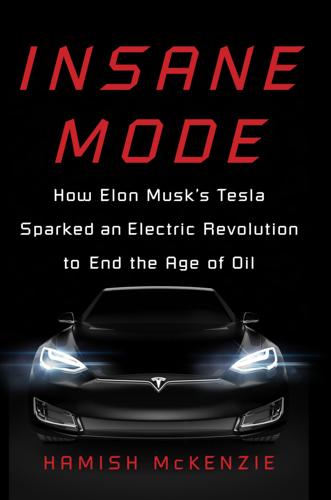
Insane Mode: How Elon Musk's Tesla Sparked an Electric Revolution to End the Age of Oil
by
Hamish McKenzie
Published 30 Sep 2017
“I think that if there’s a need for something to be disrupted and it’s important to the future of the world, then sure, we should disrupt it. But I don’t think that we should just disrupt things, unless that disruption is going to result in something fundamentally better for society.” The business world had come to fear the word disruption because of The Innovator’s Dilemma, a 1997 book by Harvard Business School professor Clayton Christensen that introduced the concept of “disruptive innovation.” The Innovator’s Dilemma, lauded by The Economist as one of the most important books about business ever written, lays out how market-leading companies can miss out on new waves of innovation by focusing on the needs of their existing customers to maximize profits while overlooking new and cheaper technologies or business models that customers didn’t realize they wanted.
…
But the industry’s fear that it might have been on the wrong side of history would not have dissipated completely. The same was true for at least one auto industry leader. The man who, until May 2017, was CEO of the Ford Motor Company is one person who does appear to be a fan of disruption. Mark Fields, a Harvard business grad and Clayton Christensen follower, was fifty-three when he was appointed to succeed outgoing CEO Alan Mulally. Fields had been the company’s chief operating officer since November 2012, and his ascent through the ranks had included leadership roles at Ford’s luxury autos group and Mazda when Ford owned the company in the early 2000s.
…
“In many cases, large car companies or truck companies are not focused on software, they’re not focused on sensors or batteries,” Straubel said in 2016. “And this gives an opportunity for innovation for new companies and new entrants to play on a bit more of a level playing field than there ever was in the past.” Tesla, however, is not a disrupter by Clayton Christensen’s original definition of the theory. In a December 2015 article published by the Harvard Business Review, Christensen and his coauthors, Michael Raynor and Rory McDonald, said Tesla didn’t fit the disruptive innovation model because its foothold was in the high-end segment of the auto market.

Life After Google: The Fall of Big Data and the Rise of the Blockchain Economy
by
George Gilder
Published 16 Jul 2018
These approaches still entail a “paint-can” on the roof with sixty-four lasers and photo-detectors in rows. Velodyne’s idea of how to improve performance is to double the number of lasers to 128 and add more software. It all strikes Russell as a kludge—a system too complex and cumbersome to work. Governing this challenge is Clayton Christensen’s model of “integration and modularity.” When a product fundamentally underperforms the market’s requirements, integration is essential. You can’t just go down to Fry’s and cobble together existing devices. Every interface must be optimized. Modularity—interconnecting standard components from a variety of suppliers—works only when the product easily fulfills the function, leaving tolerances for less than top performance.
…
Bundling reflects Coase’s Law: Companies expand until the costs of performing a transaction inside the firm exceed the costs of performing it outside. Don and Alex Tapscott point out that this law works both ways: Companies that find the costs of internal operations exceed the costs of outsourcing should cut back, shrink their reach, and spin out operations. In a word, unbundle.1 Adding a technological argument to Coase, Clayton Christensen shows that integration—essentially bundling components together in a seamless system—is desirable as long as a technology falls short of a market need. All interfaces between components must be optimized to the point that the market need is satisfied. Then, where suboptimal performance satisfies the market, modularity—using standardized interfaces and components—will reduce costs and expand market share.2 In the bitcoin blockchain, companies accept cumbersome solutions constantly distributing a 120-gigabyte ledger across the network when most of the functions could be performed ten thousand times more efficiently within a single company hierarchy.
…
Charles Mackay, Extraordinary Popular Delusions and the Madness of Crowds (New York: Harmony Books, 1980), foreword by Andrew Tobias. Chapter 23: The Great Unbundling 1. Don Tapscott and Alex Tapscott, Blockchain Revolution: How the Technology behind Bitcoin is Changing Money, Business, and the World (New York: Penguin Random House, 2016), 92–93, 142. 2. Clayton Christensen and Michael E. Raynor, The Innovator’s Solution: Creating and Sustaining Successful Growth (Cambridge: Harvard Business School Publishing, 2003), 126–143. 3. Binyamin Appelbaum, “Is Bitcoin a Waste of Electricity, or Something Worse?” New York Times, February 28, 2018. 4. The error of GDP accounting that renders invisible the most creative parts of the economy is rectified by economist Mark Skousen’s new concept of Gross Output (GO) or gross domestic expenditures.
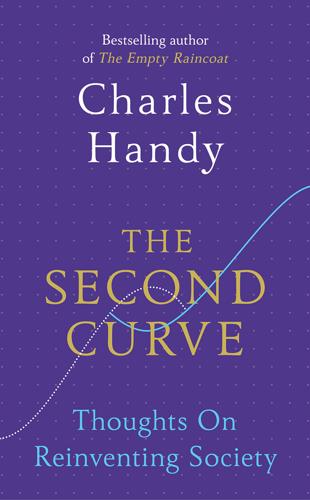
The Second Curve: Thoughts on Reinventing Society
by
Charles Handy
Published 12 Mar 2015
Only in retrospect can we look back and say, ‘That was it, that was the peak, that was when we should have started to think anew.’ Unfortunately, being wise after the event is too late to be useful. First-curve success can blind one to the possibilities of a new technology or a new market, allowing others to seize the initiative. Clayton Christensen of Harvard Business School termed it the problem of disruptive innovation, citing, among many others, the case of Kodak, who ignored the possibilities of digital photography until it was too late. They allowed outsiders to intrude and, in my words, create the new curve instead of them. New technology is offering the chance of those new curves every day.
…
I can see that requiring MPs to vote by walking through those doors inherited from St Stephen’s Chapel not only means that they have to be present and counted, in person, but also acts as a reminder of why they are there, even if they sometimes don’t know what they are voting on, just following their herd. Some rituals, however, are just nostalgia and eventually become dysfunctional. Manual voting is now one of them. If we want people, particularly the young, to take democracy seriously we have to work with the new ways of communicating. Otherwise we risk going down Clayton Christensen’s technological mudslide on the road to Davy’s Bar. The Scottish referendum in 2014, with an 84 per cent turnout, showed that when it matters to them the voters will come out, come rain, hail or sunshine, but not all elections are so emotive or so compelling – witness the turnout for European elections.

The Startup Way: Making Entrepreneurship a Fundamental Discipline of Every Enterprise
by
Eric Ries
Published 15 Mar 2017
MORE ADVANCE ACCLAIM FOR THE STARTUP WAY “My research has focused on what causes established companies to maintain success, and The Startup Way provides practical guidance on how to do just that.” —Clayton Christensen, author, entrepreneur, and Kim B. Clark Professor of Business Administration at Harvard Business School “To succeed in the Third Wave, an era where technology will disrupt everything from education to healthcare, companies will need new tools and approaches. Eric Ries provides a road map for companies on how to use entrepreneurial principles to achieve transformational growth.”
…
And the laws of corporate gravity still apply: The scarcity of resources most startups deal with argues for more, not less, financial discipline. Similarly, even the stodgiest product team will be doing some experimentation and some innovation, a point the author of The Innovator’s Dilemma, Clayton Christensen, has been trying to make for years. In most cases, good business practices will cause missed opportunities, because in order to serve existing customers well, companies don’t want to do anything too radical. The team may be trapped by this dilemma and unable to produce something truly disruptive, but it is engaged in “sustaining innovations” that may still be quite radical in their own way.3 THE FLOW OF IDEAS IN THE MODERN COMPANY Thus, every organizational unit is more properly understood as a portfolio that contains some mix of experimentation and execution.
…
They often want control over the project (because they are afraid of negative consequences to the status quo), but they don’t want to provide funding for the project (because they would much rather invest in the short-term things that are working today). This combination gives rise to the problem outlined in Clayton Christensen’s The Innovator’s Dilemma. Innovation accounting suggests one possible way to solve that problem. Along with division- and function-level growth boards, which allocate funding and hold teams accountable within their existing structures, how about a corporate-level growth board that can fund and accelerate new startups that no existing division wants to fund.
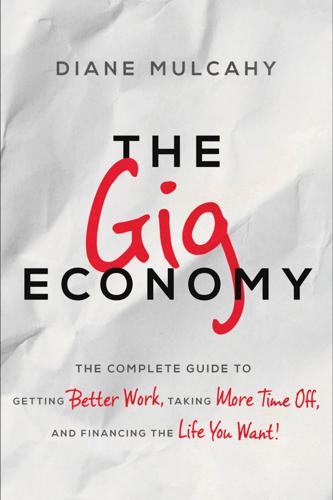
The Gig Economy: The Complete Guide to Getting Better Work, Taking More Time Off, and Financing the Life You Want
by
Diane Mulcahy
Published 8 Nov 2016
Time horizons can help us better allocate all of our resources—our time, energy, attention, and money—to achieve our goals. We have to beware of our natural tendency to over-allocate our resources to short-term activities that offer immediate rewards instead of to our long-term goals and priorities. Clayton Christensen offers the most compelling illustration of the consequences of overinvesting in the short term. In his Harvard Business Review article “How Will You Measure Your Life?” he describes how, more than 30 years after graduation, many of his classmates have ended up “unhappy, divorced, and alienated from their children” even though none of them set out to do so.
…
The ability to quantify ourselves makes it easier than ever to track our daily time habits and identify the ones we want to change. Do You Allocate Enough Time to Larger, Longer-Term Rewards? Short-term wins are compelling because they offer instant gratification and a sense of accomplishment and progress. We discussed this tendency briefly in chapter 1 and used the Clayton Christensen “How Will You Measure Your Life?” article to illustrate it. In that article, Christensen’s classmates fell prey to this short-term bias by persistently overinvesting in immediate career “wins” and achievements at the expense of the longer-term reward of lasting and loving family relationships.

The Everything Store: Jeff Bezos and the Age of Amazon
by
Brad Stone
Published 14 Oct 2013
“If you are running both businesses you will never go after the digital opportunity with tenacity,” he said. By that time, Bezos and his executives had devoured and raptly discussed another book that would significantly affect the company’s strategy: The Innovator’s Dilemma, by Harvard professor Clayton Christensen. Christensen wrote that great companies fail not because they want to avoid disruptive change but because they are reluctant to embrace promising new markets that might undermine their traditional businesses and that do not appear to satisfy their short-term growth requirements. Sears, for example, failed to move from department stores to discount retailing; IBM couldn’t shift from mainframe to minicomputers.
…
“We were both passionate and within five minutes we were both mad,” says Wilke, who later conceded that Bezos was right and the short-term pain had been worth it to build the Kindle franchise. Bezos won the argument, of course, but Wilke convinced him to at least make it clearer on the site that Amazon did not actually have any Kindles on hand. Just as Clayton Christensen had predicted in The Innovator’s Dilemma, technological innovation caused wrenching pain to the company and the broader industry. No one was feeling it more than the book publishers. Amazon had spent much of the last two years cajoling and threatening them to embrace its new digital format.
…
Chapter 8: Fiona 1 Calvin Reid, “Authors Guild Shoots Down Rocket eBook Contract,” Publishers Weekly, May 10, 1999. 2 Steve Silberman, “Ex Libris,” Wired, July 1998. 3 Steven Levy, “It’s Time to Turn the Last Page,” Newsweek, December 31, 1999. 4 Jane Spencer and Kara Scannell, “As Fraud Case Unravels, Executive Is at Large,” Wall Street Journal, April 25, 2007. 5 David Pogue, “Trying Again to Make Books Obsolete,” New York Times, October 12, 2006. 6 Jeff Bezos, speech at Lake Forest College, February 26, 1998. 7 Walt Mossberg, “The Way We Read,” Wall Street Journal, June 9, 2008. 8 Mark Leibovich, “Child Prodigy, Online Pioneer,” Washington Post, September 3, 2000. 9 Clayton Christensen, The Innovator’s Dilemma: When New Technologies Cause Great Firms to Fail (Boston: Harvard Business Review Press, 1997). 10 Jeff Bezos, interview by Charlie Rose, Charlie Rose, PBS, February 26, 2009. 11 David D. Kirkpatrick, “Online Sales of Used Books Draw Protest,” New York Times, April 10, 2002. 12 Graeme Neill, “Sony and Amazon in e-Books Battle,” Bookseller, April 27, 2007. 13 Brad Stone, “Envisioning the Next Chapter for Electronic Books,” New York Times, September 6, 2007. 14 Jeff Bezos, The Oprah Winfrey Show, ABC, October 24, 2008.

The Future Is Faster Than You Think: How Converging Technologies Are Transforming Business, Industries, and Our Lives
by
Peter H. Diamandis
and
Steven Kotler
Published 28 Jan 2020
Early versions of this can be seen in the rise of “transformational festivals” like Burning Man, or fitness companies like CrossFit, where the experience is generally bad (you work out in old warehouses), but the transformation is great (the person you become after three months of working out in those warehouses). What all this tells us is that business as usual is becoming business unusual. And for existing companies, as Harvard’s Clayton Christensen explains, this is no longer optional: “Most [organizations] think the key to growth is developing new technologies and products. But often this is not so. To unlock the next wave of growth, companies must embed these innovations in a disruptive new business model.” And for those of us on the outside of these disruptive models, our experience will be better, cheaper, faster.
…
Converging Technology Moore’s Law: See: https://www.intel.com/content/www/us/en/silicon-innovations/moores-law-technology.html. as a human brain: Ray Kurzweil, How to Create a Mind (Viking, 2012), pp. 179–198. “Law of Accelerating Returns”: Ray Kurzweil, “The Law of Accelerating Returns,” March 7, 2001. See: https://www.kurzweilai.net/the-law-of-accelerating-returns. we use the term “disruptive innovation”: Clayton Christensen, The Innovator’s Dilemma (HarperBusiness, 2000), pp. 15–19. Enter distributed electric propulsion, or DEP for short: Mark Moore, “Distributed Electric Propulsion Aircraft,” Nasa Langley Research Center. See: https://aero.larc.nasa.gov/files/2012/11/Distributed-Electric-Propulsion-Aircraft.pdf.
…
the multimillion-dollar economy: Maria Korolov, “Second Life GDP Totals $500 Million,” Hypergrid Business, November 11, 2015. See: https://www.hypergridbusiness.com/2015/11/second-life-gdp-totals-500-million/. The Experience Economy: Joseph Pine and James Gilmore, “Welcome to the Experience Economy,” Harvard Business Review, July-August 1998. Harvard’s Clayton Christensen: Mark Johnson, Reinvent Your Business Model (Harvard Business Press, 2018), back cover. Force #7: Longer Lives Ada Lovelace: Walter Isaacson, The Innovators (Simon & Schuster, 2014) pp. 7–33. the average caveperson hit puberty: For a great review of lifespan through history, see: https://ourworldindata.org/life-expectancy.

Think Like an Engineer: Use Systematic Thinking to Solve Everyday Challenges & Unlock the Inherent Values in Them
by
Mushtak Al-Atabi
Published 26 Aug 2014
Taking the smartphone market as an example, there was a time when the iPhone represented the high end of the market with other imitators satisfying the lower end of the market, selling cheaper but with a lower brand and performance offering. Currently the differentiation between various brands is becoming more difficult, and smartphones are almost becoming a commodity. Disruptive Innovation (Source: Innovator’s Dilemma, Clayton Christensen) Clayton Christensen in his book ‘The Innovator’s Dilemma’ presented an interesting theory of what he calls “disruptive innovation.” He explains how a new product, service, or company may drive existing prominent market players out of the market and conquer their market share. This happens by addressing market segments that are below the existing lower end of the market.
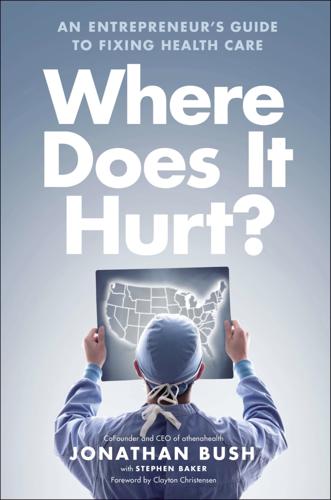
Where Does It Hurt?: An Entrepreneur's Guide to Fixing Health Care
by
Jonathan Bush
and
Stephen Baker
Published 14 May 2014
His illustrations and metaphors help me envision the problems and their solutions clearly. And he is very, very funny. You will be able to hear Jonathan’s voice as you read this book. It is an easy, insightful, and entertaining read. Jonathan, thank you for writing this book—for what it says and how you say it. Clayton Christensen, Harvard Business School JANUARY 2014 INTRODUCTION It’s a steamy summer night in New Orleans in 1990. I’m twenty-one years old and gunning an ambulance down Bienville Avenue, toward Charity Hospital. My uncle is president of the United States and my cousin will take over the same job in a decade.
…
But I’m convinced that in health care technology, primitive is where the opportunities lie, and that simple, affordable systems will give birth to the disruption we’re aching for. I didn’t speak too much in my rustic getup. Instead I introduced one of my favorite professors from Harvard Business School, Clayton Christensen, who drove home the point much more eloquently than I did with my pike and loincloth. Clay towered before the gathering, all six foot eight of him. A few years ago, he told us, he had suffered a stroke. It affected the part of his brain that governed speech. So he had to relearn English.
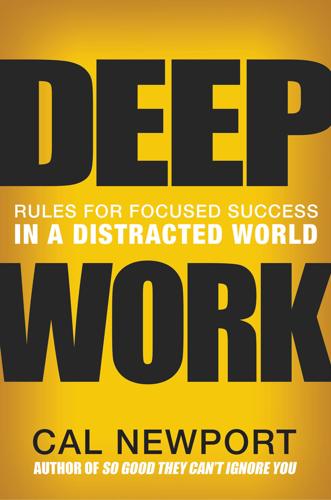
Deep Work: Rules for Focused Success in a Distracted World
by
Cal Newport
Published 5 Jan 2016
At the same time, don’t lionize this quest for interaction and positive randomness to the point where it crowds out the unbroken concentration ultimately required to wring something useful out of the swirl of ideas all around us. Execute Like a Business The story has become lore in the world of business consulting. In the mid-1990s, Harvard Business School professor Clayton Christensen received a call from Andy Grove, the CEO and chairman of Intel. Grove had encountered Christensen’s research on disruptive innovation and asked him to fly out to California to discuss the theory’s implications for Intel. On arrival, Christensen walked through the basics of disruption: entrenched companies are often unexpectedly dethroned by start-ups that begin with cheap offerings at the low end of the market, but then, over time, improve their cheap products just enough to begin to steal high-end market share.
…
A more detailed history can be found in Chapter 7 of Walter Isaacson’s 2014 book, The Innovators. New York: Simon and Schuster. Execute Like a Business “How do I do this?”: from pages xix–xx of McChesney, Chris, Sean Covey, and Jim Huling. The 4 Disciplines of Execution. New York: Simon and Schuster, 2004. Clayton Christensen also talks more about his experience with Andy Grove in a July–August 2010 Harvard Business Review article, “How Will You Measure Your Life?” that he later expanded into a book of the same name: http://hbr.org/2010/07/how-will-you-measure-your-life/ar/1. “The more you try to do”: from page 10 of McChesney, Covey, and Huling, The 4 Disciplines of Execution.
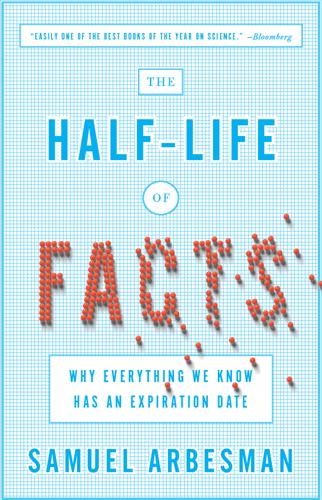
The Half-Life of Facts: Why Everything We Know Has an Expiration Date
by
Samuel Arbesman
Published 31 Aug 2012
Eventually the entire population that might possibly choose to adopt the gadget is reached. The growth slows down as it reaches this carrying capacity, obeying its logistic shape. These curves are also often referred to as S-curves, due to their stretched S-like shapes. This is the term that’s commonly used when discussing innovation adoption. Clayton Christensen, a professor at Harvard Business School, argues that a series of tightly coupled and successive S-curves—each describing the progression and lifetime of a single technology—can be combined sequentially when looking at what each consecutive technology is actually doing (such as transforming information) and together yield a steady and smooth exponential curve, exactly as Magee and Koh found.
…
Technological Forecasting and Social Change 73, no. 9 (2006): 1061–83; Koh, Heebyung, and Christopher L. Magee. “A Functional Approach for Studying Technological Progress: Extension to Energy Technology.” Technological Forecasting and Social Change 75, no. 6 (2008): 735–58. 45 They begin to run out of space: This growth pattern assumes a continuous food supply. 45 Clayton Christensen, a professor at Harvard Business School: Christensen, Clayton M. “Exploring the Limits of the Technology S-Curve. Part I: Component Technologies.” Production and Operations Management 1, no. 4 (1992): 334–57. 46 they found mathematical regularities: More recent research has debated whether these are truly exponential or other fast-growing functions, such as power laws or double exponentials.
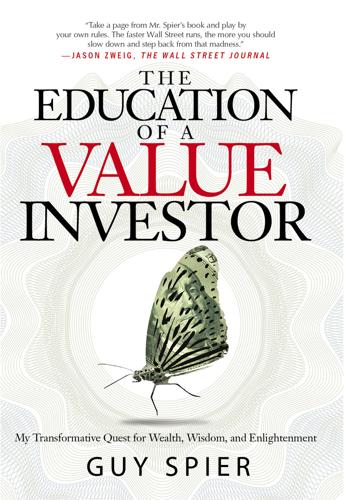
The Education of a Value Investor: My Transformative Quest for Wealth, Wisdom, and Enlightenment
by
Guy Spier
Published 8 Sep 2014
Here, I want to thank these people who have been instrumental in my education: I have been blessed with many extraordinary teachers and educators, including Peter Sinclair, Vernon Bogdanor, and Tony Courakis, who tutored me in economics and politics; Mary Stokes, John Davies, Hugh Collins, Peter Birks, and Bernard Rudden, who tutored me in law; and Diana Hughes, Charles Stewart, and others who taught me at the City of London Freemen’s School. Richard Nolan, Dick Poorvu, Rawi Abdelal, Clayton Christensen, Boris Groysberg, Len Schlesinger, Jan Hammond, David Joffe, Amar Bhide, Bill Sahlman, and Ray Goldberg are some, but not all, of the brilliant professors I had at Harvard Business School. In my professional life, I have also been tremendously fortunate to have had wonderful teachers and collaborators.
…
Ramachandran and Sandra Blakeslee Signs of Life: How Complexity Pervades Biology by Ricard Solé and Brian Goodwin Synaptic Self: How Our Brains Become Who We Are by Joseph LeDoux Self-help A Message to Garcia by Elbert Hubbard A Simple Act of Gratitude: How Learning to Say Thank You Changed My Life by John Kralik Acres of Diamonds by Russell Conwell As a Man Thinketh by James Allen Daring Greatly: How the Courage to Be Vulnerable Transforms the Way We Live, Love, Parent, and Lead by Brené Brown Focusing by Eugene Gendlin Getting the Love You Want: A Guide for Couples by Harville Hendrix Getting Things Done: The Art of Stress-Free Productivity by David Allen How to Win Friends and Influence People by Dale Carnegie How Will You Measure Your Life? by Clayton Christensen, James Allworth, and Karen Dillon Keeping the Love You Find: A Personal Guide by Harville Hendrix Manifest Your Destiny: The Nine Spiritual Principles for Getting Everything You Want by Wayne Dyer Success: Advice for Achieving Your Goals from Remarkably Accomplished People by Jena Pincott Thanks!
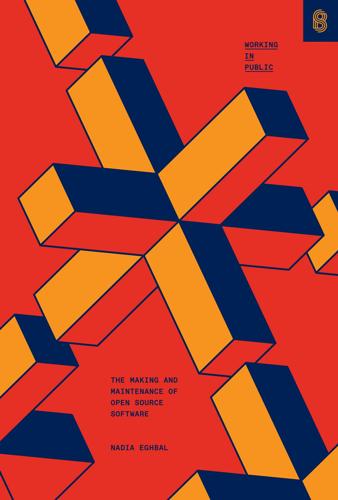
Working in Public: The Making and Maintenance of Open Source Software
by
Nadia Eghbal
Published 3 Aug 2020
The security vulnerability had been disclosed with a CVE ID several months before, and a patch had been released, but Equifax’s developers failed to update the company’s software in time.227 Adapting to user needs Maintenance is often classified as reactive work: it’s the minimum required to keep things running smoothly. But users’ needs change over time, too. Software must also change to meet these needs, or else risk becoming irrelevant. Clayton Christensen famously identifies and analyzes this problem in The Innovator’s Dilemma, the 2003 book in which he tries to understand why successful companies can be overtaken by new ones, even if they are doing well. By focusing too much on iterating upon their incumbent product, companies risk missing major opportunities for so-called “disruptive innovation,” which eventually replaces existing products.228 Similarly, state-of-the-art software, even with regular maintenance, will eventually be replaced by something else that better addresses modern user preferences.
…
rsc, January 23, 2019, https://research.swtch.com/deps. 227 Dan Goodin, “Failure to Patch Two-Month-Old Bug Led to Massive Equifax Breach,” Ars Technica, September 13, 2017, https://arstechnica.com/information-technology/2017/09/massive-equifax-breach-caused-by-failure-to-patch-two-month-old-bug/. 228 Clayton Christensen, The Innovator’s Dilemma: The Revolutionary Book That Will Change the Way You Do Business (New York, NY: Harper Business, 2003). 229 “PyPy Features,” PyPy, n.d., https://pypy.org/features.html. 230 “Call for Donations - PyPy to Support Python3!,” PyPy, December 2019, https://web.archive.org/web/20191209173423/https://www.pypy.org/py3donate.html. 231 Mikeal Rogers, “Request’s Past, Present and Future,” Request Issues, GitHub, March 30, 2019, https://github.com/request/request/issues/3142. 232 “Moving to Require Python 3,” Python 3 Statement, accessed March 30, 2020, https://python3statement.org/. 233 VPeric, “Differences between Distribute, Distutils, Setuptools and Distutils2?
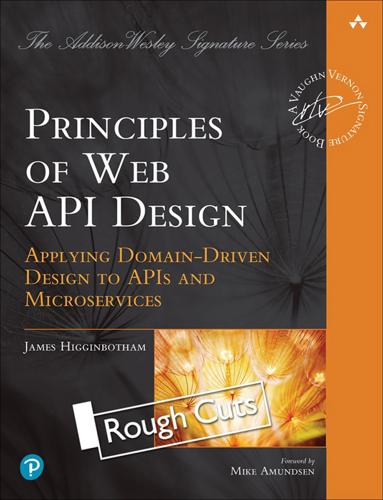
Principles of Web API Design: Delivering Value with APIs and Microservices
by
James Higginbotham
Published 20 Dec 2021
The ADDR Process recommends using job stories, which are rooted in the jobs to be done approach to design. Focusing on the Jobs to be Done Jobs to be done (JTBD) are the identified needs fulfilled by a product or service offering. This includes capturing how a customer problem, the task to be performed, and the desired outcome that should result. JTBD was formulated by Clayton Christensen, author of “The Innovator’s Dilemma”, as a method of taking the viewpoint of the customer when designing a product or service. JTBD ensures that the product addresses a specific need and therefore has a better chance of gaining market adoption. It starts by identifying the needs of customers, the job, and then defining how a product or service will fill that need.
…
Job stories seek to identify the problems that customers have and the eventual outcome they wish to achieve. Jobs are identified that will solve these problems. APIs will offer digital capabilities that will power these jobs to be done to produce the desired outcome. Job stories were created by Alan Klement and are based on JTBD formulated by Clayton Christensen. They offer a simple framework to capture all of the aspects of the job to be done. Teams producing job stories will find that their API designs focus more on the desired outcomes of the audience. They will also have the details necessary to create acceptance criteria for automated tests. It is important to note that job stories shouldn’t contain implementation specifics.
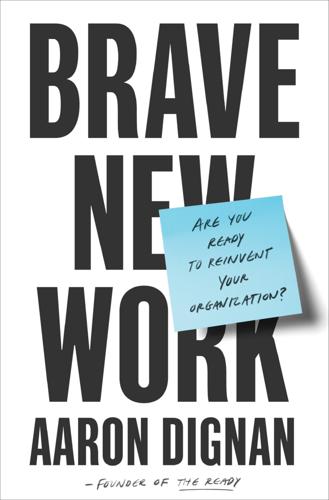
Brave New Work: Are You Ready to Reinvent Your Organization?
by
Aaron Dignan
Published 1 Feb 2019
Over time, it can be hard to separate strategy from the status quo. Are we operating in sixty countries because that’s critical to our success or because we happened to acquire a bunch of foreign offices? The longer we operate, the more organizational debt we likely carry with us, limiting our ability to innovate. Indeed, Professor Clayton Christensen coined the term “the innovator’s dilemma” to describe why incumbents are so often disrupted by upstarts and unexpected competitors. To resist this pattern, try launching a red team. Originating in the military and intelligence communities but now practiced in a variety of business contexts, a red team is charged with one mission: putting you out of business.
…
When a CMO at a Fortune 10 company reported to his peers that he was saving fourteen hours a week based on changes his team had made, you could see the jealousy on everyone’s face. There’s nothing that legacy cultures love more than a measurable productivity gain, so when things do move the needle, they spread fast. Wonder. Winning experiments reveal new possibilities. Working in new ways opens the mind to what could be. Clayton Christensen once told software entrepreneur Jason Fried, “Questions are places in your mind where answers fit. If you haven’t asked the question, the answer has nowhere to go. It hits your mind and bounces right off. You have to ask the question—you have to want to know—in order to open up the space for the answer to fit.”

The Thinking Machine: Jensen Huang, Nvidia, and the World's Most Coveted Microchip
by
Stephen Witt
Published 8 Apr 2025
As the argument progressed, Huang halted the discussion and asked the MBA to name his three favorite books on pricing. The guy fumbled around for a bit, unable to name a single title. Huang listed out his three favorites, then told the executive he’d resume the discussion once he’d finished them. Huang’s best-loved business book was The Innovator’s Dilemma, by the Harvard Business School professor Clayton Christensen. First published in 1997, the book popularized the term disruptive innovation to describe how incumbent firms lose out to start-up competitors. Although the word disruption has since grown meaningless through overuse, the source material is worth revisiting. In Christensen’s model, small firms can chisel away at large ones by serving niche, marginally profitable customers that the market leaders have dismissed.
…
Chiu, who had used gaming cards to build his machine, was the model customer. By shipping CUDA on the retail boards, Nvidia was marketing to even the most meager scientists—mad scientists, basically, whose research was so disfavored they couldn’t afford a workstation. Here, Huang was once again following the gospel of Clayton Christensen. Disruptive technologies, Christensen had observed, often grew out of hobbyist communities. They were developed using “bootlegged resources” in which “off-the-shelf components” were redeployed for something other than their intended purpose. They started out wonky but rapidly improved along attributes of performance that established players ignored.

The Success Equation: Untangling Skill and Luck in Business, Sports, and Investing
by
Michael J. Mauboussin
Published 14 Jul 2012
And when they do, you have a bunch of people on the other team doing things they don't have much experience doing.” By adding battlefields to the game, Leach diluted the advantage of the stronger teams.7 Colonel Blotto also has parallels to business. One illustration is the theory of disruptive innovation developed by Clayton Christensen at Harvard Business School. Christensen studies why great companies with smart managements and substantial resources consistently lose to companies with simpler, cheaper, and inferior products. He calls these upstarts “disruptors” and distinguishes between what he calls sustaining and disruptive innovation.8 Sustaining innovation involves steadily improving a product that already exists.
…
Take war as an example. Weaker combatants won a higher percentage of wars in the twentieth century than the nineteenth century because they learned not to go toe-to-toe with their stronger foe. Instead, they pursued alternative strategies and tactics, including those of guerrilla warfare. Professor Clayton Christensen's theory of disruptive innovation shows how companies that are initially weaker overcome their more formidable competitors. One of his insights is that the stronger companies initially concede part of the market to the weaker companies or ignore them altogether.18 The stronger companies allow the disruptors to win small battles, which allows to disruptors to improve their products and make money.
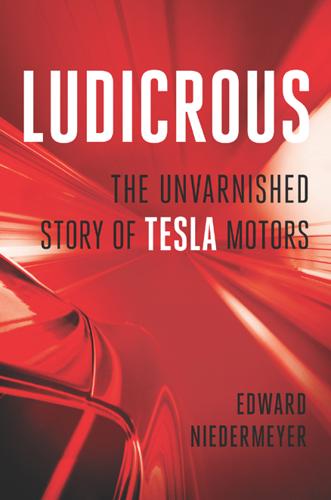
Ludicrous: The Unvarnished Story of Tesla Motors
by
Edward Niedermeyer
Published 14 Sep 2019
Again and again, automotive innovations quickly shift from competitive advantage to industry-standard equipment. This pattern repeats itself so regularly because almost every innovation in the automotive space is what is known as a “sustaining innovation” rather than a “disruptive innovation.” Clayton Christensen, the Harvard Business School professor who coined these terms, defines sustaining innovations as “innovations that make a product or service perform better in ways that customers in the mainstream market already value,” which indeed describes the evolution of the auto industry. “Disruptive innovations,” on the other hand, “create an entirely new market through the introduction of a new kind of product or service,” which are out of step with the values of both established consumer markets and industry leaders.
…
The one area where Tesla has had undeniable success, namely creating electric cars with performance and styling that appeals to existing customers, proves that its innovations are sustaining rather than disruptive. One of the fundamental cornerstones of the Tesla mythology is the belief that established automakers either can’t or won’t build electric cars in meaningful volumes. This theory relies heavily on crude interpretations of what Clayton Christensen called “The Innovator’s Dilemma,” which suggests that investments in existing technologies and business models make “incumbent” companies less able to establish new businesses in response to innovations. Christensen and his coauthors explain this dilemma in an article called “Innovation Killers: How Financial Tools Destroy Your Capacity to Do New Things”: Executives in established companies bemoan how expensive it is to build new brands and develop new sales and distribution channels—so they seek instead to leverage their existing brands and structures.
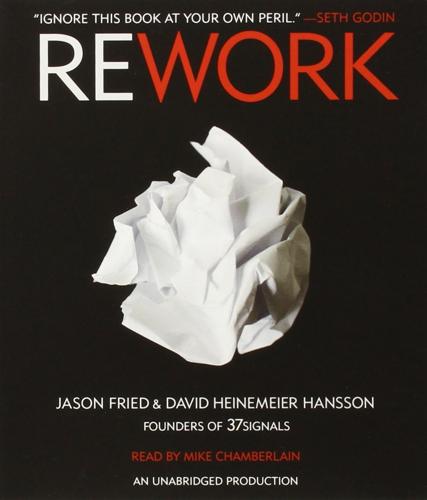
Rework
by
Jason Fried
and
David Heinemeier Hansson
Published 9 Mar 2010
He made it look easy, but it wasn’t easy work. Thank you, Matt. We also want to thank our families, our customers, and everyone at 37signals. And here’s a list of some of the people we know, and don’t know, who have inspired us in one way or another: Frank Lloyd Wright Seth Godin Warren Buffett Jamie Larson Clayton Christensen Ralph Nader Jim Coudal Benjamin Franklin Ernest Kim Jeff Bezos Scott Heiferman Antoni Gaudi Carlos Segura Larry David Steve Jobs Dean Kamen Bill Maher Thomas Jefferson Mies van der Rohe Ricardo Semler Christopher Alexander James Dyson Kent Beck Thomas Paine Gerald Weinberg Kathy Sierra Julia Child Marc Hedlund Nicholas Karavites Michael Jordan Richard Bird Jeffrey Zeldman Dieter Rams Judith Sheindlin Ron Paul Timothy Ferriss Copyright © 2010 by 37signals, LLC.

Losing the Signal: The Spectacular Rise and Fall of BlackBerry
by
Jacquie McNish
and
Sean Silcoff
Published 6 Apr 2015
He likened it to giving QNX “training wheels” before taking on the task of overhauling his beloved BlackBerry from the inside—as well as the entire software organization that provided its digital core—to build RIM’s smartphone of the future. “I was basically putting the company through the biggest transformation they had ever experienced,” he says. Lazaridis had a blueprint inspired by Clayton Christensen’s acclaimed 1997 management book, The Innovator’s Dilemma.3 The Harvard professor argued that for established companies to succeed against disruptive competitors, they had to empower small, cloistered teams. These autonomous groups, unsullied by the parent company’s set ways, would develop disruptive technologies of their own and could eventually subsume other parts of the organization.
…
brandID=21. 15 / FAULT LINES 1 Ben Worthen, “Businesses Add iPads to Their Briefcases,” Wall Street Journal, August 24, 2010. 2 Jobs claimed Adobe “screwed” him by refusing to make a Mac version of Adobe Premiere in 1999 and later attacked Flash, telling biographer Walter Isaacson that it was “a spaghetti-ball piece of technology that has lousy performance and really bad security problems.” Isaacson, Steve Jobs, pp. 514–5. 3 Clayton Christensen, The Innovator’s Dilemma, Boston, Harvard Business Publishing, 1997. 4 BlackBerry turned down interview requests with Dan Dodge for this book. 5 Chloe Albanesius, “Adobe Ditching Mobile Browser Flash Player Development,” PC Magazine, November 9, 2011. 6 RIM’s share of AT&T, which was lower to begin with because of the carrier’s relationship with Apple, dipped to 15 percent in the fourth quarter of 2010, down from 18 percent a year earlier. 7 Mikael Ricknäs, “Samsung Becomes Biggest Smartphone Vendor, as Android’s Market Share Grows,” PC World, November 15, 2011. 8 Paul Christoper Webster and Iain Marlow, “Where the BlackBerry Still Reigns Supreme,” Report on Business Magazine, November 29, 2012. 9 Susana Ferreira and Will Connors, “In These Countries, BlackBerry Is Still King—Of Pop Culture,” Wall Street Journal, September 11, 2012. 10 “BlackBerry Babes,” The Economist, December 8, 2012. 11 “BlackBerry Loses Top Spot to Apple at Home: Corporate Canada,” Bloomberg, March 22, 2012. 12 Zahraa al Khalisi, “BlackBerry ‘Pins’ Are the New Licence Plates,” The National (United Arab Emirates), September 19, 2009; author interview with Patrick Spence, 2014. 13 Sandeep Singh Grewal, “Comeback Vow by Journalist,” Gulf Daily News, September 23, 2010; Yousef, “Blackberries, Breaking News and Bans,” Flipcorp.com, September 25, 2011, www.flipcorp.com/en/read/blog/bahrain-blackberries.blog. 14 This information is based on a statement of defense and counterclaim filed in Canadian Federal Court by Kik Interactive against RIM in April 2011; it was not tested in court.

The Myth of Capitalism: Monopolies and the Death of Competition
by
Jonathan Tepper
Published 20 Nov 2018
Likewise, AT&T and RCA were extremely innovative companies, but other companies ultimately developed their key technologies, such as the transistor. AT&T and RCA stuck to phones and radio, and became the antithesis of originality.55 There is a reason why big companies are so bad at implementing new ideas. Steve Jobs rarely recommended books, but he liked The Innovator's Dilemma by Clayton Christensen. His 1997 book was embraced by Silicon Valley and called one of the six best business books ever by The Economist.56 Christensen's theory was that because successful companies cannot disrupt themselves; they leave themselves vulnerable to competition from upstarts because they abandon the lower end of the market.
…
Audretsch, “Testing the Schumpeterian Hypothesis,” Eastern Economic Journal XIV, no. 2 (1988). 51. https://www.marketwatch.com/story/americas-most-successful-companies-are-killing-the-economy-2017-05-24. 52. https://www.bloomberg.com/news/articles/2017-10-12/google-has-made-a-mess-of-robotics. 53. http://blog.luxresearchinc.com/blog/2016/03/the-downfall-of-google-robotics/. 54. Michael A. Hiltzik, Dealers of Lightning: Xerox PARC and the Dawn of the Computer Age (HarperBusiness, 1999). 55. Barry C. Lynn, Cornered: The New Monopoly Capitalism and the Economics of Destruction (Hoboken, NJ: Wiley, 2010). 56. https://qz.com/801706/innovation-guru-clayton-christensens-new-theory-will-help-protect-you-from-disruption/. 57. Frederic M. Scherer, “Technological Innovation and Monopolization” (October 2007). KSG Working Paper No. RWP07-043. Available at SSRN: https://ssrn.com/abstract=1019023. 58. John J. McConnell, John J. Sibley, E. Steven, and Wei Xu, “The Stock Price Performance of Spin-Off Subsidiaries, Their Parents, and the Spin-Off ETF, 2001–2013,” Journal of Portfolio Management; New York 42, no. 1 (Fall 2015): 143–152. 59. http://larrysummers.com/2016/02/17/the-age-of-secular-stagnation/. 60.

Adapt: Why Success Always Starts With Failure
by
Tim Harford
Published 1 Jun 2011
And yet some business scholars wonder if even the approach of a W.L. Gore or a Google is really radical enough to cope with truly disruptive business ideas. 6 When companies become dinosaurs Guppies breed so quickly that John Endler was able to produce guppy evolution withn months. When Clayton Christensen of Harvard Business School wanted to understand why some apparently capable companies find themselves wiped out by a sudden shift in the competitive landscape, he looked for the economic equivalent of a greenhouse full of guppies. The disk-drive industry was his first port of call: a market in which upstarts frequently seem to usurp the market leaders.
…
Conspiracy theorists may believe that this is because Shell has an evil plan to dominate and disrupt the threat from renewable technologies. I doubt this. If there really is a cost-effective renewable alternative to the eons of energy concentrated into crude oil, it would be very much in Shell’s interests to commercialise it. The explanation is simpler: following Clayton Christensen’s logic, there is simply no reason to expect an oil company to be particularly good at inventing, manufacturing or distributing photovoltaic solar panels. Oil companies are good at very different things: negotiating with African and Middle Eastern governments, complex drilling operations, building and operating refineries and chemical engineering plants, and selling liquid fuels in roadside forecourts.

Rise of the Robots: Technology and the Threat of a Jobless Future
by
Martin Ford
Published 4 May 2015
Imagine a future where college students can attend free online courses taught by Harvard or Stanford professors and subsequently receive a credential that would be acceptable to employers or graduate schools. Who, then, would be willing to go into debt in order to pay the tuition at a third- or fourth-tier institution? Clayton Christensen, a professor at Harvard Business School and an expert in disruptive innovation within industries, has predicted that the answer to that question will result in a grim future for thousands of institutions. In a 2013 interview, Christensen said that “15 years from now, half of US universities may be in bankruptcy.”22 Even if most institutions remain solvent, it is easy to imagine dramatically declining enrollments and revenues coupled with massive layoffs of both administrators and faculty.
…
id=40. 18. Selingo, College Unbound, p. 27. 19. “Senior Administrators Now Officially Outnumber Faculty at the UC” (Reclaim UC blog), September 19, 2011, http://reclaimuc.blogspot.com/2011/09/senior-administrators-now-officially.html. 20. Selingo, College Unbound, p. 28. 21. Ibid. 22. Clayton Christensen interview with Mark Suster at Startup Grind 2013, available at YouTube, http://www.youtube.com/watch?v=KYVdf5xyD8I. 23. William G. Bowen, Matthew M. Chingos, Kelly A. Lack, and Thomas I. Nygren, “Interactive Learning Online at Public Universities: Evidence from Randomized Trials,” Ithaka S+R Research Publication, May 22, 2012, http://www.sr.ithaka.org/research-publications/interactive-learning-online-public-universities-evidence-randomized-trials.
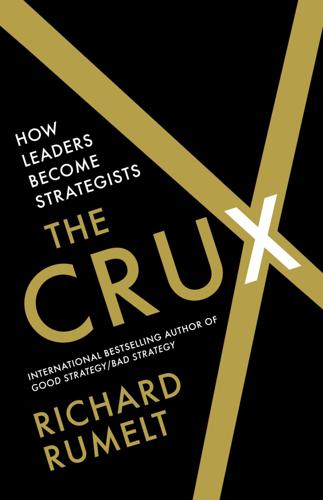
The Crux
by
Richard Rumelt
Published 27 Apr 2022
Like the old BCG matrix, its careless use can create more fog than clarity. With overuse, the term disruption has come to mean almost anything that upsets an existing business or state of affairs. The idea, however, had a more precise meaning when it was first deployed by Harvard professors Clayton Christensen and Joseph Bower. Their focus was on the many leading companies failing to “stay on top” when competitors employed new technologies: “Goodyear and Firestone entered the radial-tire market quite late. Xerox let Canon create the small-copier market. Bucyrus-Erie allowed Caterpillar and Deere to take over the mechanical excavator market.
…
In the classic version of disruption, a maker of hard disk drives for desktop PCs had customers who wanted faster and faster drives with ever more capacity, so it would tend to ignore the new smaller two-and-a-half-inch hard drives. The existing customers weren’t interested in them. But as the smaller drives became more capable, they went into laptops and actually became more cost effective than your traditional larger desktop drives. In this story, the company is “disrupted from below.” Clayton Christensen’s vivid descriptions of disruption from below in the hard-disk industry, the excavator market, and steel mini mills terrified a generation of executives. Executives worried that they were too focused on their successful products and their best customers. Should they respond to every competitive product that was not as good as theirs?
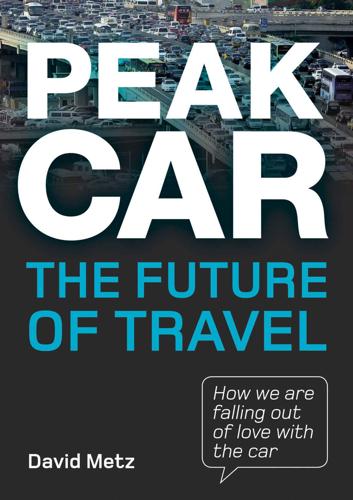
Peak Car: The Future of Travel
by
David Metz
Published 21 Jan 2014
One possible application of this technology would be to taxis, if lower fares increased their attraction to passengers (in which case the innovation would be disruptive to taxi drivers). Driverless trains are already with us—for instance on London’s Docklands Light Railway—safe and practical because access to the system is controlled. Clayton Christensen, originator of the concept of disruptive innovation, argued that the electric car might be such a technology. Possibly the electric car will displace vehicles powered by conventional internal combustion engines. Car manufacturers who do not have access to this technology would lose market share, but the battery manufacturers who might make the technological breakthrough would be keen to supply all users.
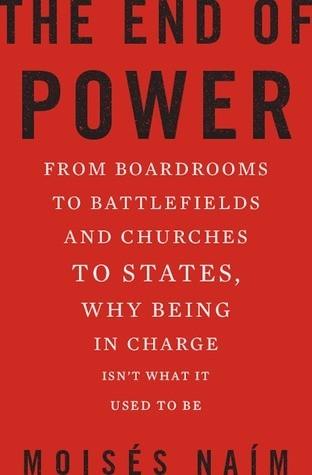
The End of Power: From Boardrooms to Battlefields and Churches to States, Why Being in Charge Isn’t What It Used to Be
by
Moises Naim
Published 5 Mar 2013
It is what capitalism consists in and what every capitalist concern has got to live in.”42 The shifts in power that we see all around us—which include and transcend the ascent and demise of business enterprises—are certainly consistent with Schumpeter’s expectations. They are also in line with the insights of Clayton Christensen, a Harvard Business School professor who coined the term disruptive innovation, meaning a change—in technology, service, or product—that creates a new market by relying on a completely new approach. The effects of a disruptive innovation eventually spill over to other related or similar markets and undermine them.
…
On the other hand, the outsourced drug discovery market has grown faster than overall drug R&D since 2001; it expanded from $2 billion in 2003 to $5.4 billion in 2007 and is estimated to be currently growing at 16 percent per year.45 None of this bodes well for large companies. As the business scholar Clayton Christensen argued in a famous book, The Innovator’s Dilemma, even the very best large companies operate by a set of procedures that make them good at harnessing “sustaining technologies” (the new technologies that help make existing products better) but terrible at identifying and capitalizing on disruptive technologies (the new technologies that usually emerge at the margins of an existing market but eventually stand to remake it).
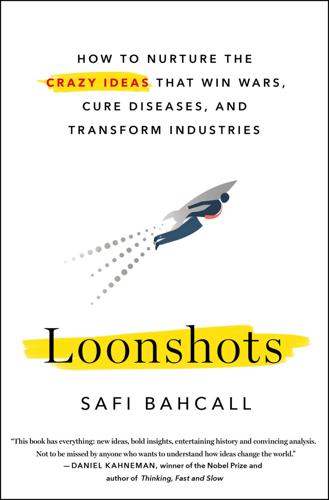
Loonshots: How to Nurture the Crazy Ideas That Win Wars, Cure Diseases, and Transform Industries
by
Safi Bahcall
Published 19 Mar 2019
Disruption This afterword is mostly for business-theory or innovation-theory junkies who may have heard of, or even occasionally make use of, the term disruptive or the term (which causes me even more stomach pain) disruptive innovation. First, to get something out of the way quickly: the two types of loonshots described in chapter 3 are unrelated to what Louis Galambos in 1992 called “adaptive” vs. “formative” innovations, and Clayton Christensen in 1997 called “sustaining” vs. “disruptive” innovations. The two loonshots distinguish between a new strategy (S-type) and a new product or technology (P-type). Galambos and Christensen distinguish between improvements to existing products (sustaining) and technologies that eventually significantly alter some market (disruptive).
…
The reason to use the term will become clearer later. * The word choice is borrowed from a phrase made famous by Sheryl Sandberg. * For business theorists: The two types of loonshots are unrelated to what Louis Galambos in 1992 called “adaptive” vs. “formative” innovations, and Clayton Christensen in 1997 called “sustaining” vs. “disruptive” innovations. For the distinction, see the afterword. * The data sample included over one hundred YouTube concert videos watched by the authors, from which they concluded mosh pits and circle pits “are robust, reproducible, and largely independent of factors such as the musical subgenre, timing of performance, crowd size, arena size, suggestions from the band, time of year, and socioeconomic status of the moshers” (Silverberg et al., “Collective Motion of Humans in Mosh and Circle Pits at Heavy Metal Concerts,” PRL 110 [2013]).
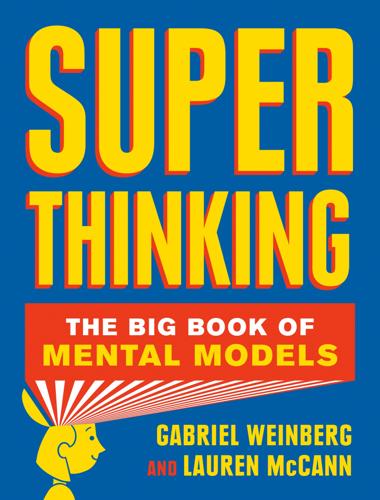
Super Thinking: The Big Book of Mental Models
by
Gabriel Weinberg
and
Lauren McCann
Published 17 Jun 2019
More broadly, pivoting can apply across all areas of life: your career path, a difficult relationship, how you’re approaching meeting your child’s educational needs, and so forth. When considering a pivot, you can use a few mental models to help you decide what to do. Harvard Business School professor Clayton Christensen named and championed the model of jobs to be done, which asks you to figure out the real job that your product does, which can be different than what you might initially think. An oft-cited example by Christensen is a power drill: “Customers want to ‘hire’ a product to do a job, or, as legendary Harvard Business School marketing professor Theodore Levitt put it, ‘People don’t want to buy a quarter-inch drill.
…
Would we all have had digital cameras years earlier? Could it have eventually pivoted into a role powering the cameras in most smartphones or pivoted even more drastically and created a product like Instagram? We’ll never know. Consumer Camera Sales Digital vs. Smartphone, 2002-2016 In Clayton Christensen’s seminal work The Innovator’s Dilemma, he lays out the framework for how such disruptive innovations ripple through industries, ushering new industry entrants into power while leaving dead incumbents in their wake. The incumbent’s dilemma is whether to embrace the disruptive technology, usually at the great cost of the existing business.
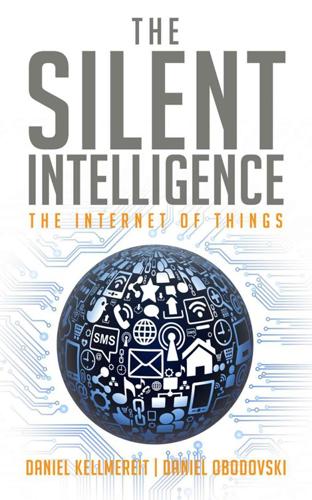
The Silent Intelligence: The Internet of Things
by
Daniel Kellmereit
and
Daniel Obodovski
Published 19 Sep 2013
(Source: http://www.theatlanticcities.com/authors/anthony-flint/.) 23 SARTRE, Partners Conclude After the SARTRE Project (2012). http://www.sartre-project.eu/en/about/news/Sidor/20120917_1.aspx. 24 Economist Intelligence Unit, Rise of the Machines: Moving from Hype to Reality in the Burgeoning Market for Machine-to-Machine Communication (2012). http://digitalresearch.eiu.com/m2m/report. Chapter 5 USE CASES The use cases capture the goals of the system. To understand a use case, we tell stories. ~ Ivar Jacobson In his book The Innovator’s Dilemma,25 Clayton Christensen uses a fascinating Harvard Business School case called “Hewlett-Packard: The Flight of the Kittyhawk.” The Kittyhawk was the product name of a revolutionary hard disk drive developed by Hewlett-Packard (HP) in the early ’90s. The disk was tiny and had a capacity of 20MB to 40MB, which made the product unique at its time with potential to disrupt one or more industries.
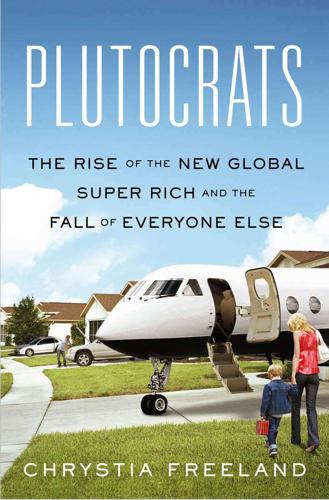
Plutocrats: The Rise of the New Global Super-Rich and the Fall of Everyone Else
by
Chrystia Freeland
Published 11 Oct 2012
Sull calls this “active inertia” and he believes it is the main reason good companies fail: “When the world changes, organizations trapped in active inertia do more of the same. A little faster perhaps or tweaked at the margin, but basically the same old same old. . . . Organizations trapped in active inertia resemble a car with its back wheels stuck in a rut. Managers step on the gas. Rather than escape the rut, they only dig themselves in deeper.” Clayton Christensen, the Harvard Business School professor whose book The Innovator’s Dilemma is the corporate bible on disruptive change, has found that established companies almost always fail when their industries are confronted with disruptive new technologies or markets. And that is not, he argues, because their managers are dumb or lazy.
…
“I made a mistake” Transcript of House of Representatives Committee on Oversight and Government Reform Hearing on the Role of Federal Regulators, October 23, 2008. “we always assume regime stability” McFaul e-mail to CF, February 22, 2011. “active inertia” Donald Sull, “Why Good Companies Go Bad,” Financial Times, October 3, 2005. “These failed firms” Clayton Christensen, The Innovator’s Dilemma: When New Technologies Cause Great Firms to Fail (Harvard Business School Press, 1997), p. xv. “vast, silent, connected” W. Brian Arthur, “The Second Economy,” McKinsey Quarterly, October 2011. Facebook’s Mark Zuckerberg Zuckerberg attended Ardsley High School for two years before transferring to Phillips Exeter Academy.
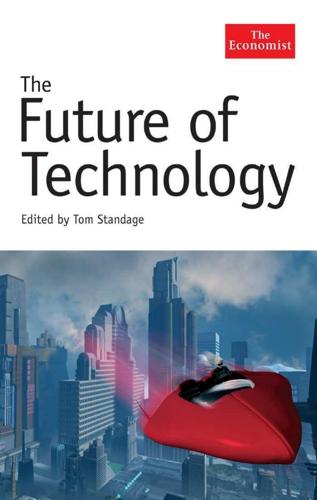
The Future of Technology
by
Tom Standage
Published 31 Aug 2005
“The industry is simply too efficient,” says Eric Schmidt, Google’s chief executive (who seems to have gone quite grey during his mixed performance at his previous job as boss of Novell, a software firm). The it industry also differs from other technology sectors in that its wares become less valuable as they get better, and go from “undershoot” to “overshoot,” to use the terms coined by Clayton Christensen, a professor at Harvard Business School. A technology is in “undershoot” when it is not good enough for most customers, so they are willing to pay a lot for something that is a bit better although not perfect. Conversely, “overshoot” means that a technology is more than sufficient for most uses, and margins sink lower. pcs quickly became a commodity, mainly because ibm outsourced the components for its first venture into this market in the early 1980s, allowing others to clone the machines.
…
The bitter irony, says Mr Lane, is that Microsoft is one of the least likely companies to make breakthroughs in simplification. “It cannot cannibalise itself,” says Mr Lane. “It faces the dilemma.” The dilemma? These days, whenever anybody in the it industry mentions that word, it is instantly understood to refer to The Innovator’s Dilemma (Harvard Business School Press, 1997), a book by Clayton Christensen, a professor at Harvard Business School, who has since followed it up with a sequel, The Innovator’s Solution (Harvard Business School Press, 2003). In a nutshell, the dilemma is this: firms that succeed in one generation of innovation almost inevitably become hamstrung by their own success and thus doomed to lose out in the next wave of innovation.
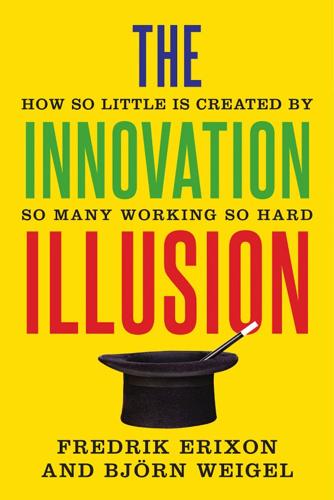
The Innovation Illusion: How So Little Is Created by So Many Working So Hard
by
Fredrik Erixon
and
Bjorn Weigel
Published 3 Oct 2016
Hence, when financial services expand, business development tends to be pushed out. The BIS economists discovered this in one of their studies, and argued that “productivity tends to grow disproportionally slower in industries with lower asset tangibility.”58 Many others have suggested a similar type of problem. “The emphasis on earnings per share,” argue Harvard’s Clayton Christensen and colleagues, “diverts resources away from investments whose payoff lies beyond the immediate horizon.”59 Another way to put it, and to simplify to an extreme, is that an investor owning a stock for only a few months has little interest in supporting costly investments today that might pay off years in the future.
…
However, the risk is that ignoring nonquantifiable objectives pushes companies to make the wrong investment choices: that overlooking becomes too mechanical, and that is a particularly acute problem when dealing with investments in innovation. The use of standard quantitative valuation methods, argue Harvard’s “innovation guru” Clayton Christensen and colleagues, “causes managers to underestimate the real returns and benefits of proceeding with investments in innovation.”69 In other words, companies risk failing to accurately predict future cash flows by making incorrect assumptions about the future. But, to make it even more intriguing, myopic companies also become overoptimistic about the not-to-invest scenario when modeling current investments quantitatively.
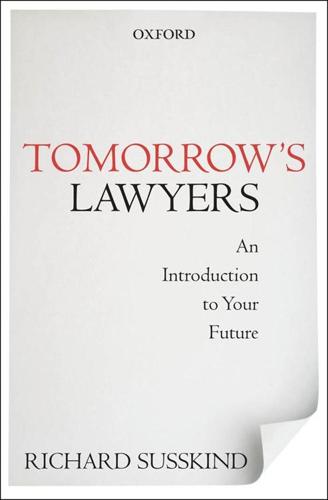
Tomorrow's Lawyers: An Introduction to Your Future
by
Richard Susskind
Published 10 Jan 2013
Instead, based on a user’s answers to specific questions about his or her particular circumstances, the document generated will be one output of countless (often millions of) possible permutations. The end result is a tailored solution, delivered by an advanced system rather than by a human craftsman. That is the future of legal service. 5 Disruptive Legal Technologies In management theory, drawing on Clayton Christensen’s book, The Innovator’s Dilemma, a distinction is commonly drawn between sustaining and disruptive technologies. In broad terms, sustaining technologies are those that support and enhance the way that a business or a market currently operates. In contrast, disruptive technologies fundamentally challenge and change the functioning of a firm or a sector.
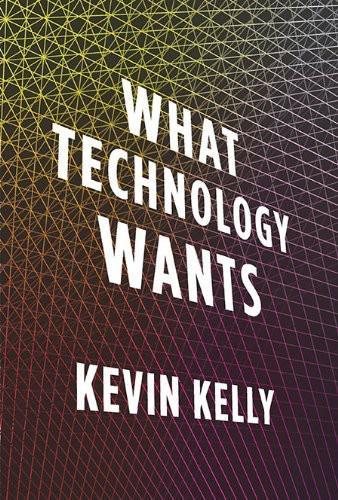
What Technology Wants
by
Kevin Kelly
Published 14 Jul 2010
Moore. (2006) “Understanding Moore’s Law.” Philadelphia: Chemical Heritage Foundation. 169 The Continuum of Kryder’s Law: Data from Clayton Christensen. (1997) The Innovator’s Dilemma: When New Technologies Cause Great Firms to Fail. Boston: Harvard Business School Press, p. 10. 170 need to “listen to the technology”: (2001) “An Interview with Carver Mead.” American Spectator, 34 (7). http://laputan.blogspot.com/2003_09_21_laputan_archive.html. 170 Compound S Curves: Data from Clayton Christensen. (1997) The Innovator’s Dilemma: When New Technologies Cause Great Firms to Fail. Boston: Harvard Business School Press, p. 40. 9.

Open: The Story of Human Progress
by
Johan Norberg
Published 14 Sep 2020
There are not uses in the home itself.’32 Jobs was himself ousted from Apple, before he returned in 1997 to save the faltering company. He managed to turn it into the world’s most valuable company, partly based on the success of a revolutionary smartphone in 2007, which was immediately met by the certain prediction ‘Apple won’t succeed with the iPhone’ by the innovation guru (and I mean that in a non-ironic sense) Clayton Christensen, ‘History speaks pretty loudly on that.’33 The simple truth is that no one can predict the future. Ironically, in the 1988 study that claimed the Soviet Union was at square one, the authors also added a few words about their own US: ‘It would be optimistic to predict a rapid transition of personal computing to a phase 5 [a part of daily life] technology.’
…
Goodman, ‘The Soviet Union and the personal computer “revolution”’, Report to National Council for Soviet and East European Research, June 1988. 30 ‘If she can only cook as well as Honeywell can compute’, as the ad had it. 31 S. Goodman, ‘Soviet computing and technology transfer: An overview’, World Politics, 31(4), July 1979, p. 544. 32 ‘Apple wizard says computer “fad” dying’, The Pantagraph, 20 January 1985. D. Sanger, ‘Computers for the home’, The Day, 5 May 1985. 33 J. McGregor, ‘Clayton Christensen’s innovation brain’, Bloomberg, 18 June 2007. 34 Stapleton and Goodman, 1988. 35 J. Edstrom and M. Eller, Barbarians Led by Bill Gates. New York, Henry Holt & Company, 1998, p. xii. 36 S. Johnson, ‘The internet? We built that’, New York Times, 21 September 2012. 37 In an email exchange documented here: http://www.nethistory.info/Archives/origins.html (accessed 9 March 2020). 38 Johnson, 2011, p. 221. 39 Ibid, p. 89. 40 G.
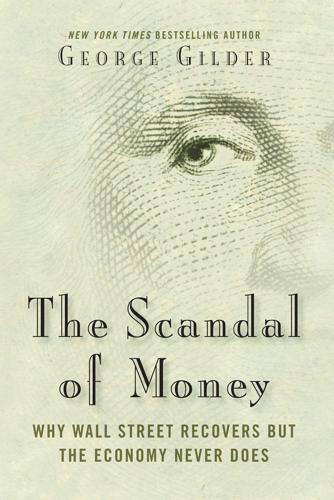
The Scandal of Money
by
George Gilder
Published 23 Feb 2016
Economic Prospects: Secular Stagnation, Hysteresis, and the Zero Lower Bound,” keynote address, National Association of Business Economists’ Policy Conference, February 24, 2014, which focuses on the impotence of expansionary monetary policy when interest rates approach zero. 7.Peter Thiel with Blake Masters, Zero to One: Notes on Startups, or How to Build the Future (New York, NY: Crown Business, 2014), 193. For my time-sensitive money, this is the most original and interesting book ever written on business strategy. (Its chief rival is the more technical Innovators’ Dilemma by Clayton Christensen.) 8.Nassim Nicholas Taleb and Mark Spitznagel, “The Great Bank Robbery,” Global Public Square, CNN, October 2011. 9.David Malpass, speech to the Needham Growth Conference, New York, January 15, 2015. As Malpass points out, zero interest rates mean free money, and “when anything is free it is allocated by queue and only the privileged folk at the front of the line get any.” 10.Charles Gave, “Poverty Matters for Capitalists,” GavekalDragonomics (Hong Kong: Gavekal Global Research, July 9, 2014), 1–6.
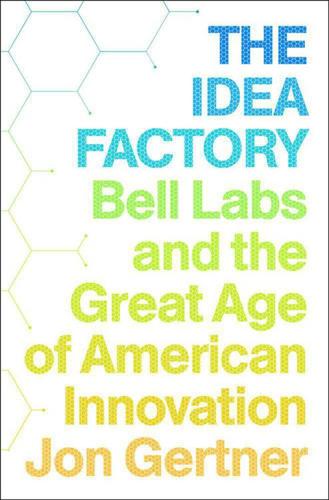
The Idea Factory: Bell Labs and the Great Age of American Innovation
by
Jon Gertner
Published 15 Mar 2012
They would prefer to invest in incremental improvements, and to have wonderful picnics, and make this quarter’s earnings without strain.” In part, Mayo connects this to the “immense stress” associated with funding research on ideas that may destroy your business if the results make your current product obsolete. Those who study innovation know this as the innovator’s dilemma, a term coined by the Harvard professor Clayton Christensen. “This is a very strong force,” Mayo points out. “It’s in me. And in everybody.” Strangely enough, however, it may not have been in Mervin Kelly or in some of his disciples—perhaps because the monopoly, at least for a time, guaranteed that the phone company’s business would remain sturdy even in the face of drastic technological upheaval.
…
With so many uncertainties in the picture no accurate estimate of research and development cost can be had but comparison with other large system developments would suggest a minimum cost of $20,000,000 and a possibility of a considerably higher figure.” The memo also predicted, incorrectly, that the “propaganda value” (i.e., the public relations boost) from a communications satellite would be minimal. 14 The term was coined years after Kelly’s reign, by Harvard professor Clayton Christensen. 15 J. R. Pierce and R. Kompfner, letter to M. J. Kelly, 8 October 1958. In Kompfner’s handwriting at the top it reads: “Copy given to J.R.P. who showed it to W.O.B. Not Sent.” J.R.P. is Pierce; W.O.B. is William (Bill) Baker. AT&T archives. 16 J. R. Pierce and R. Kompfner, “Proposal for Research Toward Satellite Communication,” January 6, 1959.
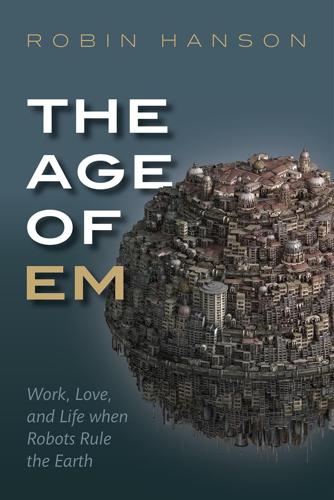
The Age of Em: Work, Love and Life When Robots Rule the Earth
by
Robin Hanson
Published 31 Mar 2016
In The Role of Demographics in Occupational Stress and Well Being (Research in Occupational Stress and Well-being, Volume 12), 235–283, edited by Pamela Perrewé, Christopher Rosen, and Jonathon Halbesleben. Emerald Group Publishing Limited. Thomas, Frank, and Ollie Johnston. 1981. The Illusion of Life: Disney Animation. Abbeville Press. Thompson, Ben. 2013. “What Clayton Christensen Got Wrong.” Stratechery blog, September 22. http://stratechery.com/2013/clayton-christensen-got-wrong/. Torelli, Carlos, and Andrew Kaikati. 2009. “Values as Predictors of Judgments and Behaviors: The Role of Abstract and Concrete Mindsets.” Journal of Personality and Social Psychology 96(1): 231–247. Tormala, Zakary, Jayson Jia, and Michael Norton. 2012.

The Finance Curse: How Global Finance Is Making Us All Poorer
by
Nicholas Shaxson
Published 10 Oct 2018
When the Harvard Business School embraced Jensen, explains Duff McDonald, it transformed itself from an institution seeking to create a body of enlightened business people into a cheerleader for Wall Street. ‘They basically threw in the towel and said, “Fuck it, let’s go for the money.”’ Not coincidentally their fundraising improved spectacularly. Clayton Christensen, a dissenting professor at the school who specialises in business innovation, explains how destructive the new thinking has been. ‘The professors of finance in the main business schools, the professors of economics have over the last forty years created a church. I call it the New Church of Finance.
…
For a deeper investigation, see Lynn Stout, The Shareholder Value Myth: How Putting Shareholders First Harms Investors, Corporations, and the Public, Berret-Koehler, 2012; and Karen Ho, Liquidated, 2009, Chapter 3 and particularly p.124 onwards. 7. From ‘The New Church of Finance: Deeply held belief systems and complex codes must be changed’, Deseret News, 9 December 2012, and from my phone interview with Clayton Christensen, 24 May 2012. 8. As Eileen Appelbaum and Rosemary Batt put it in Private Equity at Work: When Wall Street Manages Main Street, Russel Sage Foundation, 2014, pp.7–8, ‘with the portfolio companies of most private equity firms located in many different industries, private equity’s expertise is typically financial, not operational’. 9.

The Start-Up of You: Adapt to the Future, Invest in Yourself, and Transform Your Career
by
Reid Hoffman
and
Ben Casnocha
Published 14 Feb 2012
Think Two Steps Ahead Planning and adapting means thinking carefully about your future. Lunging at the first well-paid and/or high-status job you come upon may offer immediate gratification, but it won’t get you any closer to building a meaningful career. A goal that can be achieved in a single step is probably not very meaningful—or ambitious. The business professor Clayton Christensen once told graduating students at Harvard Business School, “If you study the root causes of business disasters, over and over you’ll find [a] predisposition toward endeavors that offer immediate gratification.” At the same time, though, don’t do the opposite and think ahead too far in the future.

The Network Imperative: How to Survive and Grow in the Age of Digital Business Models
by
Barry Libert
and
Megan Beck
Published 6 Jun 2016
Many of our most admired companies won’t stand a chance when the most valuable digital networks take on their markets. Nigel Fenwick of Forrester Research said that by 2020, every organization will be either digital predator or digital prey.1 Your Strategy Needs a Business Model Face-Lift To return to the quote by Clayton Christensen at the start of this chapter, the problem is that most organizations don’t know where they are starting, much less where they are headed and how to get there. We wrote this book to help the leaders of traditional firms—those focused internally on using their own assets and employees to make, market, and sell—enter the world of digital network business models and leverage an external network to contribute its assets, ideas, skills, and relationships and share in the value created.

The Technology Trap: Capital, Labor, and Power in the Age of Automation
by
Carl Benedikt Frey
Published 17 Jun 2019
Workers can then use these funds at different stages in their career for training purposes, in response to replacement or to advance their careers more generally. Before scaling up such efforts, however, they need to be carefully evaluated. Major reforms to transform education and training might also be required more broadly. As Harvard University’s Clayton Christensen has forcefully argued, there is no particular reason why people with different learning requirements should have to conform to rigid academic programs that run for a specified period of time. The factory-based education model, which emerged in the aftermath of the Industrial Revolution, gradually expanded across many dimensions with more hours spent in school, more subjects covered, and more years of schooling.
…
It draws upon a vast body of research to which numerous scholars have contributed. I guess my own journey to writing it began in my school years, when my father, Christopher, got back from a business trip with two new books for me. The first was Joel Mokyr’s The Lever of Riches. The second was Clayton Christensen’s The Innovator’s Dilemma. Their work showed me that long-term prosperity derives from technological innovation. But it also made abundantly clear that progress often comes with economic and societal disruption. My lifelong interest in the subject is thanks to my father. Over the past four years of writing, I have accumulated many debts.
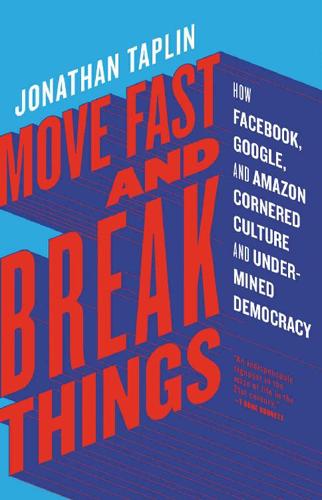
Move Fast and Break Things: How Facebook, Google, and Amazon Cornered Culture and Undermined Democracy
by
Jonathan Taplin
Published 17 Apr 2017
As former treasury secretary Lawrence Summers has put it, “Lack of demand creates lack of supply.” Instead of making investments that could create new jobs, firms are now using their cash to buy back stock, which only increases economic inequality. 5. The Harvard Business School guru Clayton Christensen (The Innovator’s Dilemma: When New Technologies Cause Great Firms to Fail) argues, “Financial markets—and companies themselves—use assessment metrics that make innovations that eliminate jobs more attractive than those that create jobs.” Whereas the return on “efficiency innovations” is relatively quick, the more important “market-creating innovations,” which create entirely new industries that produce jobs, have a long time in which to return the investment.
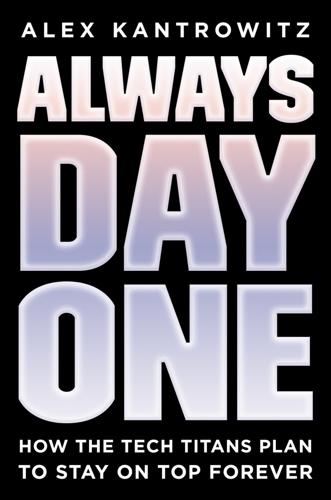
Always Day One: How the Tech Titans Plan to Stay on Top Forever
by
Alex Kantrowitz
Published 6 Apr 2020
If you sell dresses, for instance, supporting each design requires loads of execution work: pricing, sourcing, inventory management, sales, marketing, shipping, and returns. Additional support work props up these processes, including basic tasks in human resources, contracts, and accounting. The burden of execution work has made it nearly impossible for companies with one core business to develop and support another (Clayton Christensen calls this the “innovator’s dilemma”). Those who’ve tried have almost always pulled back, or found it impossible to sustain multiple businesses at once. “GM historically made many things other than cars,” Professor Ned Hill, an economist at Ohio State University, told me, citing refrigerators and locomotives.
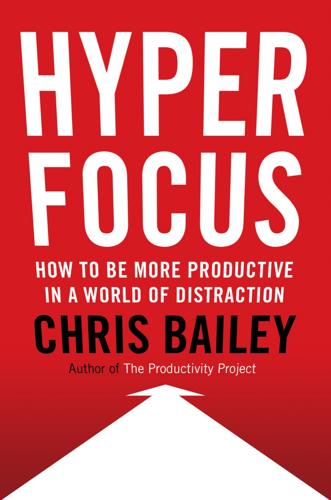
Hyperfocus: How to Be More Productive in a World of Distraction
by
Chris Bailey
Published 31 Jul 2018
Later I bought a dumb feature phone and then an even more distracting smartphone. Next came an iPad and a fitness tracker. I’m sure there will be more devices in my future. This speaks to a trap we increasingly face: bringing new devices into our lives without first questioning their value. Clayton Christensen, a professor at Harvard Business School, developed a useful way of assessing the devices in your life: question what “jobs” you “hire” devices to do for you. Every product we buy should do a job for us—we hire Kleenex to blow our nose; Uber to get from one place to another; OpenTable to book a table at a restaurant; Match.com to find a partner.

The AI-First Company
by
Ash Fontana
Published 4 May 2021
* “API.DATA.GOV,” Data.gov, accessed September 11, 2020, https://api.data.gov. *Convolutional neural networks and recurrent neural networks are explained on p. 151. *See the glossary for definitions of these terms. * https://en.wikipedia.org/wiki/Carnot_cycle. * Clayton Christensen, The Innovator’s Dilemma (Boston: Harvard Business Review Press, 2016). * Ben Thompson, “Defining Aggregators,” Stratechery, accessed September 26, 2017, https://stratechery.com/2017/defining-aggregators/.
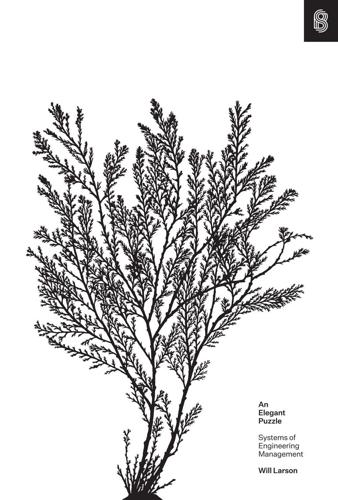
An Elegant Puzzle: Systems of Engineering Management
by
Will Larson
Published 19 May 2019
keywords=INSPIRED%3A+How+to+Create+Tech+Products+Customers+Love+by+Marty+Cagan&qid=1551586391&s=gateway&sr=8-1-fkmrnull 12. https://www.amazon.com/Innovators-Dilemma-Technologies-Management-Innovation/dp/1633691780/ref=sr_1_fkmrnull_1?keywords=The+Innovator’s+Dilemma%3A+When+New+Technologies+Cause+Great+Firms+to+Fail+by+Clayton+Christensen&qid=1551586451&s=gateway&sr=8-1-fkmrnull 13. https://www.amazon.com/Myth-Revisited-Small-Businesses-About-ebook/dp/B000RO9VJK/ref=sr_1_fkmrnull_1?keywords=The+E-Myth+Revisited%3A+Why+Most+Small+Businesses+Don’t+Work+and+What+to+Do+About+It+by+Michael+Gerber&qid=1551586507&s=gateway&sr=8-1-fkmrnull 14. https://www.amazon.com/Fierce-Conversations-Achieving-Success-Conversation/dp/B06XGNMDBY/ref=sr_1_fkmrnull_1?

Tesla: Inventor of the Electrical Age
by
W. Bernard Carlson
Published 11 May 2013
Schumpeter was fascinated by the role that innovation played in the modern economy, and he emphasized in his writings that there were two kinds of innovative activity. On the one hand, there are the creative responses of entrepreneurs and inventors who introduce radically new products, processes, and services and in so doing wreak the creative destruction that Schumpeter regarded as a central characteristic of capitalism. More recently, Clayton Christensen has characterized Schumpeter’s creative responses as “disruptive innovations” in the sense that selected firms sometimes pursue technologies that disrupt the pattern of established industries and alter the everyday life of consumers.50 On the other hand, there are the adaptive responses of managers and engineers who undertake the steady and incremental work of establishing the corporate structures, manufacturing procedures, and marketing plans that allow products and services to be produced and consumed.51 Clearly the success of any economy—especially the United States in Tesla’s time, from 1870 to 1920—has depended on getting the right mix of creative and adaptive innovations.
…
To respond to this challenge, we need to recall Schumpeter’s idea that economies grow as a result of two kinds of innovation (see Chapter 2). On one hand, there are the creative responses of entrepreneurs and inventors who introduce new products, processes, and services and in so doing dramatically change everyday life and reorder the industrial world; as Clayton Christensen has suggested, these can be called disruptive innovations.15 On the other hand, there are the adaptive responses of managers and engineers who undertake the steady and incremental work of establishing the corporate structures, manufacturing procedures, and marketing plans that allow products and services to be produced and consumed.
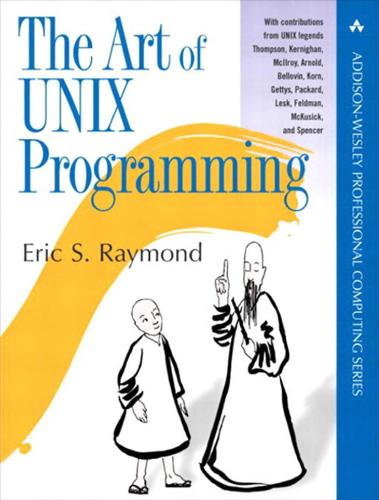
The Art of UNIX Programming
by
Eric S. Raymond
Published 22 Sep 2003
The lesson for the future is that over-committing to any one technology or business model would be a mistake — and maintaining the adaptive flexibility of our software and the design tradition that goes with it is correspondingly imperative. Another lesson is this: Never bet against the cheap plastic solution. Or, equivalently, the low-end/high-volume hardware technology almost always ends up climbing the power curve and winning. The economist Clayton Christensen calls this disruptive technology and showed in The Innovator's Dilemma [Christensen] how this happened with disk drives, steam shovels, and motorcycles. We saw it happen as minicomputers displaced mainframes, workstations and servers replaced minis, and commodity Intel machines replaced workstations and servers.
…
Whittington, Henry Spencer, David Keppel, and Mark Brader. Recommended C Style and Coding Standards. 1990. An updated version of the Indian Hill C Style and Coding Standards paper, with modifications by the last three authors. It describes a recommended coding standard for C programs. Available on the Web. [Christensen] Clayton Christensen. The Innovator's Dilemma. HarperBusiness. 2000. ISBN 0-066-62069-4. The book that introduced the term “disruptive technology”. A fascinating and lucid examination of how and why technology companies doing everything right get mugged by upstarts. A business book technical people should read.
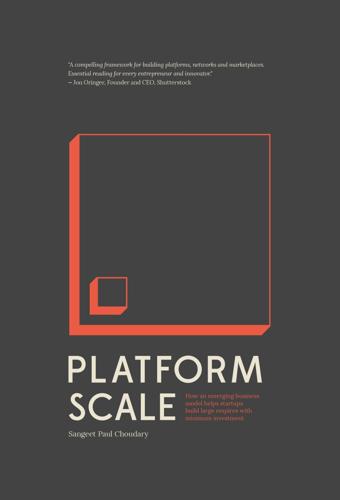
Platform Scale: How an Emerging Business Model Helps Startups Build Large Empires With Minimum Investment
by
Sangeet Paul Choudary
Published 14 Sep 2015
FENG ZHU, Professor, Harvard Business School “A forefront researcher into how businesses can better use metadata and current technology.” — 4BC 1116 NEWS TALK, Australian Radio, at the G20 World Summit 2014 “Sangeet is one of the deepest thinkers I know. He has helped countless startups understand and unlock their core value as platform businesses. His work sits next to Clayton Christensen and Geoffrey Moore.” — MENG WONG, Co-founder, JFDI “One of the best innovation strategists in the world and an expert on building platforms. His work is a must-read for entrepreneurs, investors, and innovators worldwide.” — KEVIN DEWALT, Former EIR at NSF and Founder, SoHelpful.Me “Sangeet’s work provides amazing insight into the success and failure of todays business models, a resource that entrepreneurs and innovators cannot afford to ignore

100 Plus: How the Coming Age of Longevity Will Change Everything, From Careers and Relationships to Family And
by
Sonia Arrison
Published 22 Aug 2011
In fact, as implied earlier, because people will have longer health spans, there will likely be an increase in the amount of time they spend in training at the beginning of their lives as well as throughout their lives. This begs the question of whether educational delivery will change as our lives lengthen and we become more technologically sophisticated. Education likely will expand to offer more personalized instruction. In a recent book titled Disrupting Class, Clayton Christensen and his coauthors make a persuasive case that the future of education will become more tailored to individuals’ learning styles and levels. Whereas one student might learn best from rote memorization, another might be better off learning through an interactive game format or virtual reality system.

The Formula: How Algorithms Solve All Our Problems-And Create More
by
Luke Dormehl
Published 4 Nov 2014
Kelly says, with a twinge of genuine pain in his voice. “In the old days there was tons of stuff around for them. It might not always have been exciting work, but at least it was available. Now guys like us can do a lot of that work just by using the right algorithm.” Divorce by Algorithm Business-management guru Clayton Christensen identifies two types of new technology: “sustaining” and “disruptive” innovations.19 A sustaining technology is something that supports or enhances the way a business or market already operates. A disruptive technology, on the other hand, fundamentally alters the way in which a particular sector functions.

Humans as a Service: The Promise and Perils of Work in the Gig Economy
by
Jeremias Prassl
Published 7 May 2018
Rather ironically, Didi, in turn, already owns stakes in several of Uber’s key competitors, including Lyft in the United States and Ola in India: Leslie Hook, ‘Uber makes a U-turn in China as subsidy war ends in Didi deal’, Financial Times (1 August 2016), http://www.ft.com/content/ 7f6e251a-5801-11e6-9f70-badea1b336d4, archived at https://perma.cc/2MYF- JJ3X; Ma Fangjing and Charles Clover, ‘Uber shares soar after Didi deal’, Financial Times (2 August 2016), http://www.ft.com/content/54217d94-5892- 11e6-8d05-4eaa66292c32, archived at https://perma.cc/E4LJ-86NX 29. Clayton Christensen, Michael Raynor, and Rory McDonald, ‘What is dis- ruptive innovation?’, Harvard Business Review (December 2015), https://hbr. * * * 154 Notes org/2015/12/what-is-disruptive-innovation, archived at https://perma.cc/ YUW5-UY2P 30. Ibid. 31. Paul Bradley Carr, ‘Travis shrugged: the creepy, dangerous ideology behind Silicon Valley’s cult of disruption’, Pando (24 October 2012), https://pando.

Shadow Work: The Unpaid, Unseen Jobs That Fill Your Day
by
Craig Lambert
Published 30 Apr 2015
The product will probably not be as good as what a professional would produce, but it is good enough for many customers, and far less expensive. The shadow-working consumer simply customizes the template for her needs and goes ahead with it—planting the garden or going live with the new website. Such templates are examples of “disruptive innovation,” a term Harvard Business School professor Clayton Christensen coined in his landmark 1992 book The Innovator’s Dilemma. Disruptive innovation happens when a new company introduces a product that is cheaper, simpler, and/or faster than those on the market. Toyota and Honda, for example, disrupted Detroit’s Big Three automakers by bringing out cheaper, smaller, no-frills cars like the Corolla and Civic.
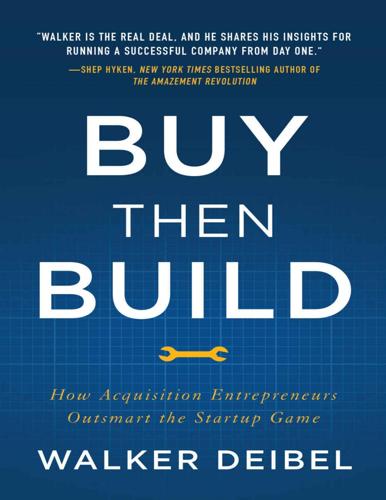
Buy Then Build: How Acquisition Entrepreneurs Outsmart the Startup Game
by
Walker Deibel
Published 19 Oct 2018
He was able to identify an enormous opportunity to offer hospitals art consulting and design services, along with the custom framing manufacturing he already did. This expanded his current offering to fill an additional customer need, expanding the company into “blue ocean” territory. UNDERSTANDING INNOVATION Often, entrepreneurship is often associated with disrupting existing industries with innovation. In Clayton Christensen’s book The Innovator’s Dilemma, the Harvard professor beautifully illustrates the relationship between existing and disruptive technologies through mapping the quality level of the product over time. Mature markets often operate at a quality level above what is required by customers, eliminating quality issues between competitors, while emerging technologies are usually ignored by industry incumbents because the quality level is too low for offering to existing customers.
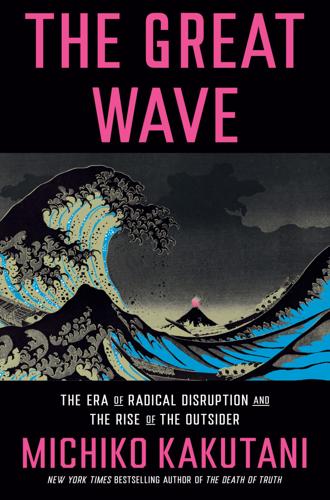
The Great Wave: The Era of Radical Disruption and the Rise of the Outsider
by
Michiko Kakutani
Published 20 Feb 2024
Digital technology, the NYU professor Clay Shirky (Here Comes Everybody) wrote, gave people the ability to take collective action “outside the framework of traditional institutions and organizations.” Investors, venture capitalists, and existing businesses started keeping an eye out for the next “disruptive innovation”—the term formulated by the late Harvard Business School professor Clayton Christensen in the mid-1990s to describe the bottom-up process whereby smaller companies can displace established businesses by creating a new market (or entering the low end of an existing market), the way, say, Wikipedia displaced Encyclopaedia Britannica or Netflix displaced Blockbuster video stores.

Behind the cloud: the untold story of how Salesforce.com went from idea to billion-dollar company--and revolutionized an industry
by
Marc Benioff
and
Carlye Adler
Published 19 Nov 2009
Leveraging the power of trainers has allowed us to have thousands of developers creating new functionality, sharing it in our online marketplace, and enabling us to offer a more comprehensive service to our customers. 253 BEHIND THE CLOUD Think about the partners that might recommend your service and the vendors that might build complementary products; then, do everything you can to strengthen the entire ecosystem that surrounds your company. In doing so, you can turn a handful of disjointed partners into a thriving community of supporters, innovators, and evangelists that will further your success. 254 The Final Play Play #111: Make Everyone Successful A little over a decade ago, Clayton Christensen wrote a book called The Innovator’s Dilemma. It illustrated how a start-up company—by employing innovation that disrupts existing business models—will always beat the established big companies. He cited examples like Intel’s success with the microprocessor and the steel mill Nucor’s hit with its revolutionary way to reuse scrap.

The Facebook era: tapping online social networks to build better products, reach new audiences, and sell more stuff
by
Clara Shih
Published 30 Apr 2009
Nor should you expect that the kings of today’s era will reign in tomorrow’s era. More likely, the kings don’t see it coming, don’t want to see it coming, or see it coming but can’t get organizationally aligned around doing anything about it. This is a classic example of the innovator’s dilemma, a concept introduced by Harvard Business School Professor Clayton Christensen to describe the inability of most large companies to embrace radically new technologies because they are disruptive to the existing business. Look at what happened to Eastman Kodak, the dominant player in photography for many decades. As the digital photography revolution was unfolding in the late nineties and into this century, Kodak was still seeing the vast majority of its profits come from its slowly declining but still extremely compelling print film business.
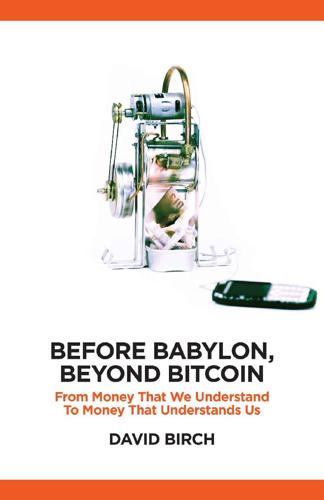
Before Babylon, Beyond Bitcoin: From Money That We Understand to Money That Understands Us (Perspectives)
by
David Birch
Published 14 Jun 2017
Bell instead used these patents, which are often called the most valuable patents in history, to set up his own phone company: a company that was grossing a million dollars per annum well before the Dow Jones started. Yet at the time, Western Union management were making the right decision on the basis of the information available to them. As Clayton Christensen points out, it is very difficult for an incumbent to justify investment in new technology when it creates a different business model because it will always earn more in the short term from investing in its core business; competitors have asymmetric motivation (Christensen et al. 2005). And naturally, if the incumbent asks its customers what they want, they will direct the investment in the same direction.
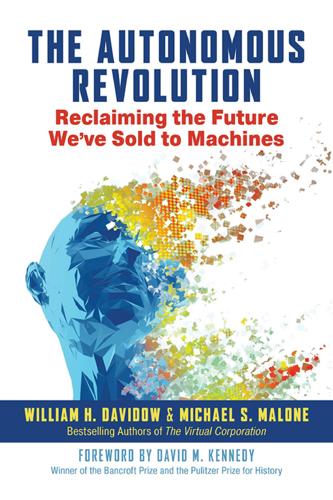
The Autonomous Revolution: Reclaiming the Future We’ve Sold to Machines
by
William Davidow
and
Michael Malone
Published 18 Feb 2020
So, in a sense, the Uber and TaskRabbit business models are ideal for employers. The beauty of it is that the free market sets the value of the work done by the non-core employees. Since the company takes a cut of what the contractors make, its fixed costs are very low. WHEN SUCCESS MEANS SMALLER In 1997, Clayton Christensen published one of the most influential business books of all time, The Innovator’s Dilemma. He describes how the very processes that enable market leaders to succeed also set them up for failure when disruptive new products and technologies appear. A common reason is that the market for a new service is too small to meet its needs for growth, so the large company doesn’t pay much attention to it—until that market explodes, led by a suddenly powerful new competitor.

Listen, Liberal: Or, What Ever Happened to the Party of the People?
by
Thomas Frank
Published 15 Mar 2016
It is the reason Northeastern University has a “venture accelerator” it calls IDEA; that Harvard has the famous Innovation Center; that Boston University’s business school has a Department of Strategy and Innovation; that its College of Engineering has a Product Innovation Center; and that one of its colleges offers a certificate in Innovation and Entrepreneurship. At Harvard, where I met innovation guru Clayton Christensen ambling across a parking lot, the dream of being the next Mark Zuckerberg or Bill Gates is almost palpable. As well as the usual incubators and accelerators, the school boasts a $100 million venture capital fund that is focused on commercializing the ideas of former students.19 One of this fund’s press releases quotes a Harvard professor on how this heap of money advances the school’s “mission,” which today (apparently) includes “marshaling significant resources to help create thrilling companies.”
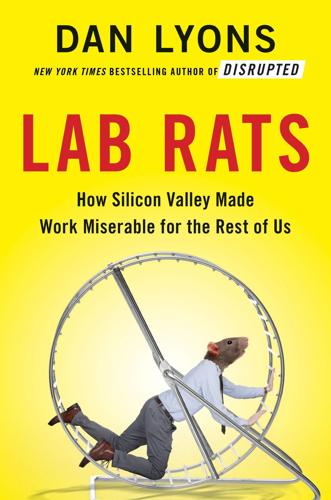
Lab Rats: How Silicon Valley Made Work Miserable for the Rest of Us
by
Dan Lyons
Published 22 Oct 2018
Later came Michael Porter, a Harvard business professor who claimed to have developed a methodology that would enable companies to create sustainable advantages using his Five Forces Framework. Porter launched a consulting company, Monitor Group, which raked in enormous fees from corporate clients—until, somehow, in 2013 the bottom fell out and Monitor Group went bankrupt. After Drucker and Porter came Clayton Christensen, a Harvard professor who achieved business guru status with a 1997 book, The Innovator’s Dilemma. Gary Hamel wrote The Future of Management and talked about Management 2.0. Jim Collins explained how to go from Good to Great. Renée Mauborgne and W. Chan Kim wrote Blue Ocean Strategy. If you work in the corporate world you’ve undoubtedly heard of these books.

Artificial Unintelligence: How Computers Misunderstand the World
by
Meredith Broussard
Published 19 Apr 2018
Brown, “Nearly a Third of Millennials Have Used Venmo to Pay for Drugs.” 13. Newman, “Who’s Buying Drugs, Sex, and Booze on Venmo? This Site Will Tell You.” III Working Together 10 On the Startup Bus Technochauvinists love disruptive innovation. Popularized by Harvard Business School professor Clayton Christensen in his 1997 book The Innovator’s Dilemma, disruptive innovation is allegedly the technological tidal wave that sweeps away the competition and results in huge profits. Innovation—and disruption, come to think of it—is usually connected to young people. Ask an executive who he imagines as the ultimate innovator, and odds are he’ll paint a picture of a twenty-something computer genius in a hoodie who’s writing code to make the next billion-dollar startup.
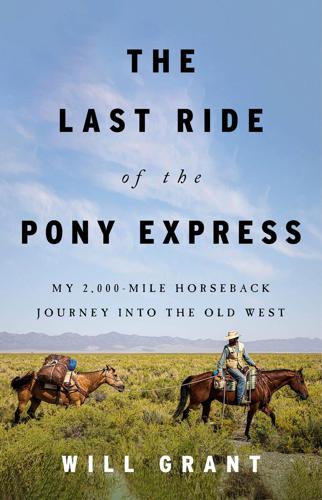
The Last Ride of the Pony Express: My 2,000-Mile Horseback Journey Into the Old West
by
Will Grant
Published 14 Oct 2023
A former Mormon dean of the school, Kim Clark, led the program until he was recalled by the head of the church to lead Brigham Young University-Idaho in 2005. When asked if it was a difficult decision to leave Cambridge for Idaho, Clark replied that a phone call from the head of the church was as good as a phone call from a prophet.10 Clayton Christensen, a church leader who developed the theory of disrupted innovation and authored the book The Innovator’s Dilemma: The Revolutionary Book That Will Change the Way You Do Business, is a star business school professor for the Mormons. Another star is Mitt Romney, who graduated from Brigham Young University in 1971 and then attended Harvard Business School.

There's Got to Be a Better Way
by
Nelson P. Repenning
and
Donald C. Kieffer
Published 26 Aug 2025
Questions always come up, and perhaps the one that is most interesting and important typically emerges near the end of a session: Does using dynamic work design make your business more prone to being disrupted? The notion of disruption was first popularized by Harvard Business School professor Clayton Christensen, who documented a series of cases in which powerful incumbent firms were slow to respond to technological innovations and ended up losing ground in markets they once dominated. While Christensen outlined a specific set of dynamics, popular use of the term now includes any technology or event that threatens an existing business.

The Power of Pull: How Small Moves, Smartly Made, Can Set Big Things in Motion
by
John Hagel Iii
and
John Seely Brown
Published 12 Apr 2010
As we become more comfortable with our ability to achieve our potential at these levels, we will begin to see more and more opportunities to amplify our potential even further by reshaping broader and broader arenas. We will also have more insight into, and experience with, the pull techniques required to pursue shaping strategies. How Shaping Strategies Are Different from Other Strategies Shaping strategies differ significantly from other well-known strategies. Clayton Christensen and Michael Raynor have painted a very compelling picture of the potential to pursue disruptive innovation strategies.9 These strategies can generate enormous wealth for the innovator but, in general, they are different from the strategies we are discussing on two important dimensions. First, they often involve a single company making significant commitments to a disruptive innovation in technology or business design, rather than an individual or group bringing together very large numbers of companies to make complementary investments.
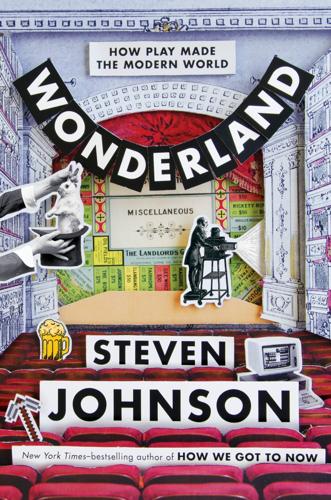
Wonderland: How Play Made the Modern World
by
Steven Johnson
Published 15 Nov 2016
The innovation that triumphs at the end of this sequence is often inferior in many ways to its rivals: remember that cinema, for all its advantages, lacked color for its first fifty years, and even in the age of 3-D IMAX, movies lack the 360-degree vista of the Panorama. But cinema was not a classic Clayton Christensen–style disruption where an inferior but cheap new product wipes out a more fully featured but expensive rival. As alluring as the mechanical dancers were at Merlin’s, no one mistook them for genuine human beings. Once you could project images of actual people onto the screen—dancing and gesticulating and emoting, even without color or sound—the appeal of magic-lantern specters dissolved into thin air.

Most Likely to Succeed: Preparing Our Kids for the Innovation Era
by
Tony Wagner
and
Ted Dintersmith
Published 17 Aug 2015
Other priorities—higher rankings, growing enrollment, winning teams, bigger and better facilities, more revenue from sideline businesses, more research grants—have replaced learning as the primary touchstone for decision making.4 Meanwhile, the college “market” is being profoundly disrupted by the availability of free or low-cost online courses and alternate pathways for acquiring job skills, as we’ll see in chapter 7. Business guru Clayton Christensen believes that, because the value proposition for college has declined so radically and the finances of many colleges are so shaky, “15 years from now half of US universities may be in bankruptcy.”5 (We’re a little more optimistic than our friend Clayton. We believe that many will become assisted living homes!)
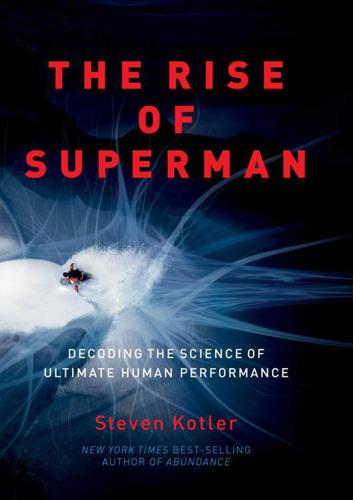
The Rise of Superman: Decoding the Science of Ultimate Human Performance
by
Steven Kotler
Published 4 Mar 2014
Page felt otherwise: “We both went to Montessori schools, and I think it was part of that training of not following rules and orders, and being self-motivated, questioning what’s going on in the world, doing things a little bit differently.” they too found a Montessori connection: Jeffrey Dyer, Hal Gregersen, and Clayton Christensen, “The Innovator’s DNA,” Harvard Business Review, December 2009. 179 “Go back to Roger Bannister’s time”: Mike Gervais, AI, April 2013. 180 “The idea was to develop”: Leslie Sherlin, AI, February 2013. “quantified Self” devices: Lila Battis, “Fitness Trackers Compared!” Men’s Health.
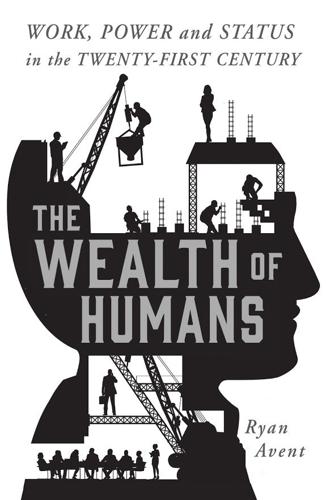
The Wealth of Humans: Work, Power, and Status in the Twenty-First Century
by
Ryan Avent
Published 20 Sep 2016
Value in society is increasingly built on ideas, and the firms that do best in this society are those that can manipulate ideas most effectively. The information-processing role of the firm can help us to understand the phenomenon of ‘disruption’, in which older businesses struggle to adapt to powerful new technologies or market opportunities. The notion of a ‘disruptive’ technology was first described in detail by Clayton Christensen, a scholar at Harvard Business School.4 Disruption is one of the most important ideas in business and management to emerge over the last generation. A disruptive innovation, in Christensen’s sense, is one that is initially not very good, in the sense that it does badly on the performance metrics that industry leaders care about, but which then catches on rapidly, wrong-footing older firms and upending the industry.
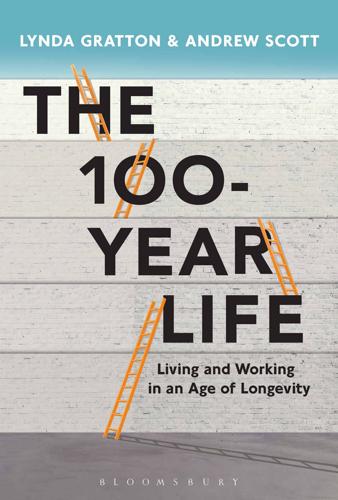
The 100-Year Life: Living and Working in an Age of Longevity
by
Lynda Gratton
and
Andrew Scott
Published 1 Jun 2016
In order to support those destined to live long lives, the agenda faced by educational institutions is fourfold: how to incorporate new learning technologies and experiential learning; how to break down boundaries between age groups; how to think more deeply about ways to teach creativity, innovation, humanity and empathy; and how to rapidly expand practical specialisms in order to ensure that education wins in its race against technology. It is no surprise therefore that Harvard Business School Professor Clayton Christensen argues that technology makes education ripe for ‘disruptive innovation’, and that this will have a positive impact on lifelong learning. Investments in digital innovations will transform the classroom, with online teaching, MOOCs, digital degrees and certifications with new providers and new entrants.

The Age of Stagnation: Why Perpetual Growth Is Unattainable and the Global Economy Is in Peril
by
Satyajit Das
Published 9 Feb 2016
Further underlying the nature of modern innovation, in 2015 Ashley Madison, an online site for people seeking extramarital affairs, announced plans to raise US$200 million to expand the market for adultery. Industrial revolution 3 emphasizes disruptive technologies, a term associated with Harvard professor Clayton Christensen and his influential 1997 book The Innovator's Dilemma. It differentiated between sustainable innovations, which improve products and make valuable changes for a firm's current customers, and disruptive innovations—cheaper, poorer-quality products that initially target less profitable customers so as to undercut existing businesses, with the object of eventually dominating the industry.

The End of Accounting and the Path Forward for Investors and Managers (Wiley Finance)
by
Feng Gu
Published 26 Jun 2016
All respondents to the annual “Business R&D and Innovation Survey,” conducted by the National Science Foundation with the Census Bureau—essentially all US companies conducting R&D—routinely report this classification, along with other important details related to R&D. But you won’t find this important information in financial reports. 9. In 2013, almost 6,500 patent infringement lawsuits were filed in the United States (PricewaterhouseCoopers, 2014 Patent Litigation Study, at www.pwc .com). 10. The classic on disruption: Clayton Christensen, The Innovator’s Dilemma: When New Technologies Cause Great Firms to Fail (Boston: Harvard Business School Press, 1997). 11. See Internal Control—Integrated Framework, Committee of Sponsoring Organizations of the Treadway Commission, December 2011, at www.ic.coso.org (“Risk assessment also requires management to consider the impact of possible changes in the external environment . . . ” p. 51). 12.
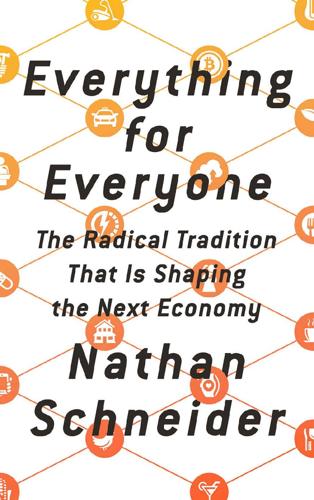
Everything for Everyone: The Radical Tradition That Is Shaping the Next Economy
by
Nathan Schneider
Published 10 Sep 2018
There, Jimmy Boggs saw disruption decades ago, when a brew of robots, racism, and imports from Asia shut down the city’s factories, and when what remained of the auto industry fled to the whiter suburbs—consigning that capital of black America into decline and collapse. The jargon of disruption derives from a more precise academic concept. Harvard Business School professor Clayton Christensen began honing what he came to call “disruptive innovation” in the mid-1990s and early 2000s, referring to how a simple development, often from an oblique end of a market, can refashion the rules of the market in which it operates.5 In this way, the cheaper, less-mighty cars from Japan took on Detroit’s Cadillacs.

The Fourth Revolution: The Global Race to Reinvent the State
by
John Micklethwait
and
Adrian Wooldridge
Published 14 May 2014
A decade or so ago these Indian pioneers would have been nothing more than an interesting sideshow to health-care reformers in the West. Today their ideas are gaining traction as governments everywhere look to save money. Reform, a British think tank dedicated to reforming the basic building blocks of the welfare state and with close ties to Downing Street, has championed Shetty and Aravind. Clayton Christensen of the Harvard Business School, perhaps the world’s most respected writer on innovation, thinks the public sector will be upset by what he calls “mutants”—new organisms spinning out of it. The point about the mutants is that they come from anywhere. Christensen’s mutants can dethrone powerful producer groups.

Green Swans: The Coming Boom in Regenerative Capitalism
by
John Elkington
Published 6 Apr 2020
The increasingly obvious shortcomings of the H1 system spur growing innovation, although much of this may be captured by the existing system, for example through mergers and acquisitions. This creates a second horizon, H2. Eventually, the new, innovative approaches become more effective than the original system, creating an inflection point, a point of disruption. Clayton Christensen flagged this as the onset of the “innovator’s dilemma”: Should you protect your core business that is at risk, or instead invest in the innovations that look as if they might replace it? Often, breakthrough innovations—including exponential Green Swan solutions—emerge at the edges of the current system.
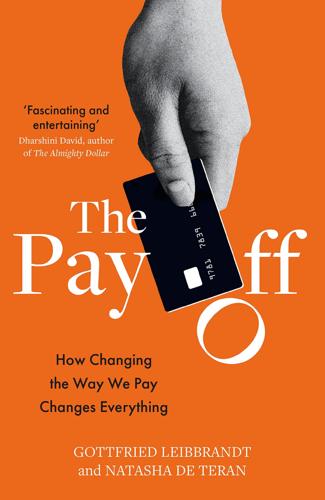
The Pay Off: How Changing the Way We Pay Changes Everything
by
Gottfried Leibbrandt
and
Natasha de Teran
Published 14 Jul 2021
The new competitors came in with much more convenient alternatives for low-value payments. They took business from banks to be sure, but in all three cases they also unlocked new markets: transactions that weren’t happening before because there was no convenient way to make them. It is often pointed out that this dynamic looks just like that famously described by Clayton Christensen in The Innovator’s Dilemma: competitors with new technology come in at the low end, work their way up and ultimately disrupt and dislodge the incumbents. The analogy isn’t perfect, however: while new entrants have ‘worked their way up’ to larger payments, some important factors have shielded the incumbents, in this case, the banks.
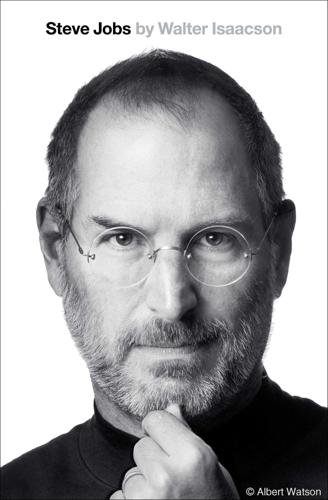
Steve Jobs
by
Walter Isaacson
Published 23 Oct 2011
Nor would he allow other online stores to sell songs for use on iPods. A variety of experts said this would eventually cause Apple to lose market share, as it did in the computer wars of the 1980s. “If Apple continues to rely on a proprietary architecture,” the Harvard Business School professor Clayton Christensen told Wired, “the iPod will likely become a niche product.” (Other than in this case, Christensen was one of the world’s most insightful business analysts, and Jobs was deeply influenced by his book The Innovator’s Dilemma.) Bill Gates made the same argument. “There’s nothing unique about music,” he said.
…
But over the next few years, the hub is going to move from your computer into the cloud. So it’s the same digital hub strategy, but the hub’s in a different place. It means you will always have access to your content and you won’t have to sync. It’s important that we make this transformation, because of what Clayton Christensen calls “the innovator’s dilemma,” where people who invent something are usually the last ones to see past it, and we certainly don’t want to be left behind. I’m going to take MobileMe and make it free, and we’re going to make syncing content simple. We are building a server farm in North Carolina.

On the Edge: The Art of Risking Everything
by
Nate Silver
Published 12 Aug 2024
*15 Andreessen was referring to the New York Times’s election model, although their final forecast actually gave Clinton “only” an 85 percent chance of winning, not a number in the 90s. FiveThirtyEight’s final forecast gave Clinton a 71 percent chance, by comparison. *16 And ChatGPT itself was heavily funded by Microsoft and the other established players who formed OpenAI. *17 This is related to Clayton Christensen’s idea of the innovator’s dilemma—spelled out in his book of the same name. Christensen was particularly concerned about commitments to customers—that big companies maintain too many product lines and features to keep existing customers happy—but the metaphor can be extended to other commitments like those to shareholders, employees, political allies, and regulators
…
Infinite ethics: A branch of moral philosophy concerned with the problems of an infinite universe, which often gives rise to paradoxes or counterintuitive conclusions. Inflection point: The point at which a curve sharply changes direction—or less formally, when the behavior of a system begins to radically change. Innovator’s dilemma: Clayton Christensen’s theory for why leaner insurgent companies tend to displace more powerful incumbents. Christensen’s thesis focused on companies being weighed down by too many commitments to existing customers, but the concept can be extended to other commitments, like those to shareholders and employees. Interpretability (AI): The degree to which the behavior and inner workings of an AI system can be readily understood by humans.
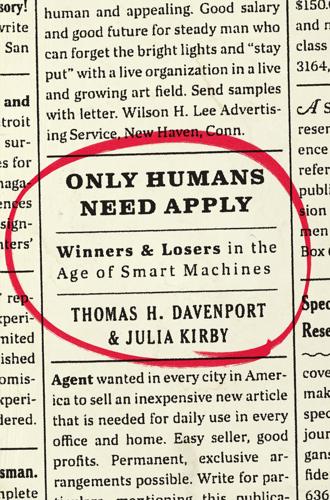
Only Humans Need Apply: Winners and Losers in the Age of Smart Machines
by
Thomas H. Davenport
and
Julia Kirby
Published 23 May 2016
Mike Batty and Alice Kroll, “Automated Life Underwriting: A Survey of Life Insurance Utilization of Automated Underwriting Systems,” prepared for the Society of Actuaries, 2009, file:///C:/Users/jkirby/Downloads/research-life-auto-underwriting.pdf. 14. Thomas Arnett, “How Technology Displaces Teachers’ Jobs,” Clayton Christensen Institute for Disruptive Innovation, November 19, 2014, http://www.christenseninstitute.org/how-technology-displaces-teachers-jobs/#sthash.PyjrVrNk.dpuf. 15. David Port, “Reckoning with Robo-Advisors,” LifeHealthPRO, December 31, 2014, http://www.lifehealthpro.com/2014/12/31/reckoning-with-robo-advisors.

The Corruption of Capitalism: Why Rentiers Thrive and Work Does Not Pay
by
Guy Standing
Published 13 Jul 2016
Many platforms claim to be part of a new ‘sharing economy’ that is boosting efficiency and incomes through increased utilisation of underused assets. However, they are in fact expanding the scope of commodified labour and the amount of unpaid work-for-labour, as we will see. All bypass the firm as traditionally understood. They are creating ‘platform capitalism’. In a seminal book, The Innovator’s Dilemma, Clayton Christensen argued that innovation was ‘disruptive’ if it had the potential to generate new products or services or to deliver them in radically new ways.3 He and colleagues later claimed that the provision of services through digital platforms did not meet two criteria for disruptive innovation – that the innovation must target the low end of an existing market and mainly draw in non-consumers of existing options.4 But digital platforms surely qualify as disruptive on both counts.
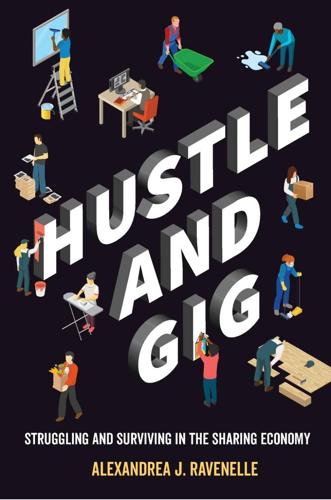
Hustle and Gig: Struggling and Surviving in the Sharing Economy
by
Alexandrea J. Ravenelle
Published 12 Mar 2019
In this view—and it is not insignificant—the idea of hacking comes from a position of arrogance.”99 Likewise, Silicon Valley’s favorite phrase, “let’s break shit,” is part of Schumpeter’s “creative destruction,” a theory of economic progress in which new business rises like a phoenix from the ashes of old business.100 Creative destruction has also been described as an early version of Clayton Christensen’s hypothesis of “disruptive innovation,” in which economies flourish when start-ups replace established firms.101 And of course, to disrupt the status quo of established industries is part of the goal of the sharing economy. When the term sharing economy first entered the public lexicon, the sharing economy itself looked like a step forward.
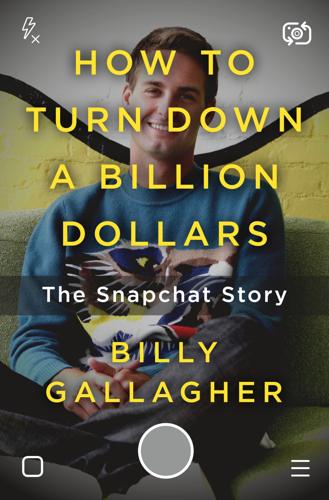
How to Turn Down a Billion Dollars: The Snapchat Story
by
Billy Gallagher
Published 13 Feb 2018
It has to be so hardwired into who we are that even talking about it seems redundant. The Internet is not a friendly place. Things that don’t stay relevant don’t even get the luxury of leaving ruins. They disappear. Like any good religion, the cult-like startup world has a holy scripture: The Innovator’s Dilemma, a 1997 book by Harvard Business School professor Clayton Christensen. Christensen wrote the book before “disruptive innovation” was a punchline on the HBO comedy Silicon Valley, and it has managed to maintain its revered status for two decades. We can see the core concept of The Innovator’s Dilemma at work in Snapchat’s story: a new entrant makes a product that is so far beneath what an incumbent does that it seems silly—why would we waste our time down there?
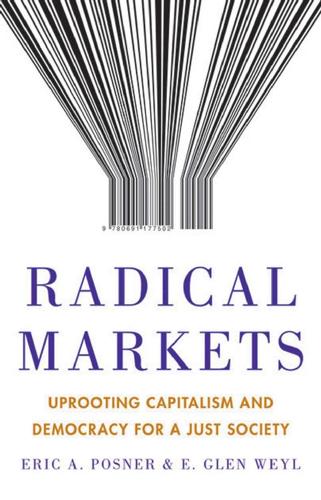
Radical Markets: Uprooting Capitalism and Democracy for a Just Society
by
Eric Posner
and
E. Weyl
Published 14 May 2018
In his 2016 landmark sociological study of urban housing in the United States, Evicted, sociologist Matthew Desmond suggests that landlords in poor neighborhoods often buy up enough housing to have substantial power to drive up rents by holding units vacant and artificially depressing supply.55 Yet as far as we know, no antitrust case has ever been brought against such local but potentially devastating attempts at monopolization. Another growing area where antitrust goes underenforced is the digital economy. Competition there often happens through the sort of “disruption” highlighted by business scholar Clayton Christensen in his 1997 classic The Innovator’s Dilemma, where entry by a new firm or product changes the nature of the market rather than produces a better or cheaper version of an existing product.56 For example, Facebook is currently probably the most important competitor of Google (for user attention and advertiser dollars), but began in a completely unrelated business (of social networking as opposed to search functions).
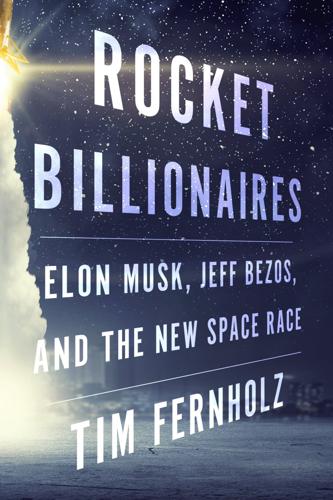
Rocket Billionaires: Elon Musk, Jeff Bezos, and the New Space Race
by
Tim Fernholz
Published 20 Mar 2018
The NASA team sought help answering the latter two questions by recruiting Alan Marty, who had worked at several tech companies and then led a team of venture capitalists at J. P. Morgan. Marty’s job was to help NASA’s executives get into an entrepreneurial mind-set. He brought dozens of copies of Clayton Christensen’s book The Innovator’s Dilemma—an iconic Silicon Valley tome about how stagnant companies are disrupted by start-ups armed with outside-the-box thinking—to hand out at every NASA meeting he participated in. With Marty guiding the financial evaluation and Lindenmoyer on the technical side, NASA began considering its options.

A New History of the Future in 100 Objects: A Fiction
by
Adrian Hon
Published 5 Oct 2020
A mere fraction of their capital could be spent to create new hydroponics kits or design more efficient ships, and their economies of scale—not to mention their established relationships with suppliers, regulators, and customers—would surely demolish any upstart companies. There were two problems though. The first stemmed from Clayton Christensen’s classic problem identified in The Innovator’s Dilemma, in which successful incumbent companies become fixated on increasing their sales and short-term share price rather than developing risky but innovative new products. The second was the fact that economies of scale were beginning to vanish.
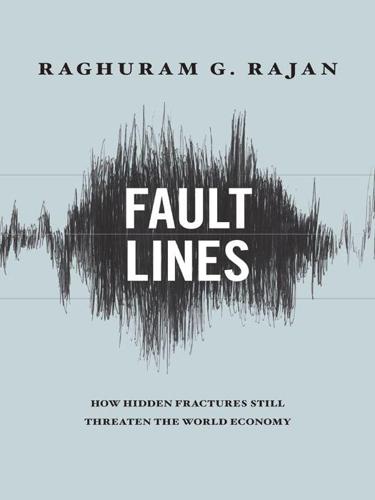
Fault Lines: How Hidden Fractures Still Threaten the World Economy
by
Raghuram Rajan
Published 24 May 2010
Rosengren, “Unnatural Selection: Perverse Incentives and the Misallocation of Credit in Japan,” American Economic Review 95, no. 4 (September 2005): 1144–66; Takeo Hoshi and Anil Kashyap, Corporate Financing and Governance in Japan: The Road to the Future (Cambridge, MA: MIT Press, 2004). 11 See “A Fork in the Road,” Financial Times, December 11, 2009. 12 See, for example, Clayton Christensen, The Innovator’s Dilemma (New York: Harper Paperbacks, 2003). 13 National Science Foundation, Science and Engineering Indicators, chapter 5, Appendix Table 5–43, National Science Foundation, www.nsf.gov/statistics/seind10/c5/ c5s4.htm, accessed March 10, 2010. 14 Alesina and Glaeser, Fighting Poverty, 19. 15 Talkin’ ’bout My Generation: The Economic Impact of Aging U.S.

Augmented: Life in the Smart Lane
by
Brett King
Published 5 May 2016
What sort of disruption to employment and wealth will come over the next 20 to 30 years as we emerge into a new age? ____________ 1 The term “disruption” is often overused today. When we refer to “disruption”, we generally refer to disruptive innovations that fill unmet or future needs or created entirely new markets, and in doing so displace incumbents who fail to adapt (see Clayton Christensen’s The Innovator’s Dilemma). 2 In this case, until 25 per cent adoption in the US economy 3 “This is the best iPhone yet!” All Apple® and iPhone® trademarks are the property of Apple Inc. 4 “Cramming more components onto integrated circuits” by Gordon E. Moore was published in Electronics on 19 April 1965. 5 Gardiner Hubbard and Thomas Sanders 6 The equivalent of US$2.5 million in 2010 7 Gerald Sussman.
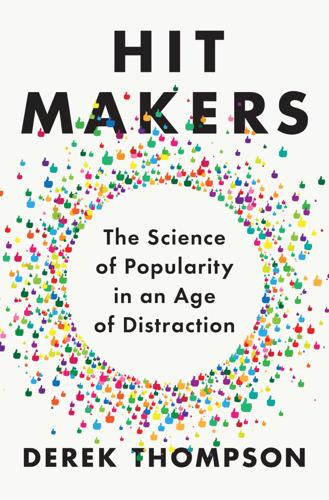
Hit Makers: The Science of Popularity in an Age of Distraction
by
Derek Thompson
Published 7 Feb 2017
“the cathode-ray tube had out-and-out scooped the newspapers”: Will Fowler, Reporters: Memoirs of a Young Newspaperman (Malibu, CA: Roundtable, 1991), 160–61. “the television convention”: “Television Convention,” Newsweek, July 14, 1952. “informality, feeling, and emotion”: Karla Gower, Public Relations and the Press: The Troubled Embrace (Chicago: Northwestern University Press, 2007), 29. an upstart company will topple: Clayton Christensen, The Innovator’s Dilemma (New York: Harvard Business Review Press, 1997). My sentence here is an impressionistic reframing of Christensen’s thesis. It is, without question, informed by The Innovator’s Dilemma, but it’s not really an attempt to summarize the book. newspapers sold per person plummeted: Ken Goldstein, “Sixty Years of Daily Newspaper Circulation Trends,” Canadian Journalism Project, 2011.

Cryptoassets: The Innovative Investor's Guide to Bitcoin and Beyond: The Innovative Investor's Guide to Bitcoin and Beyond
by
Chris Burniske
and
Jack Tatar
Published 19 Oct 2017
If Ethereum takes off as a decentralized world computer, will that have any effect on companies with cloud computing offerings, such as Amazon, Microsoft, and Google? If companies can get paid more quickly and with lower transaction fees using the latest cryptocurrency, will that have an impact on credit card providers like Visa and American Express? EXPONENTIAL DISRUPTION Clayton Christensen, a professor at Harvard Business School, wrote the seminal text on how large companies, often referred to as incumbents, struggle with maneuvering around exponential change. In The Innovator’s Dilemma: When New Technologies Cause Great Firms to Fail, Christensen makes no qualms about how even the most well managed of firms can fail when confronted with a technology that threatens to disrupt their market.
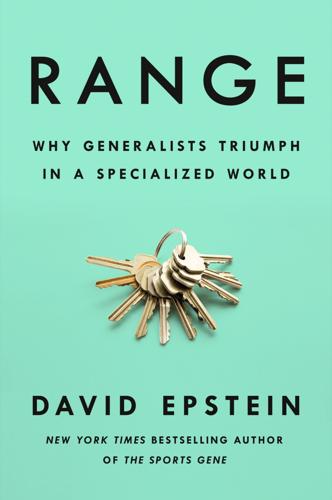
Range: Why Generalists Triumph in a Specialized World
by
David Epstein
Published 1 Mar 2019
“If I can speak without fear of being misunderstood,” the president explained, “I would like to say that Nintendo is not producing next-generation game consoles.” The Wii used extremely simple games and technology from a previous console, but motion-based controls were a literal game changer. Given its basic hardware, the Wii was criticized as not innovative. Harvard Business School professor Clayton Christensen argued that it was actually the most important kind of innovation, an “empowering innovation”—one that creates both new customers and new jobs, like the rise of personal computers before it—because it brought video games to an entirely new (often older) audience. Nintendo “simply innovated in a different way,” Christensen and a colleague wrote.

How I Built This: The Unexpected Paths to Success From the World's Most Inspiring Entrepreneurs
by
Guy Raz
Published 14 Sep 2020
The company had just become fully employee owned, complete with an employee stock ownership plan (ESOP) that forged a real path to truly significant wealth for consultants like Jim. At the same time, he had already worked alongside a quartet of future luminaries: a young Mitt Romney; a thirtysomething Benjamin Netanyahu; the soon-to-be-legendary business school professor and author Clayton Christensen, whose seminal work, The Innovator’s Dilemma, helped shape twenty-first-century entrepreneurship; and future hedge fund billionaire John Paulson, who would make his fortune virtually overnight betting against the subprime lending market with credit default swaps some twenty-five years later.
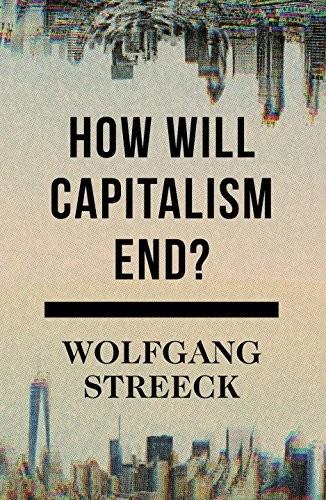
How Will Capitalism End?
by
Wolfgang Streeck
Published 8 Nov 2016
Merton, ‘The Matthew Effect in Science’, Science, vol. 159, no. 3810, 1968, pp. 56–63. 60And social theory shifts, or drifts, from institutionalism to rational choice, to the extent that it desires to be affirmative, or to biological behaviourism. 61Hans Gerth and C. Wright Mills, Character and Social Structure: The Psychology of Social Institutions, New York: Harcourt, Brace 1953. 62The term was invented by Clayton Christensen (The Innovator’s Dilemma: When New Technologies Cause Great Firms to Fail, Boston, MA: Harvard Business Review Press 1997) and subsequently became vastly popular among business school academics and managers. For a critical assessment see Jill Lepore, ‘The Disruption Machine: What the gospel of innovation gets wrong’, New Yorker, 23 June 2014.
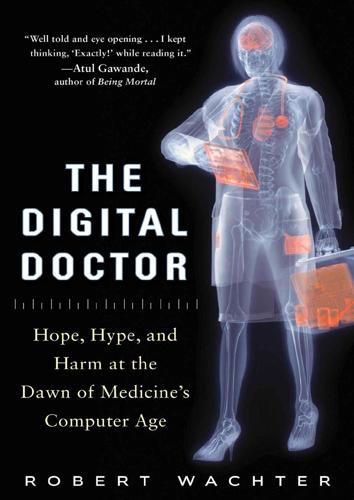
The Digital Doctor: Hope, Hype, and Harm at the Dawn of Medicine’s Computer Age
by
Robert Wachter
Published 7 Apr 2015
was typical of the notes from Katie I’d find in the margin); how landing a single great quote or fresh insight from an hour-long interview represents a stunning success. For this book and so much more, I owe her everything. Notes Preface xi that long-awaited “disruptive innovation” This concept was described by Clayton Christensen in C. Christensen, The Innovator’s Dilemma: The Revolutionary Book That Will Change the Way You Do Business (Boston: Harvard Business Review Press, 1997). For its relevance to healthcare, see C. M. Christensen, J. H. Grossman, and J. Hwang, The Innovator’s Prescription: A Disruptive Solution for Health Care (New York: McGraw-Hill, 2009). xii I even blog and tweet My blog is Wachter’s World, and it can be found at www.wachtersworld.org.
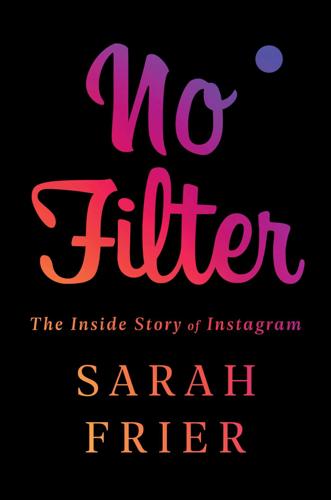
No Filter: The Inside Story of Instagram
by
Sarah Frier
Published 13 Apr 2020
Cox told Zuckerberg he needed to let the products build independently and not become too similar. “They’ll compete a bit with each other, but if we have more unique brands, we’ll be able to reach different kinds of users.” He and Systrom had spoken extensively about using Harvard professor Clayton Christensen’s “jobs to be done” theory of product development, which states that consumers “hire” a product to do a certain task, and that its builders should be thinking about that clear purpose when they build. Facebook was for text, news, and links, for example, and Instagram was for posting visual moments and following interests.

Exponential: How Accelerating Technology Is Leaving Us Behind and What to Do About It
by
Azeem Azhar
Published 6 Sep 2021
The capabilities of a typical smartphone – high-definition colour video, high-fidelity sound, fast-action video games, scanners that transcribe text – were not available to anyone, not even the richest countries, just a couple of decades ago. When technologies develop exponentially, they lead to continually cheaper products which are able to do genuinely new things. To see this process in action, it’s worth examining the work of Horace Dediu. A business analyst, Dediu trained with Clayton Christensen, the world-renowned Harvard academic who wrote the bible of many a Silicon Valley tech firm, The Innovator’s Dilemma. Dediu carries a well-deserved reputation in his own right, thanks to his research into patterns of innovation. Over the last two decades, he has analysed more than 200 years of historical data, to examine how quickly technologies have spread through the American economy.9 He casts a wide net, meticulously tracking a broad range of innovations – flush toilets, the electrification of printing, the spread of roads, the vacuum cleaner, diesel locomotives, power steering in cars, electric arc furnaces, artificial fibres, ATM machines, digital cameras, social media and computer tablets, among many others.

Human Frontiers: The Future of Big Ideas in an Age of Small Thinking
by
Michael Bhaskar
Published 2 Nov 2021
Yet in the latter case, new media and stylistic forms can be seen as broadening the possibilities of experience in an analogous way, even if we should be alive to the various characters and imperatives of the many different frontiers. 2 Khan and Wiener (1967) 3 Greenspan and Wooldridge (2018), p. 35 4 Ibid. 5 Graeber (2016), p. 105 6 Douthat (2020) 1 HOW BIG IDEAS WORK 1 Mokyr (2018) 2 McCloskey (2017) 3 Ibid., p. xiii 4 See both Mokyr (2011; 2017), and Henrich (2020) for the deeper underlying psychological component behind this. 5 Howes (2017) 6 Jacobs (2014) 7 Mokyr (2017) 8 Many scholars come down on one side or another, but as the entire oeuvre of Joel Mokyr goes to show it's almost always more complicated than that. 9 I would like to thank DeepMind Research Engineer Daniel Slater in particular for his suggestions with regard to this phrasing. 10 See for example Rogers Hollingsworth (2007) for this model of ideas. 11 Kuhn (2012), p. xliii 12 Ibid., p. 174 13 Ibid., p. 85 14 Ibid., p. 207 15 Gould (2007), p. 3 16 Rather than a straight porting of the concept he was willing to explore ‘homologies’, but only in a limited set of circumstances. Ibid., p. 266 17 Mokyr (1999) 18 Christensen (2013); Perez (2002). On a more local level we might look to what Louis Galambos called ‘formative’ innovations and Clayton Christensen ‘disruptive’ innovations. 19 Bahcall (2019) 20 Thiel (2014) 21 Kelly et al (2020) 22 For an alternative methodology with technology see for example Packalen and Bhattacharya (2012) or Funk and Owens-Smith (2017). 23 See for example a paper like Bhattacharya and Packalen (2020) for means of categorising science. 24 See Jockers (2013) or Moretti (2013) 25 Henrich (2009) 26 Epstein (2019) 27 See Hargadon (2003) for the concept of ‘technology brokering’ more widely, or Ridley (2020) for more on recombinant innovation.

New Laws of Robotics: Defending Human Expertise in the Age of AI
by
Frank Pasquale
Published 14 May 2020
Hugo Duncan, “Robots to Steal 15 Million of Your Jobs, Says Bank Chief: Doom-Laden Carney Warns Middle Classes Will Be ‘Hollowed Out’ by New Technology,” Daily Mail, December 5, 2008, http://www.dailymail.co.uk/news/article-4003756/Robots-steal-15m-jobs-says-bank-chief-Doom-laden-Carney-warns-middle-classes-hollowed-new-technology.html#ixzz4SDCt2Pql. 78. See, for example, Clayton M. Christensen, Clayton Christensen, Curtis W. Johnson, and Michael B. Horn, Disrupting Class (New York: McGraw-Hill, 2008) and Clayton M. Christensen, Jerome Grossman, and Jason Hwang, The Innovator’s Prescription: A Disruptive Solution for Health Care (New York: McGraw-Hill, 2009), which examines disruptive innovations in health care. 79.
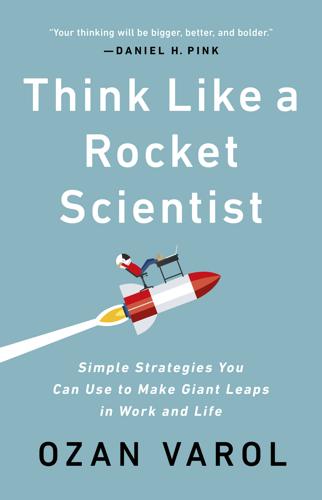
Think Like a Rocket Scientist: Simple Strategies You Can Use to Make Giant Leaps in Work and Life
by
Ozan Varol
Published 13 Apr 2020
In less than four weeks—a record time for designing a mission—they put together a mission concept using Pathfinder’s landing system. The proposal eventually became reality. NASA selected Adler’s design largely because it had the highest probability of getting the spacecraft safely to Mars. “Every answer,” Harvard Business School professor Clayton Christensen says, “has a question that retrieves it.”11 The answer is often embedded within the question itself, so the framing of the question becomes crucial to the solution. Charles Darwin would agree. “Looking back,” he wrote in a letter to a friend, “I think it was more difficult to see what the problems were than to solve them.”12 Think of questions as different camera lenses.

The Investment Checklist: The Art of In-Depth Research
by
Michael Shearn
Published 8 Nov 2011
This enables the business to continually improve the quality of its veterinary diagnostics and to continually widen its competitive advantage. In fact, IDEXX controls more than 65 percent of its market, and it’s now the largest global player in the reference lab market.9 Are R&D Efforts Successful? Just because a business spends a large percentage of revenue on R&D does not mean that it will create successful products. Clayton Christensen, a professor at Harvard who has studied innovation extensively, reminds us of two rather subtle things about R&D spending. First, most innovation starts out in the wrong direction: Therefore, spending more money upfront can mean more wasted money. Second, breakthroughs tend to happen when resources are most scarce.

Machines of Loving Grace: The Quest for Common Ground Between Humans and Robots
by
John Markoff
Published 24 Aug 2015
Like many of the “Singularitarians,” he points to a portfolio of social engineering options for softening the impact. Brynjolfsson and McAfee in The Second Machine Age sketch out a broad set of policy options that have the flavor of a new New Deal, with examples like “teach the children well,” “support our scientists,” “upgrade infrastructure.” Others like Harvard Business School professor Clayton Christensen have argued for focusing on technologies that create rather than destroy jobs (a very clear IA versus AI position). At the same time, while many who believe in accelerating change agonize about its potential impact, others have a more optimistic perspective. In a series of reports issued beginning in 2013, the International Federation of Robotics (IFR), established in 1987 with headquarters in Frankfurt, Germany, self-servingly argued that manufacturing robots actually increased economic activity and therefore, instead of causing unemployment, both directly and indirectly increased the total number of human jobs.

Bank 3.0: Why Banking Is No Longer Somewhere You Go but Something You Do
by
Brett King
Published 26 Dec 2012
You told customers, “Don’t reply to this email because we won’t answer it,” or, when they did email, you just ignored them. This still goes on today. I’m not going to embark on a lengthy discussion around customer service, culture and how you need to build that. There is a plethora of reference works on that subject, including the work of Ron Kaufman (Up Your Service), Micah Solomon, Clayton Christensen, Ken Blanchard, and Gary Vaynerchuk, which are amongst my favourites. However, I will attempt to describe the problem and an organisational fix to the silos that frustrate service and sales within the retail financial services space. “I genuinely believe that any business can create a competitive advantage through giving outstanding customer care.”
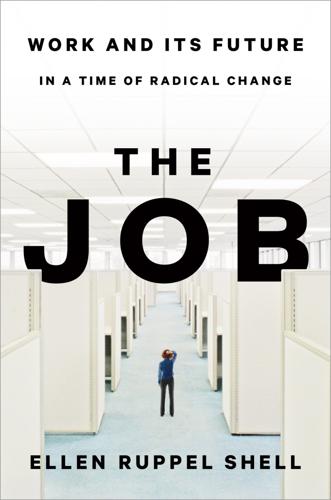
The Job: The Future of Work in the Modern Era
by
Ellen Ruppel Shell
Published 22 Oct 2018
This adjustment clearly correlates with top brass making more money (at this writing, Gabe Newell has a reported net worth of $5.5 billion), but its success at spawning innovation is less clear. “Flat hierarchies are supposed to result in disruptive innovation,” Ellsworth said. “But what happened at Valve wasn’t innovative. It was just disruptive.” The concept of “disruptive innovation,” popularized by Harvard Business School economist Clayton Christensen in his 1997 best seller The Innovator’s Dilemma, is all but de rigeur in business circles, particularly in the tech industry. Yet while it’s common for employers to encourage staff to be “disruptive,” what they actually mean by this is uncertain, even, one suspects, to the employers themselves.
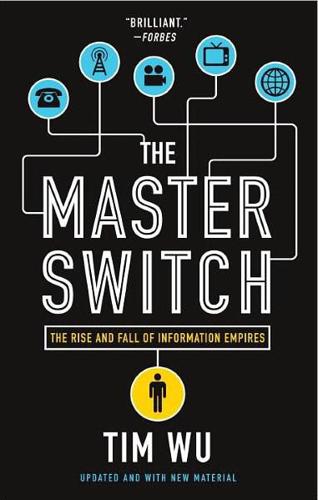
The Master Switch: The Rise and Fall of Information Empires
by
Tim Wu
Published 2 Nov 2010
This innovative distance explains why so many of those who turn an industry upside down are outsiders, even outcasts. To understand this point we need grasp the difference between two types of innovation: “sustaining” and “disruptive,” the distinction best described by innovation theorist Clayton Christensen. Sustaining innovations are improvements that make the product better, but do not threaten its market. The disruptive innovation, conversely, threatens to displace a product altogether. It is the difference between the electric typewriter, which improved on the typewriter, and the word processor, which supplanted it.5 Another advantage of the outside inventor is less a matter of the imagination than of his being a disinterested party.

The Patient Will See You Now: The Future of Medicine Is in Your Hands
by
Eric Topol
Published 6 Jan 2015
—DEBORAH DISANZO, FORMER CEO OF PHILIPS HEALTHCARE2,3 “In a typical hospital, overheads account for 85 to 90 percent of total costs because of the complexity of offering a ‘one size fits none’ offering. It turns out there are three different business models inside a hospital, and those three business models are incompatible.” —CLAYTON CHRISTENSEN When I was training to be a cardiologist in the 1980s at Johns Hopkins, it took three hospital days for a patient to undergo a cardiac catheterization. Each patient was admitted the day before the procedure to have a full evaluation, which consisted of a history and physical, chest X-ray, an electrocardiogram, and the routine laboratories.

Super Pumped: The Battle for Uber
by
Mike Isaac
Published 2 Sep 2019
San Francisco emerged as the world’s epicenter of such deals. But then the balance of power began to shift. As startups upended global infrastructure at an unprecedented pace, entrepreneurs found that old power centers had eroded and been replaced in some cases by the upstarts that sprung up around them. Clayton Christensen’s “Innovator’s Dilemma” articulated the perils that awaited any company that grew so large that it no longer saw threats coming from more nimble competitors. The venture-backed startups became the new establishment. Something else happened: Founders realized they liked being in control.

The Content Trap: A Strategist's Guide to Digital Change
by
Bharat Anand
Published 17 Oct 2016
So when we started, Torry and I realized we had to take the team elsewhere. So we literally went to another floor. Separating digital from traditional by one floor was hardly a bold move. Nor was the separation of new and old businesses particularly novel. Just a few years earlier Harvard Business School’s Clayton Christensen had advocated that approach to innovation in his bestselling book, The Innovator’s Dilemma . What was novel was what transpired next at VG —a result of instinct, experience, and accident. During the next year and a half, two events occurred that were entirely outside the managers’ control but would change their entire approach and philosophy.
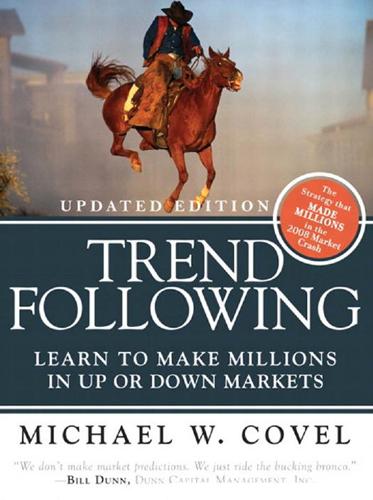
Trend Following: How Great Traders Make Millions in Up or Down Markets
by
Michael W. Covel
Published 19 Mar 2007
And thank you to the following publications and writers who generously allowed me to quote from their work: Sol Waksman and Barclay Managed Futures Report, Futures Magazine, Managed Account Reports, Michael Rulle of Graham Capital Management, and Technical Analysis of Stocks and Commodities Magazine. I am also indebted to the following authors whose works continue to be treasure troves of information and insight: Morton Baratz, Peter Bernstein, Clayton Christensen, Jim Collins, Jay Forrester, Tom Friedman, Gerd Gigerenzer, Daniel Goleman, Stephen Jay Gould, Alan Greenberg, Larry Harris, Robert Koppel, Edwin Lefevere, Michael Lewis, Jesse Livermore, Roger Lowenstein, Acknowledgments Ludwig von Mises, Lois Peltz, Ayn Rand, Jack Schwager, Denise Shekerjian, Robert Shiller, Van Tharp, Edward Thorp, Peter Todd, Brenda Ueland, and Dickson Watts.

The Future of the Internet: And How to Stop It
by
Jonathan Zittrain
Published 27 May 2009
Once you reach the top of the hierarchy, you acquire status and benefits that can soon be lost—the nice cars, the home in Brentwood, the private schools…. It doesn’t make sense to jeopardize any of that by adopting a reckless attitude towards new technologies, new markets. Moving slow, and making clear, safe progress is the mantra.23 The puzzle of why big firms exhibit such innovative inertia was placed into a theoretical framework by Clayton Christensen in his pioneering book The Innovator’s Dilemma.24 Christensen found the hard disk drive industry representative. In it, market leaders tended to be very good at quickly and successfully adopting some technological advancements, yet were entirely left behind by upstarts. To explain the discrepancy, he created a taxonomy of “sustaining” and “disruptive” innovations.

The Fissured Workplace
by
David Weil
Published 17 Feb 2014
This has long been a practice of law firms who historically would bill work at rates reflective of more specialized staff, but would staff that work with lower-cost (but internally provided) junior lawyers and paralegals. 15. A provocative discussion of the potential impact of LPOs is provided by Bruce MacEwen, drawing on Clayton Christensen’s idea of the innovator’s dilemma (Christensen 2006). See Bruce MacEwen, “Innovators at the Barricades,” Adam Smith, Esq. (blog), July 10, 2010 (available at http://www.adamsmithesq.com/2010/07/innovators_at_the_barricades/, accessed February 18, 2013). 16. This three-level market breakdown appears on a number of law blog analyses of the changing legal market.
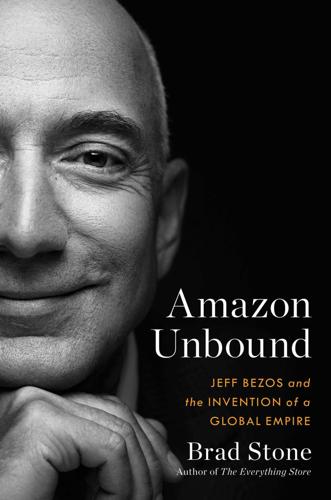
Amazon Unbound: Jeff Bezos and the Invention of a Global Empire
by
Brad Stone
Published 10 May 2021
Antitrust authorities approved those deals quickly—decisions that would later be regarded skeptically in light of Amazon’s growing dominance. It turned out that there was more depth than anyone had suspected to the increasingly fit CEO with the now clean-shaven head. He was a ravenous reader, leading senior executives in discussion of books like Clayton Christensen’s The Innovator’s Dilemma, and he had an utter aversion to doing anything conventionally. Employees were instructed to model his fourteen leadership principles, such as customer obsession, high bar for talent, and frugality, and they were trained to consider them daily when making decisions about things like new hires, promotions, and even trivial changes to products.

After Steve: How Apple Became a Trillion-Dollar Company and Lost Its Soul
by
Tripp Mickle
Published 2 May 2022
Recognizing that the market had shifted, Cue’s services team was at work creating their own streaming offering that would allow people to blend their iTunes purchases with a full catalog of songs. But the early designs of the service were discouraging. It looked more like an iTunes list than the colorful modern apps of its rivals. Influenced by Clayton Christensen’s book The Innovator’s Dilemma: When New Technologies Cause Great Firms to Fail, Jobs preferred to be a disruptor rather than be disrupted. He had famously killed the iPod Mini, Apple’s best-selling product, and replaced it with the iPod Nano, a lighter, slimmer device that had gone on to even greater sales.
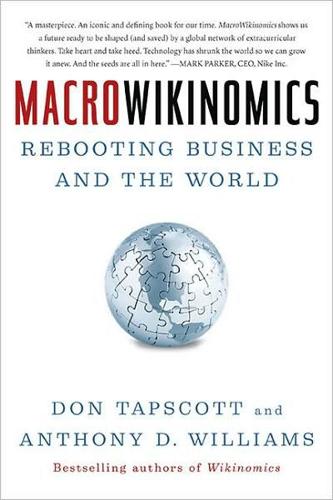
MacroWikinomics: Rebooting Business and the World
by
Don Tapscott
and
Anthony D. Williams
Published 28 Sep 2010
It’s as though popular and widely adopted products become ossified, hardened by the inherent incentive to build on their own successes. The result is that entrenched industry players are generally not motivated to develop or deploy disruptive technologies, as Harvard Business School professor Clayton Christensen has pointed out. So success breeds complacency. R&D departments are discouraged from investigating alternative technologies and so channel their resources into refining components, adding new features, or tweaking their existing product architectures. This strategy of marching down a well-defined product road map may pay dividends for some time.

The Aristocracy of Talent: How Meritocracy Made the Modern World
by
Adrian Wooldridge
Published 2 Jun 2021
Too many people see the cognitive elite as exemplars of incompetence and self-dealing rather than expertise and problem-solving. Financiers rig the financial system for their own benefit. Technologists are building ‘surveillance capitalism’. Politicians earn millions cashing in on their public service. Many members of the elite themselves suffer from the demoralized view of success. Towards the end of his career, Clayton Christensen, a leading professor at Harvard Business School became so worried about the number of his pupils who had ended up divorced, miserable or in prison that he co-authored (with James Allworth and Karen Dillon) a book on How Will You Measure Your Life? (2012), urging business types to put more emphasis on basic morality.
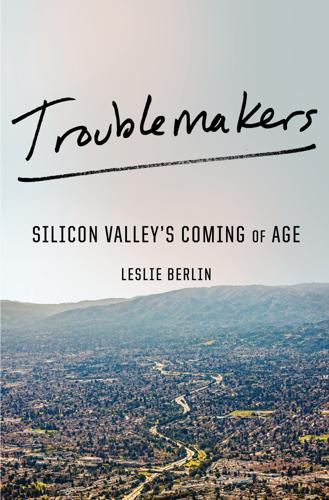
Troublemakers: Silicon Valley's Coming of Age
by
Leslie Berlin
Published 7 Nov 2017
Intel had already tried selling digital watches built around its chips, and National had done the same with calculators; both efforts had been expensive failures. “The technology is going to move faster than we can be sensible in applying it,” one National executive admitted when asked about moving into consumer markets.24 Large computer companies such as Hewlett-Packard and DEC, meanwhile, were caught in what Harvard Business School professor Clayton Christensen has called the “innovator’s dilemma”: they had committed resources to an existing market (minicomputers) and could not see, or did not want to see, an emerging market for smaller, cheaper, less powerful machines that could one day destroy the established market. Xerox, where Bob Taylor’s group and the systems science lab had designed the accessible, user-friendly Alto, was similarly stymied.
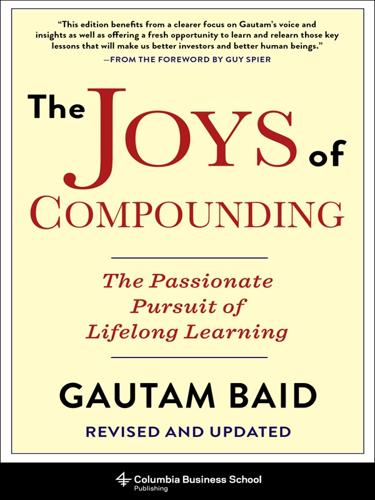
The Joys of Compounding: The Passionate Pursuit of Lifelong Learning, Revised and Updated
by
Gautam Baid
Published 1 Jun 2020
Chan Kim, Youngme Moon, and Bruce Greenwald educated me on competitive strategy. Peter Bernstein, Howard Marks, and Seth Klarman gave me the wisdom to appreciate the role of risk and risk management. Peter Thiel taught me the significance of monopolies, power laws, and highly innovative companies. Clayton Christensen made me aware of the constant threats posed by disruptive innovation. Peter Bevelin gave me some of the finest pieces of work on multidisciplinary thinking and inversion. Thornton Oglove, Howard Schilit, and Charles Mulford educated me on how to assess the quality of reported earnings. Stephen Penman and Baruch Lev taught me the finer nuances of interpreting accounting information from the vantage point of a business analyst and a value investor.

Aerotropolis
by
John D. Kasarda
and
Greg Lindsay
Published 2 Jan 2009
In Europe, wireless carriers began giving them away for free to lure new customers. Without meaning to, netbooks had paved the way for the PC’s extinction. ASUSTeK didn’t take it upon itself to invent just a new product; they invented a new category. It’s a classic example of the disruptive innovations Clayton Christensen describes in The Innovator’s Dilemma—a cheap, seemingly inferior imitator appears to gut the incumbents’ business models. In this case, their only response was to hire the insurgents to slap their names on the same models. Suddenly, the Taiwanese firms and their mainland factories were dictating terms to the rest of the industry.
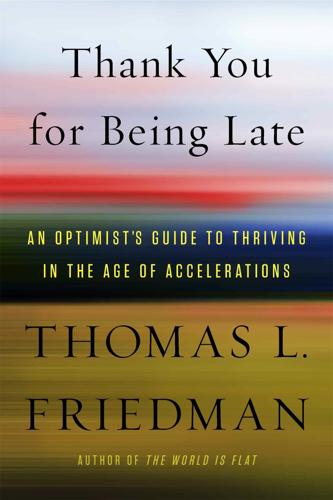
Thank You for Being Late: An Optimist's Guide to Thriving in the Age of Accelerations
by
Thomas L. Friedman
Published 22 Nov 2016
Social skills are rarely emphasized in traditional education. “Machines are automating a whole bunch of these things, so having the softer skills, knowing the human touch and how to complement technology, is critical, and our education system is not set up for that,” said Michael Horn, co-founder of the Clayton Christensen Institute, where he studies education. Miller consulted David Deming, an associate professor of education and economics at Harvard University and author of a new study on this subject. As Miller explained, Deming’s research shows that in the tech industry “it’s the jobs that combine technical and interpersonal skills that are booming, like being a computer scientist working on a group project.”
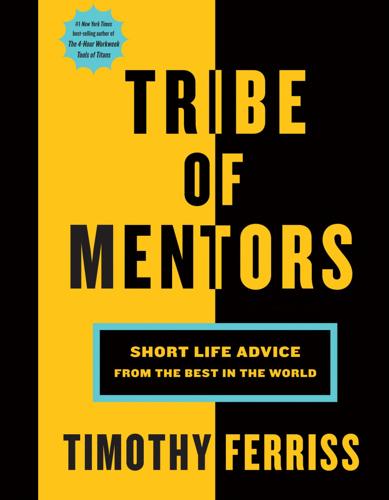
Tribe of Mentors: Short Life Advice From the Best in the World
by
Timothy Ferriss
Published 14 Jun 2017
Forethought is a virtue; remember that one day, that distant future will be now, and the choices you make today will have shaped the choices you are able to make then. This obviously has wide applications to social and environmental issues (ahem, climate change or income inequality) as well. What are bad recommendations you hear in your profession or area of expertise? “Disrupt!” When Clayton Christensen introduced the term “disruptive technology” in his 1997 business classic, The Innovator’s Dilemma: When New Technologies Cause Great Firms to Fail, he was asking a very different question than “How can I get funded by convincing VCs that there’s a huge market I can blow up?” He wanted to know why existing companies fail to take advantage of new opportunities.

This Is Service Design Doing: Applying Service Design Thinking in the Real World: A Practitioners' Handbook
by
Marc Stickdorn
,
Markus Edgar Hormess
,
Adam Lawrence
and
Jakob Schneider
Published 12 Jan 2018
Expected output: Several key insights Generating jobs-to-be-done insights Summarizing the bigger picture of what customers want to achieve when they use certain services or physical/digital products. Jobs to be done (JTBD) is a specific way to formulate insights based on a framework by Clayton Christensen. 49 JTBD describes what a product helps the customer to achieve. It can be formulated for an entire physical/digital product or service (the main aim behind a journey map). Alternatively, formulate it for certain steps within a journey map by asking yourself what a customer or user wants to get done and adding your discoveries as an additional lane on a journey map.

Power and Progress: Our Thousand-Year Struggle Over Technology and Prosperity
by
Daron Acemoglu
and
Simon Johnson
Published 15 May 2023
Building on Smith’s ideas, many free-market advocates have remained skeptical of large corporations, and some of them raise alarms when mergers and acquisitions increase the power of big players. Thwarting the workings of the market is not the only reason for being suspicious of big businesses. A well-known proposition in economics is the Arrow replacement effect, named after the Nobel Prize–winning economist Kenneth Arrow and later popularized by the business scholar Clayton Christensen as the “innovator’s dilemma.” It states that large corporations are timid innovators because they are afraid of eroding their own profits from existing offerings. If a new product will eat into the revenues a corporation enjoys from what it is already doing, why go there? In contrast, a new entrant could be very keen on doing something quite different because it cares only about those new profits.

The Innovators: How a Group of Inventors, Hackers, Geniuses and Geeks Created the Digital Revolution
by
Walter Isaacson
Published 6 Oct 2014
Paul Baran interview, in James Pelkey, “Entrepreneurial Capitalism and Innovation,” http://www.historyofcomputercommunications.info/Book/2/2.4-Paul%20Baran-59-65.html#_ftn9. 57. Paul Baran oral history, “How the Web Was Won,” Vanity Fair, July 2008; interview with Paul Baran, by Stewart Brand, Wired, Mar. 2001; Paul Baran oral history, conducted by David Hochfelder, Oct. 24, 1999, IEEE History Center; Clayton Christensen, The Innovator’s Dilemma (Harper, 1997). 58. Donald Davies, “A Historical Study of the Beginnings of Packet Switching,” Computer Journal, British Computer Society, 2001; Abbate, Inventing the Internet, 558; author’s interview with Larry Roberts; Trevor Harris, “Who Is the Father of the Internet?

The Power Law: Venture Capital and the Making of the New Future
by
Sebastian Mallaby
Published 1 Feb 2022
Xerox’s Palo Alto Research Center, or PARC, had recognized the PC as “an idea whose time has arrived” and had produced a prototype complete with mouse and graphical interface. Intel and National Semiconductor had considered making a PC, and Steve Wozniak had twice offered the Apple I design to his employer, Hewlett-Packard.[1] But all four companies had decided not to build a PC, inhibited by what the business thinker Clayton Christensen termed the “innovator’s dilemma.” Xerox worried that a computerized paperless office would harm its core photocopying business. Intel and National Semiconductor feared that making a computer would put them in conflict with existing computer makers, which were among their top customers. HP fretted that building a cheap home computer would undercut its premium machines, which sold for around $150,000.

Elon Musk
by
Walter Isaacson
Published 11 Sep 2023
The lunch lasted three hours as Musk tried to persuade and cajole Hoffman. “I took all of my money and put it in this company,” he said. “I have the right to run it.” He also argued against the strategy of focusing just on electronic payments. “That should be only an opening act for creating a real digital bank.” He had read Clayton Christensen’s book The Innovator’s Dilemma, and tried to convince Hoffman that the staid banking industry could be disrupted. Hoffman disagreed. “I told him that I believed his vision of a superbank was toxic, because we needed to focus on our payment service on eBay,” he says. Musk then switched tacks: he tried to persuade Hoffman to become the CEO.